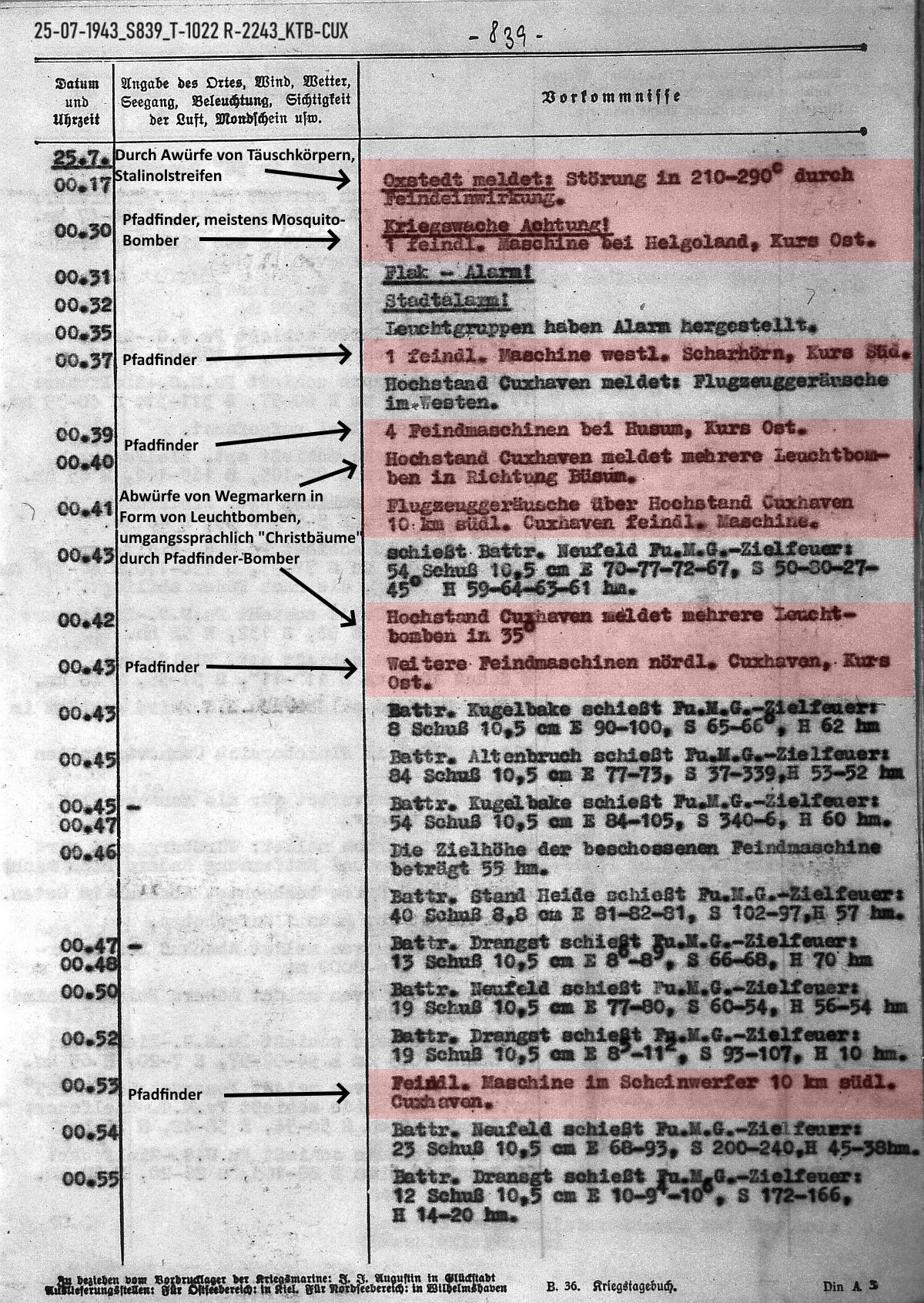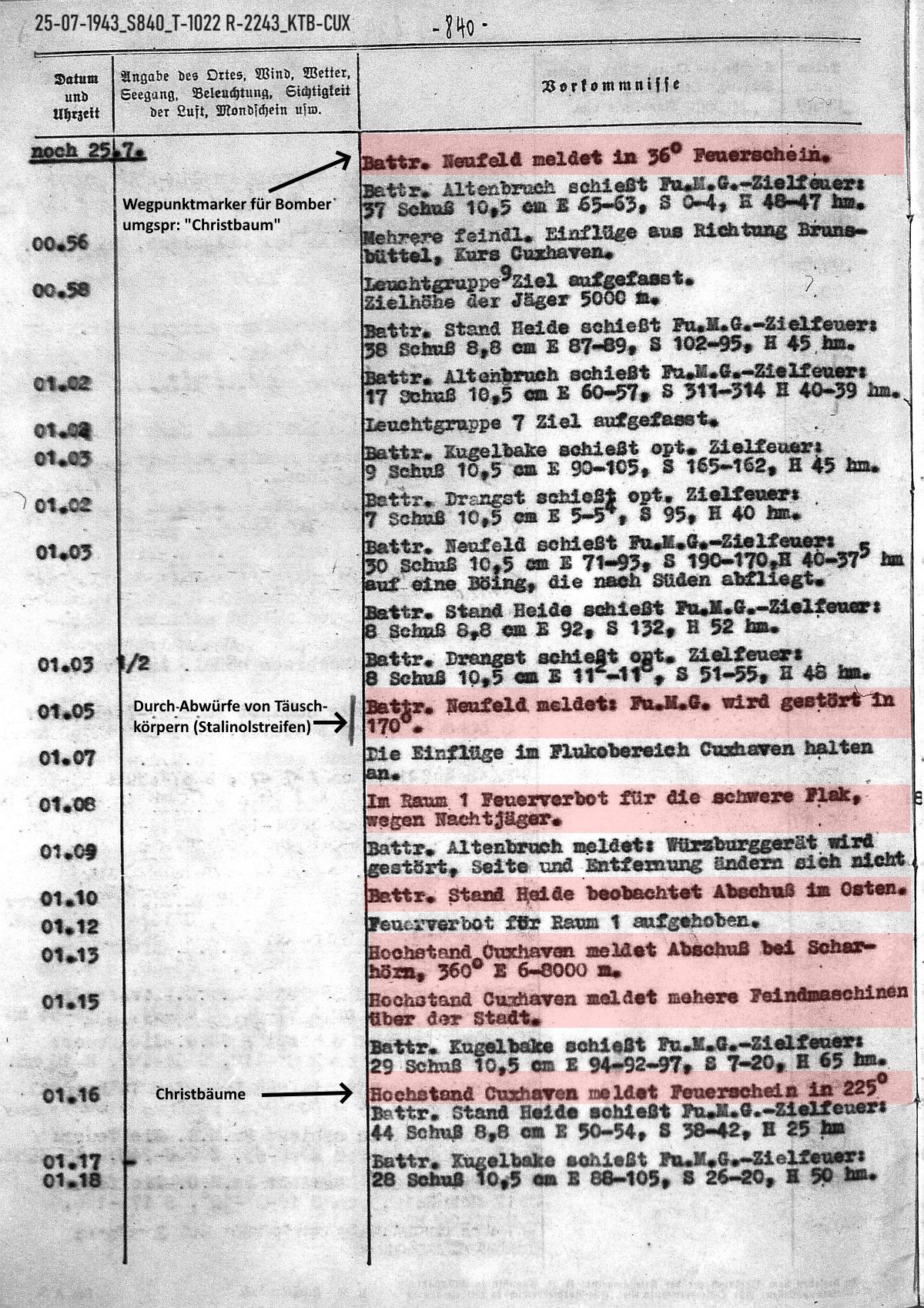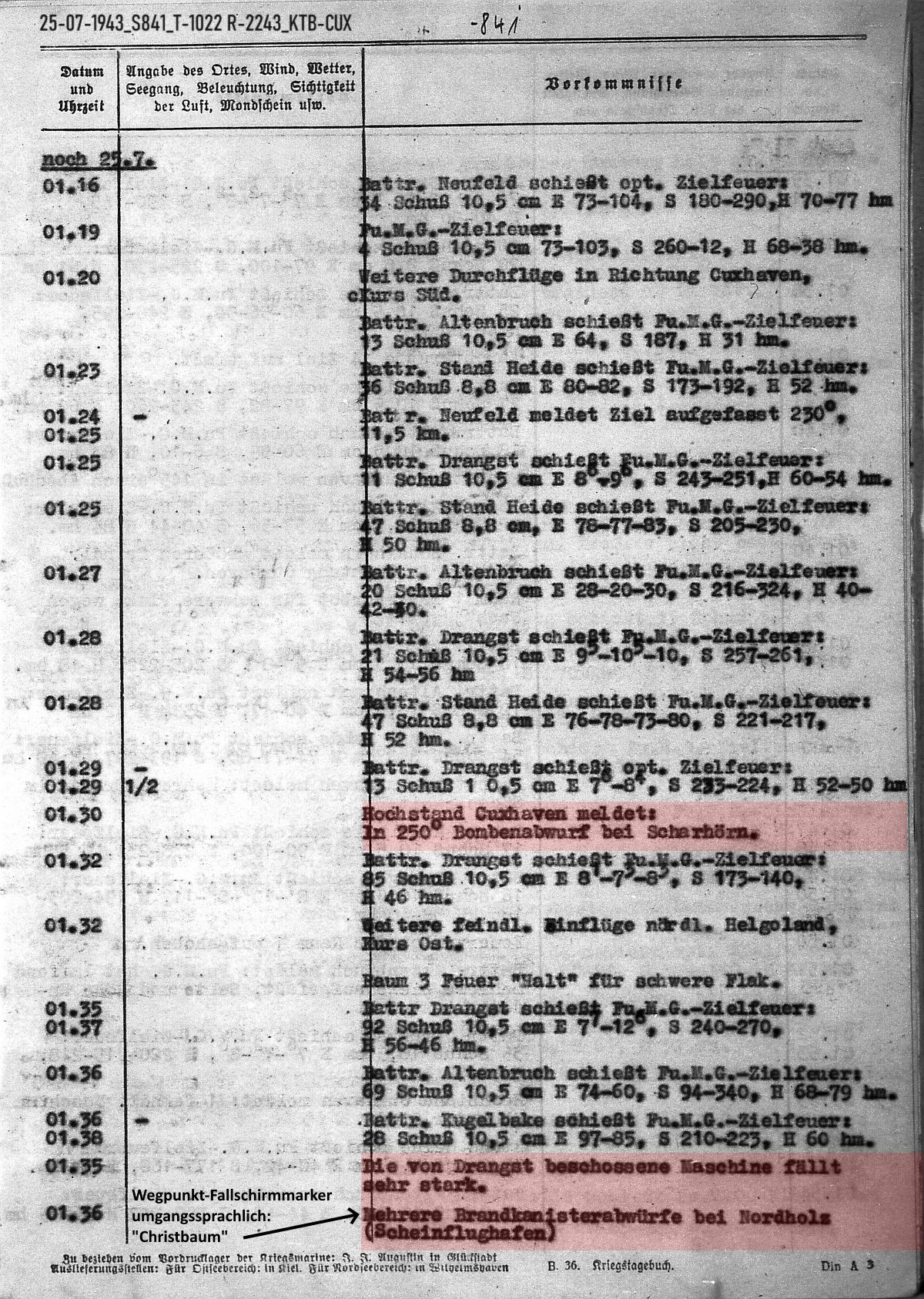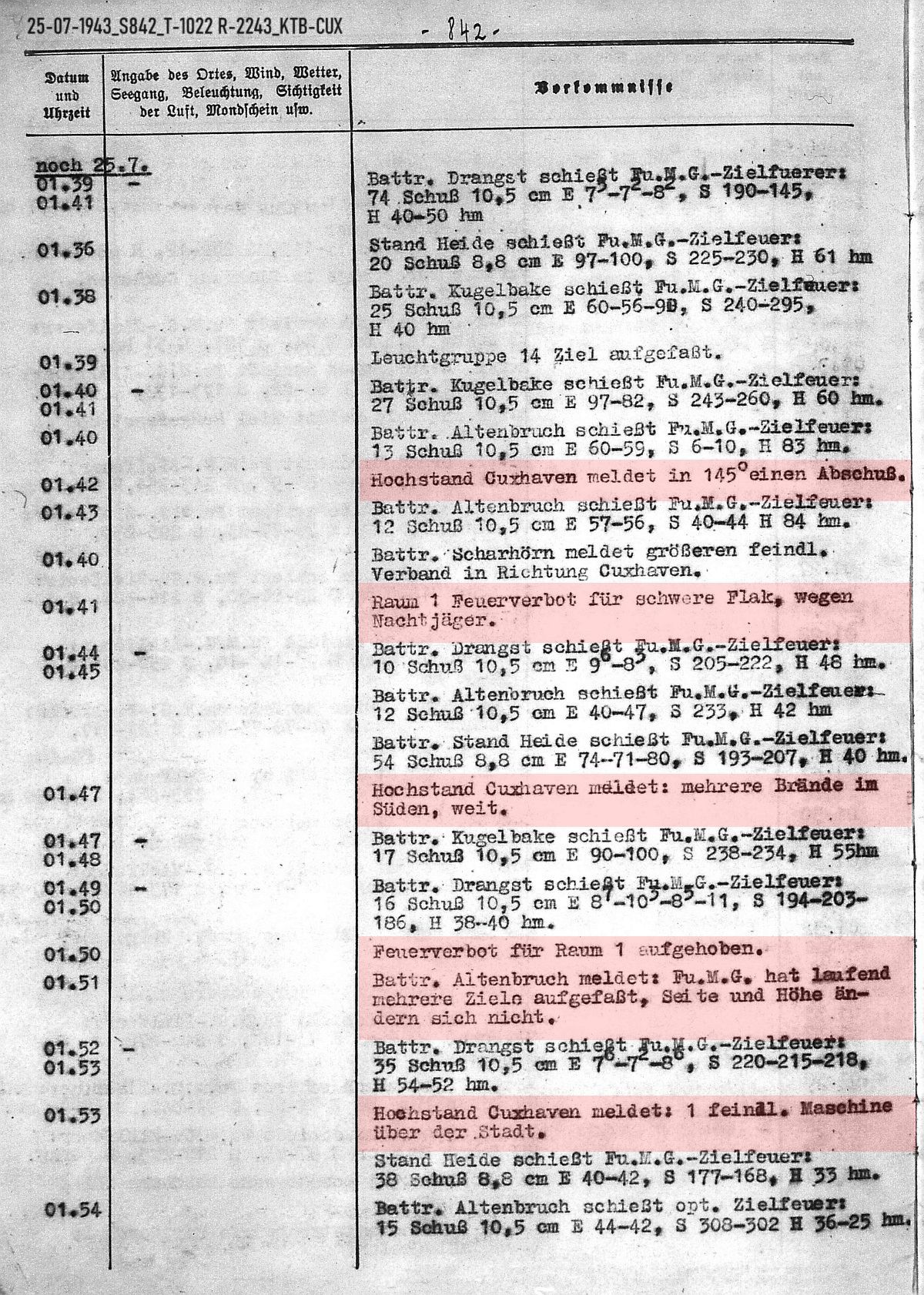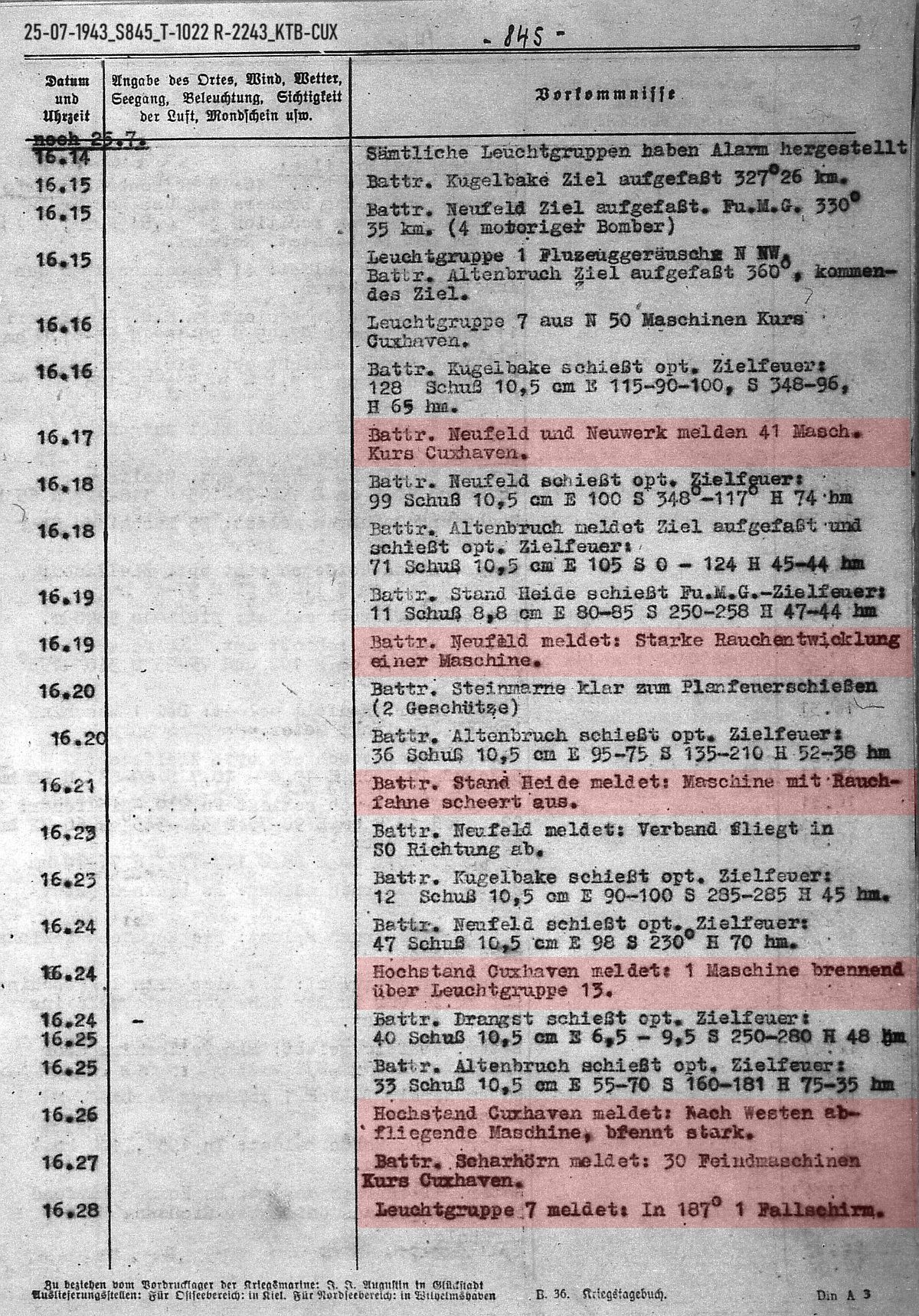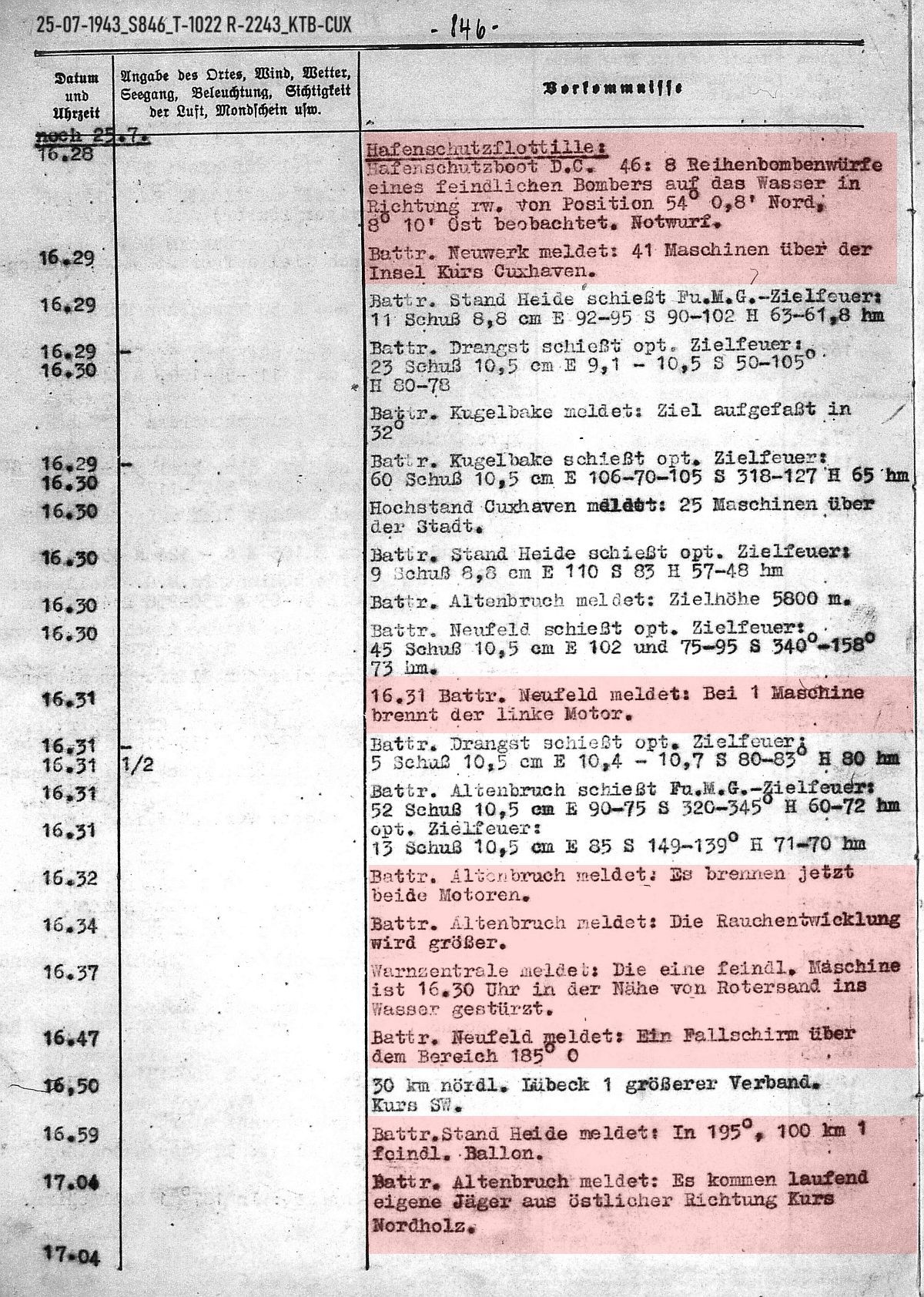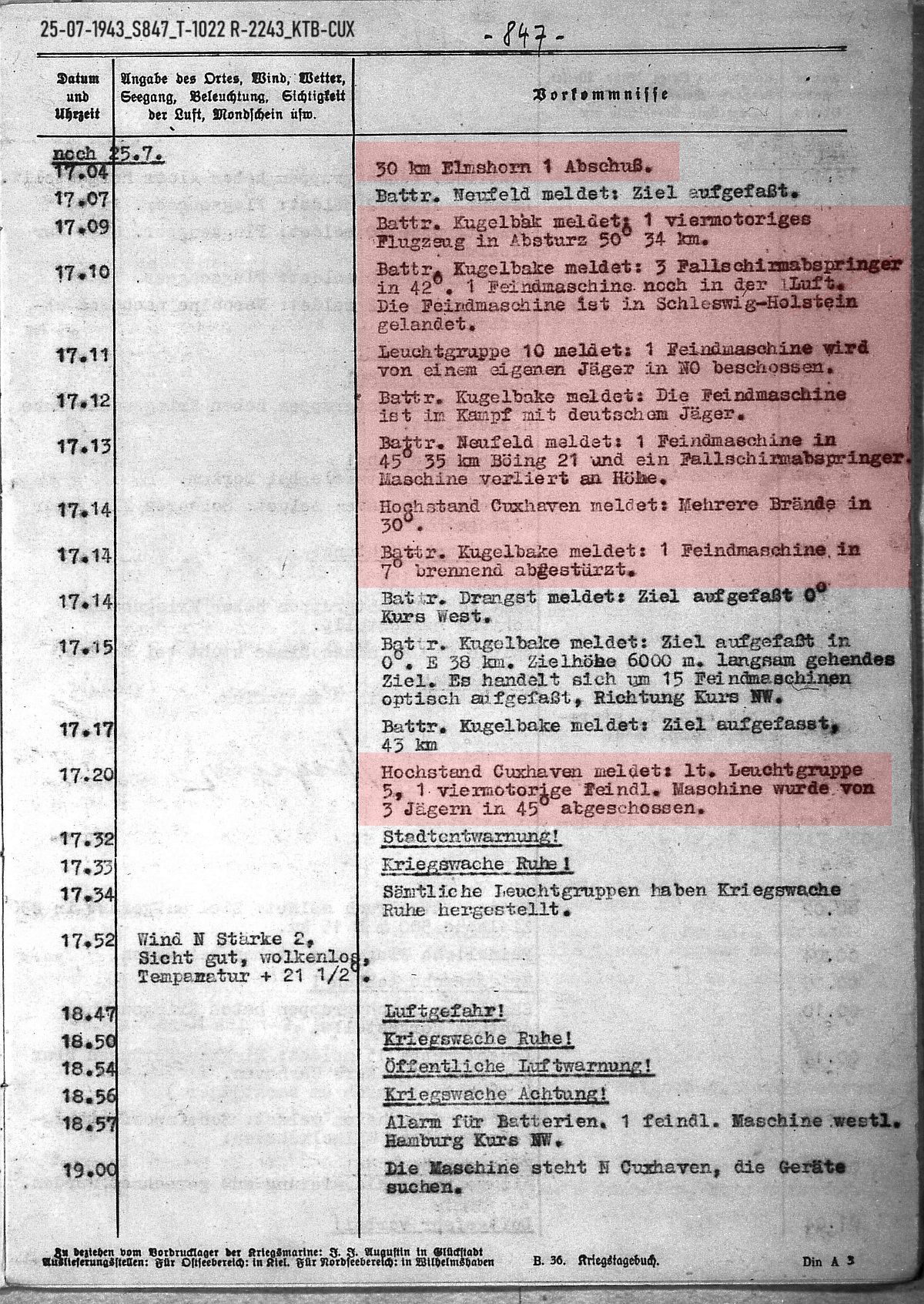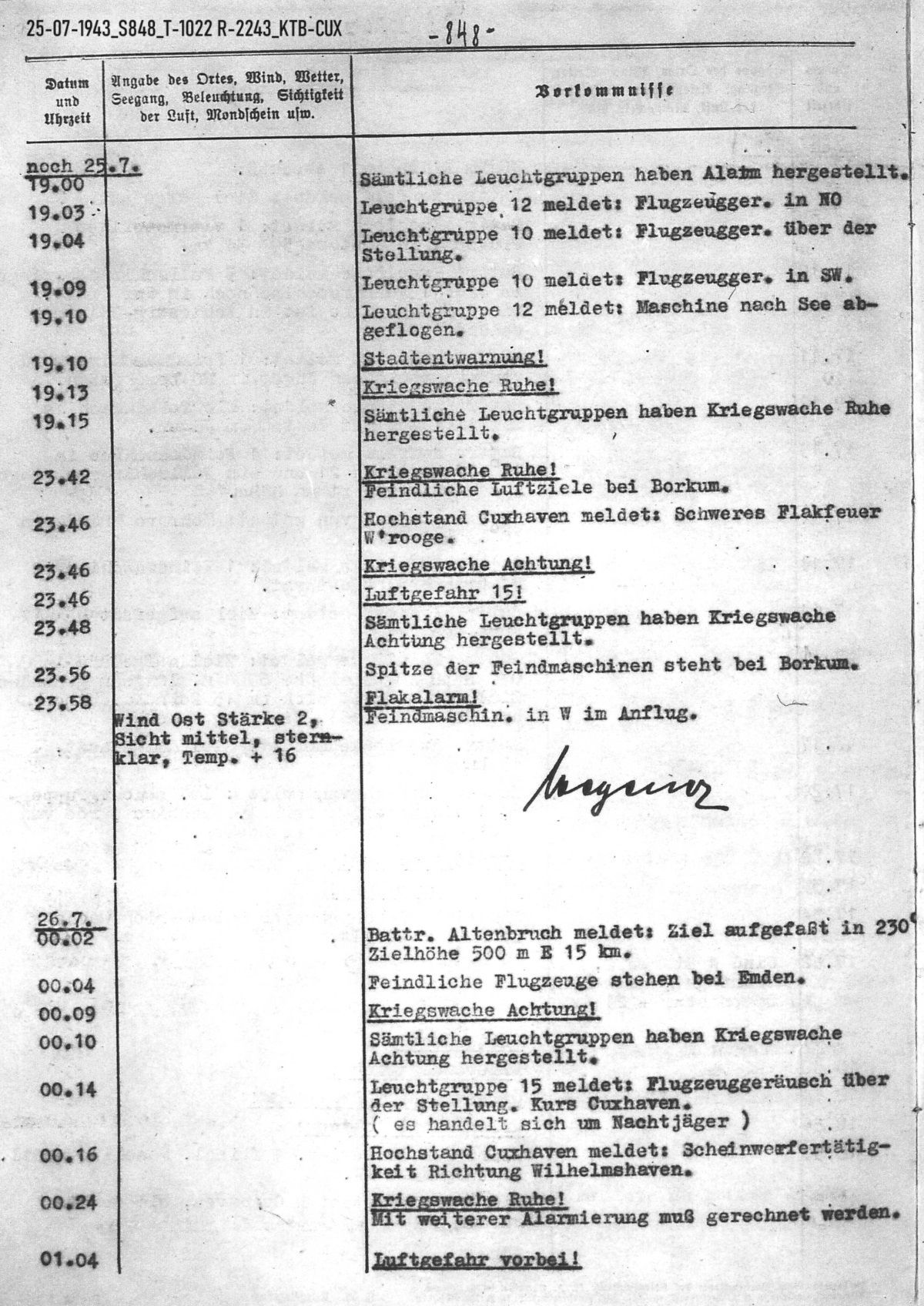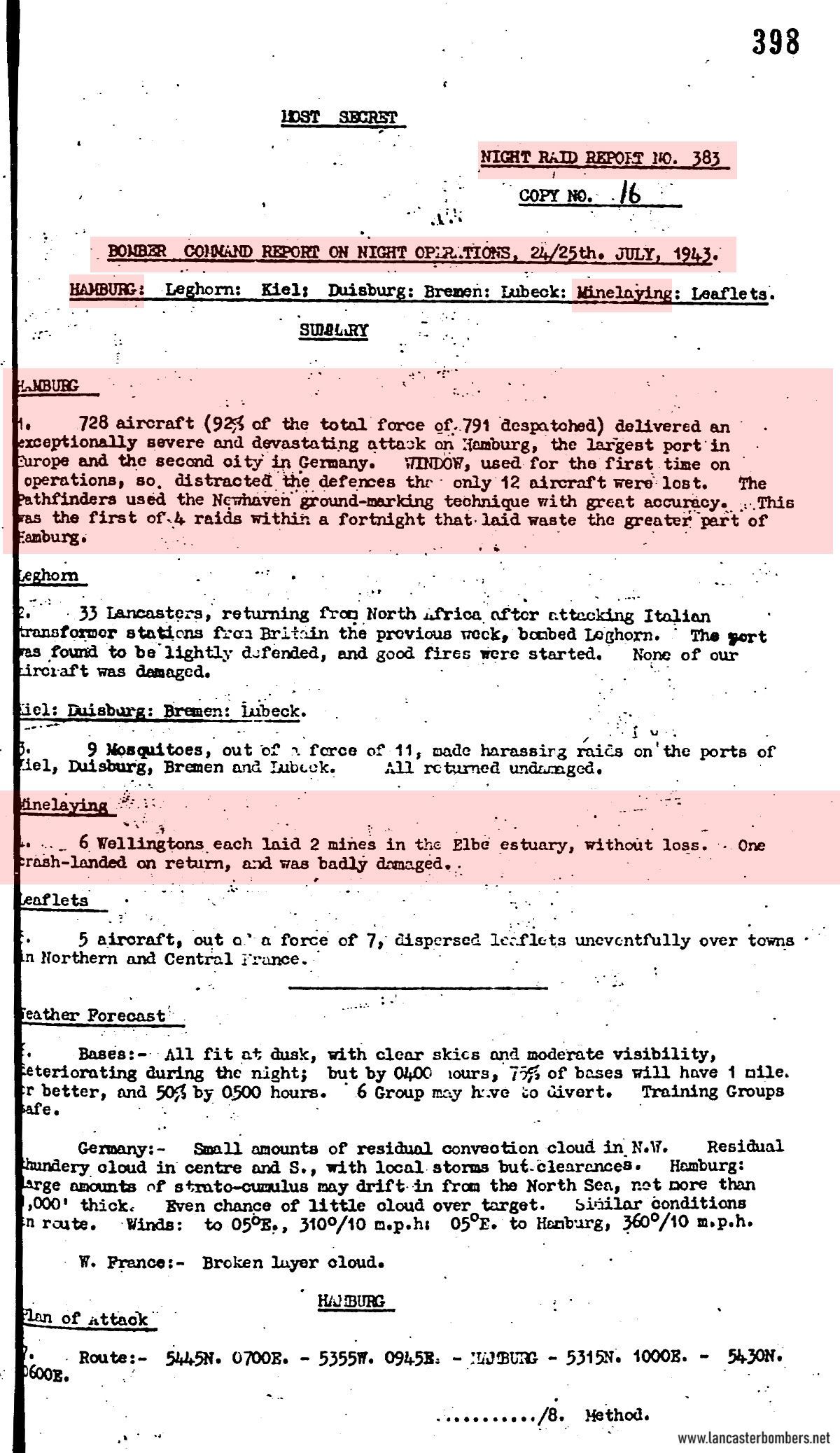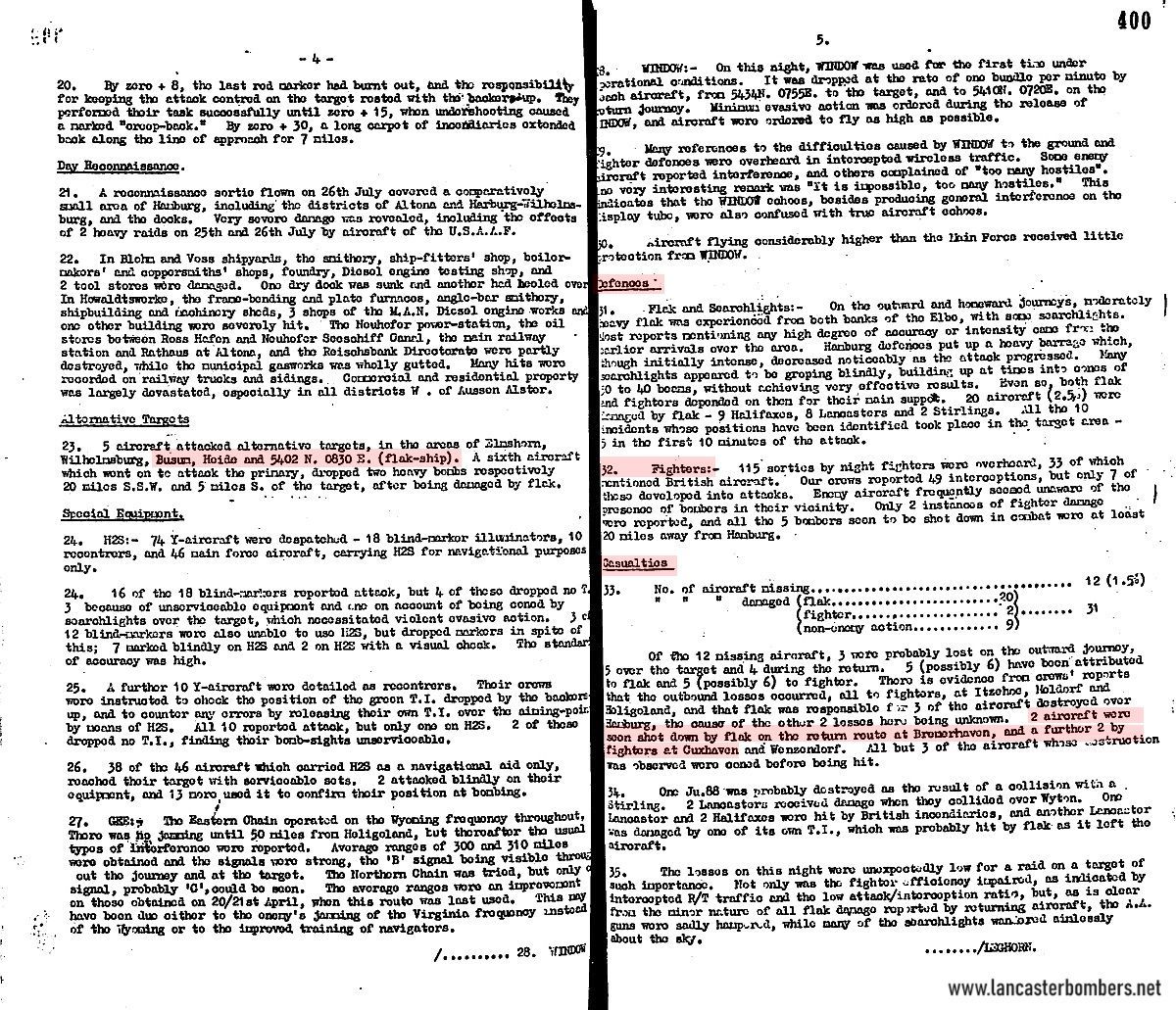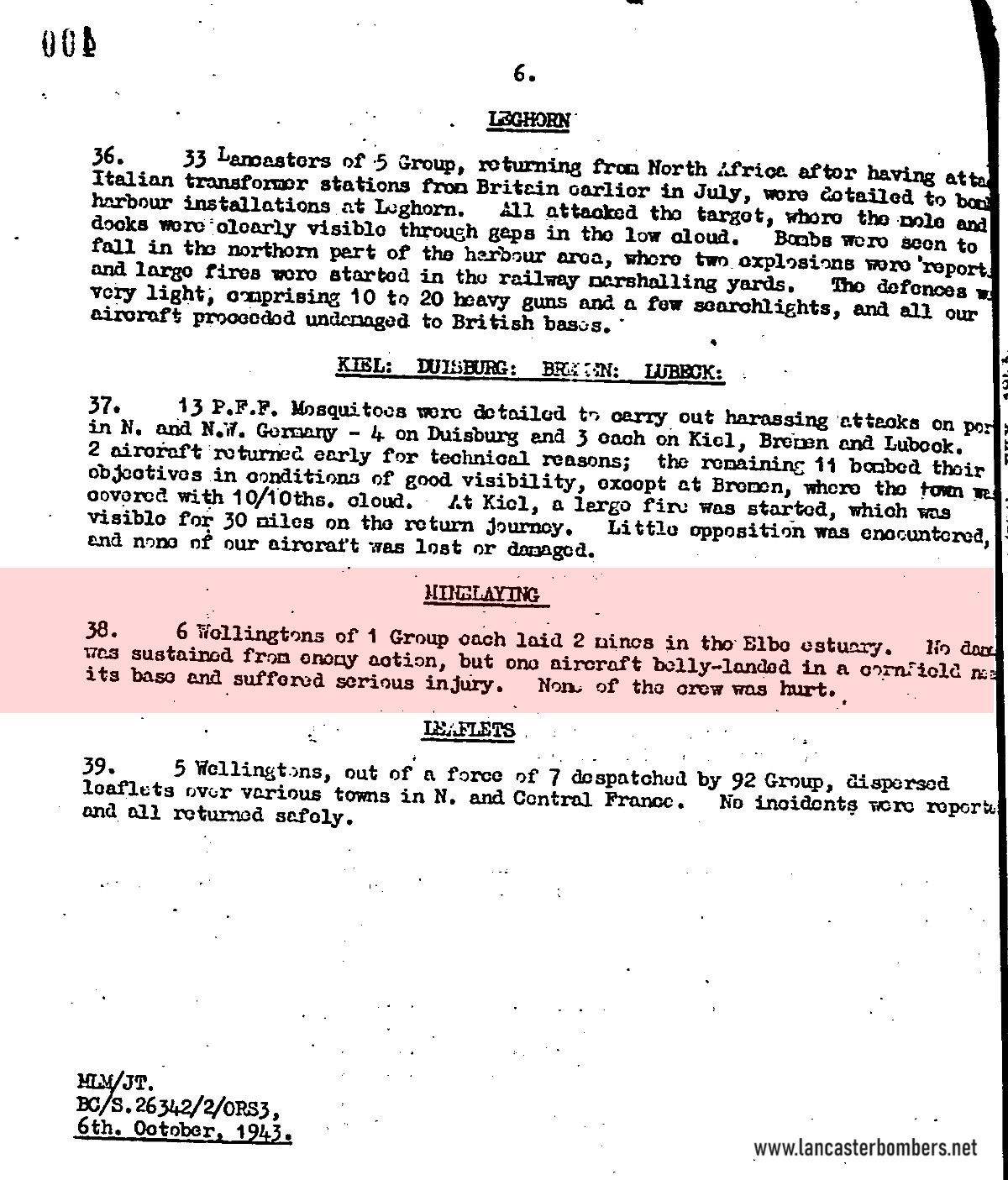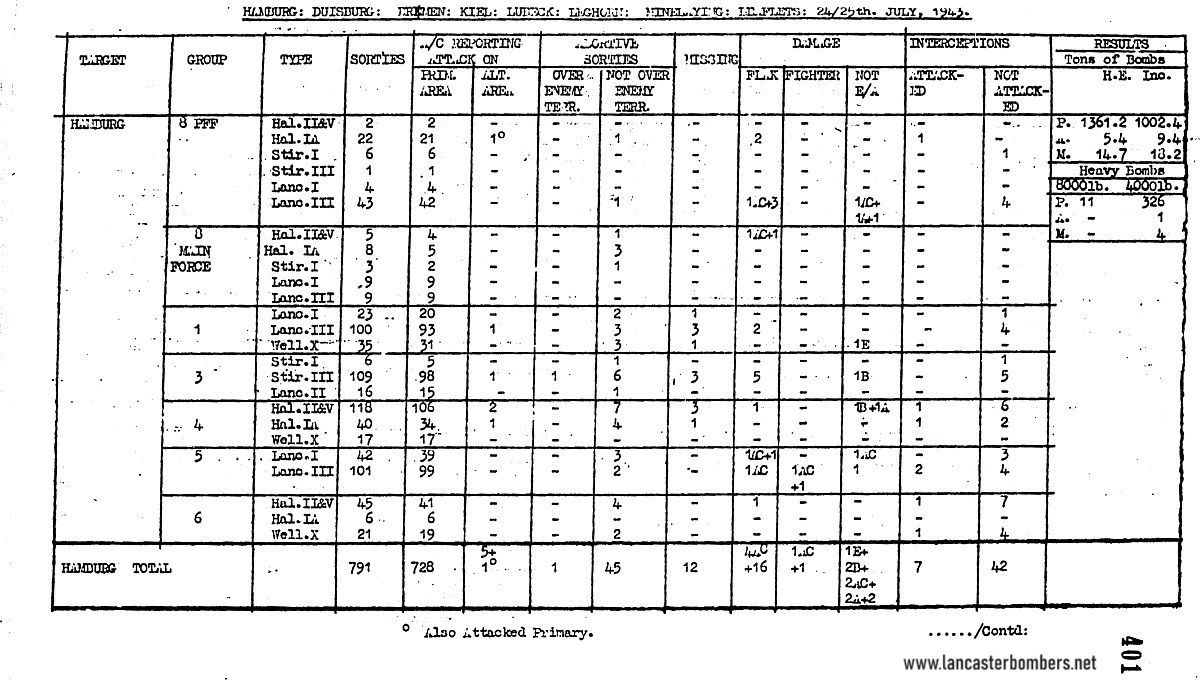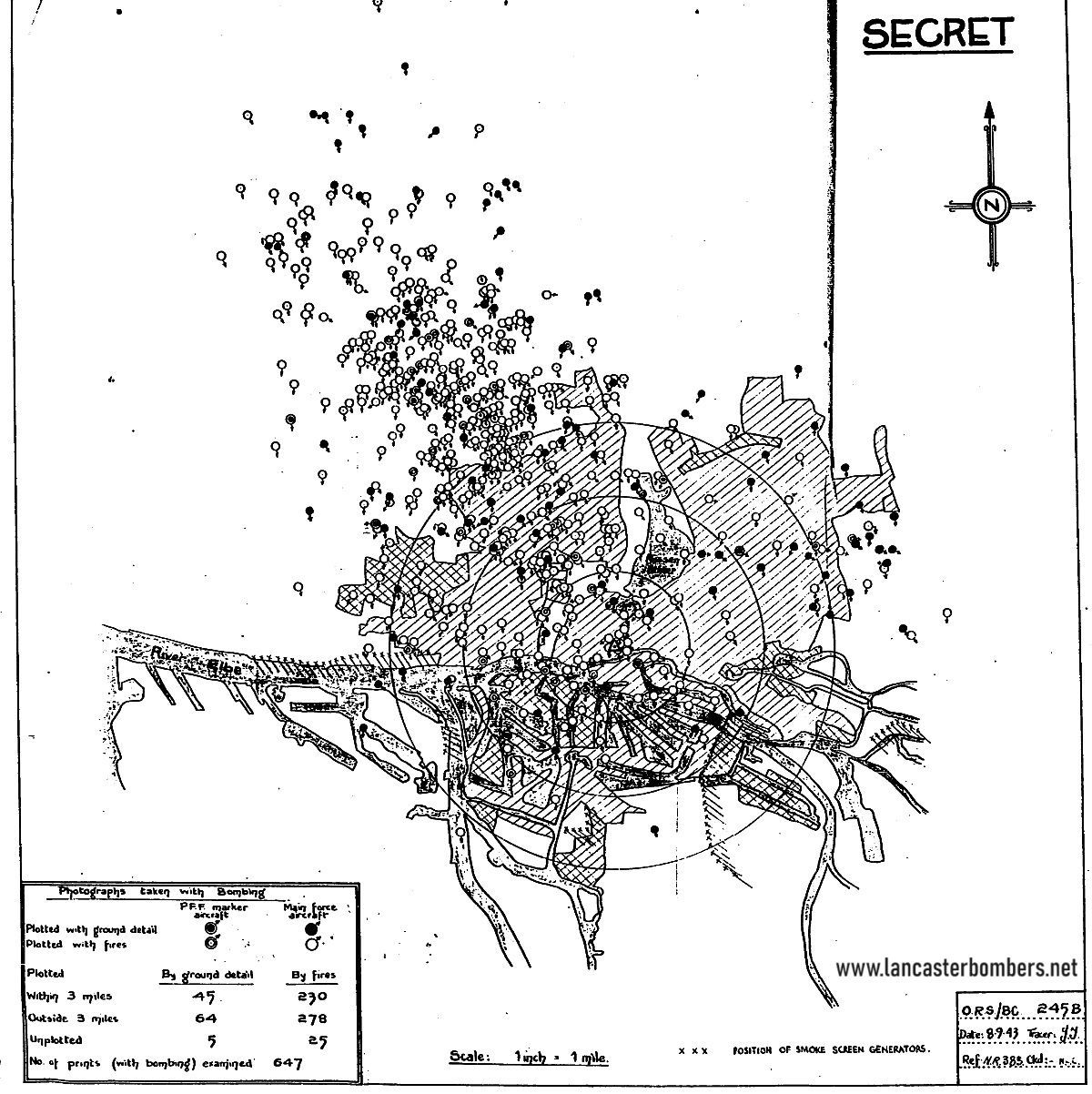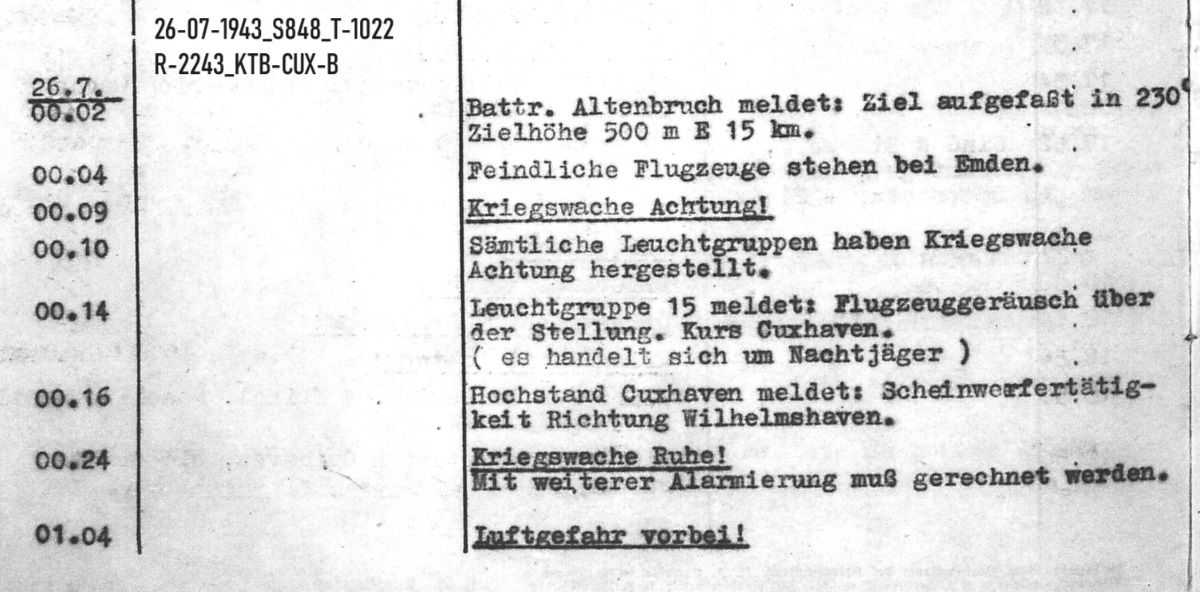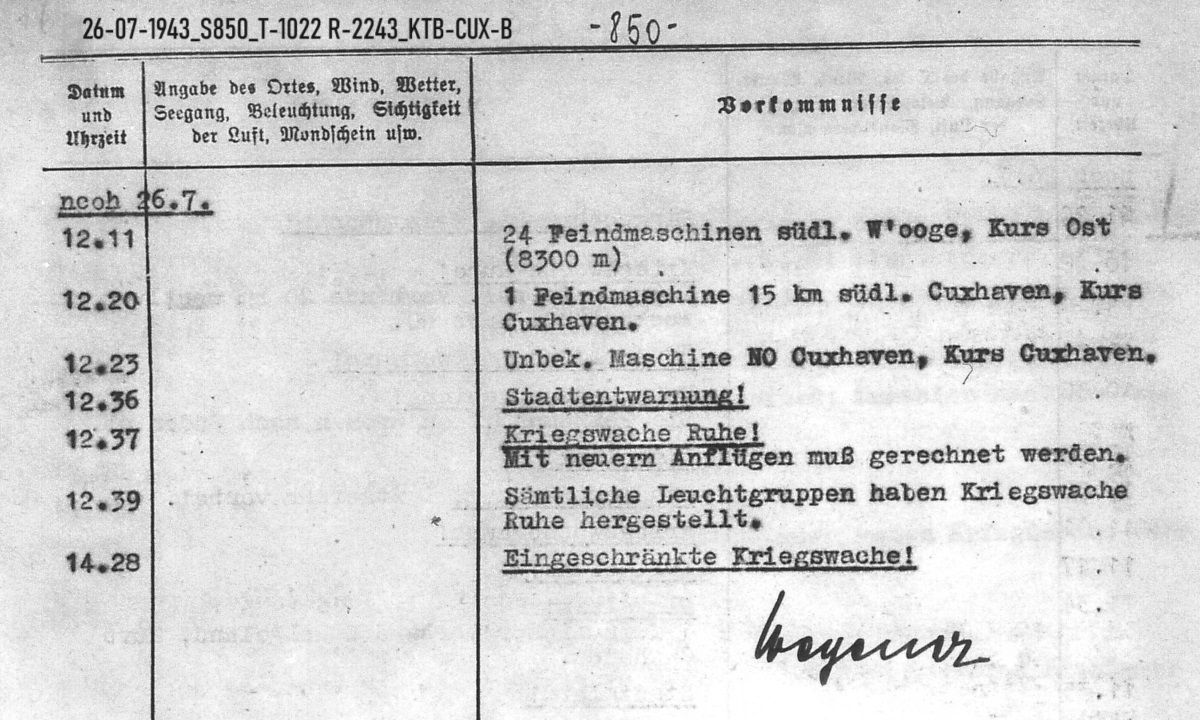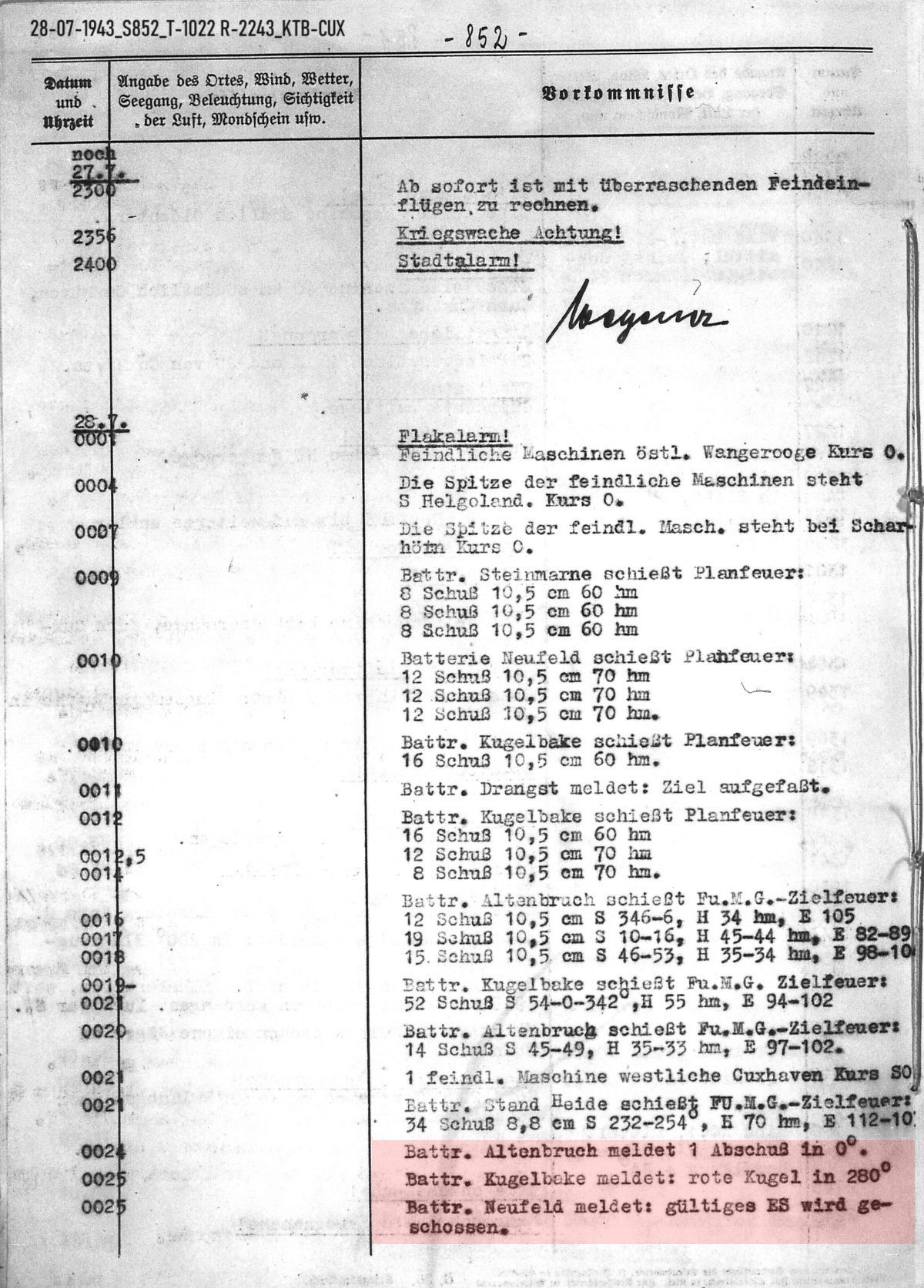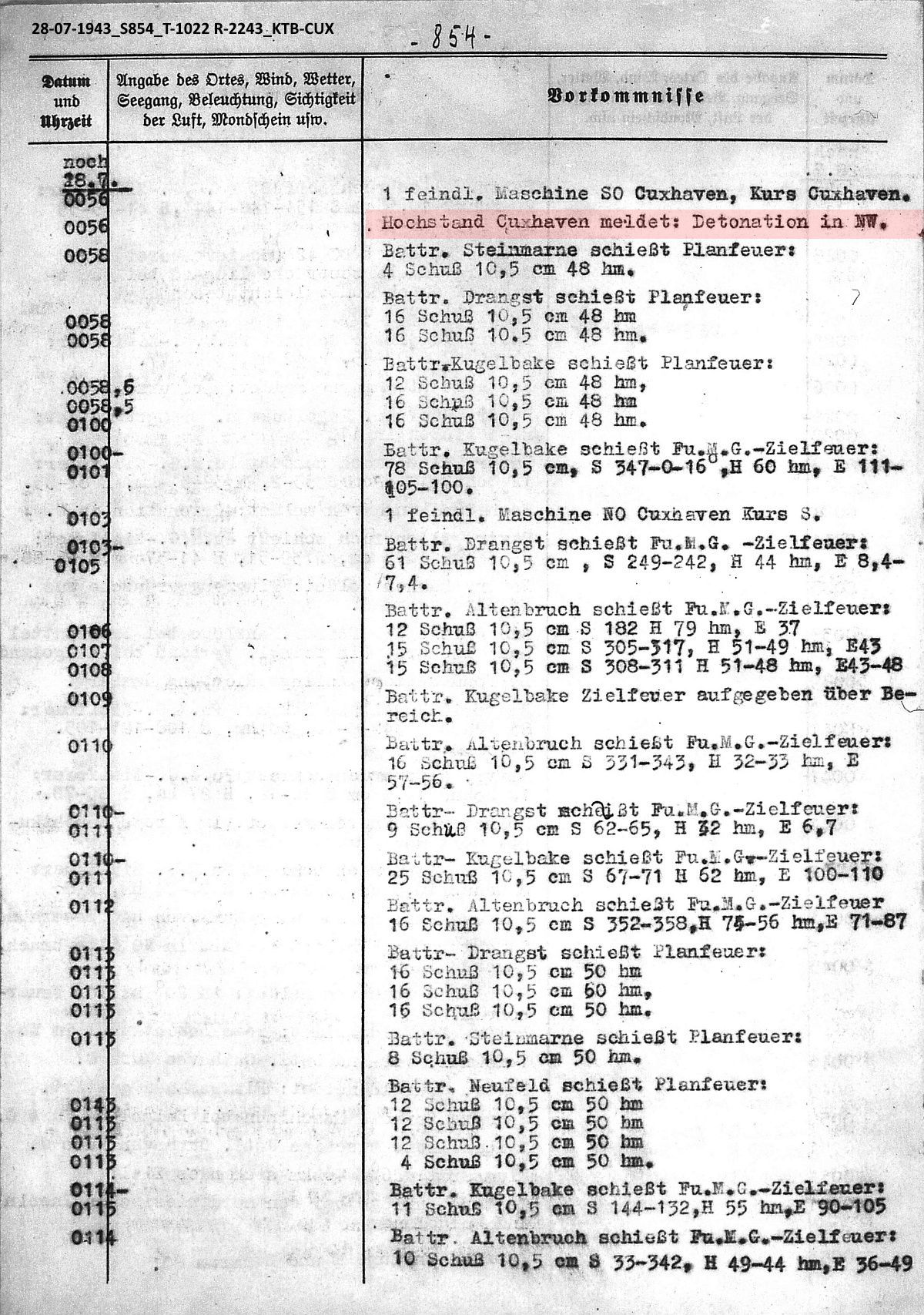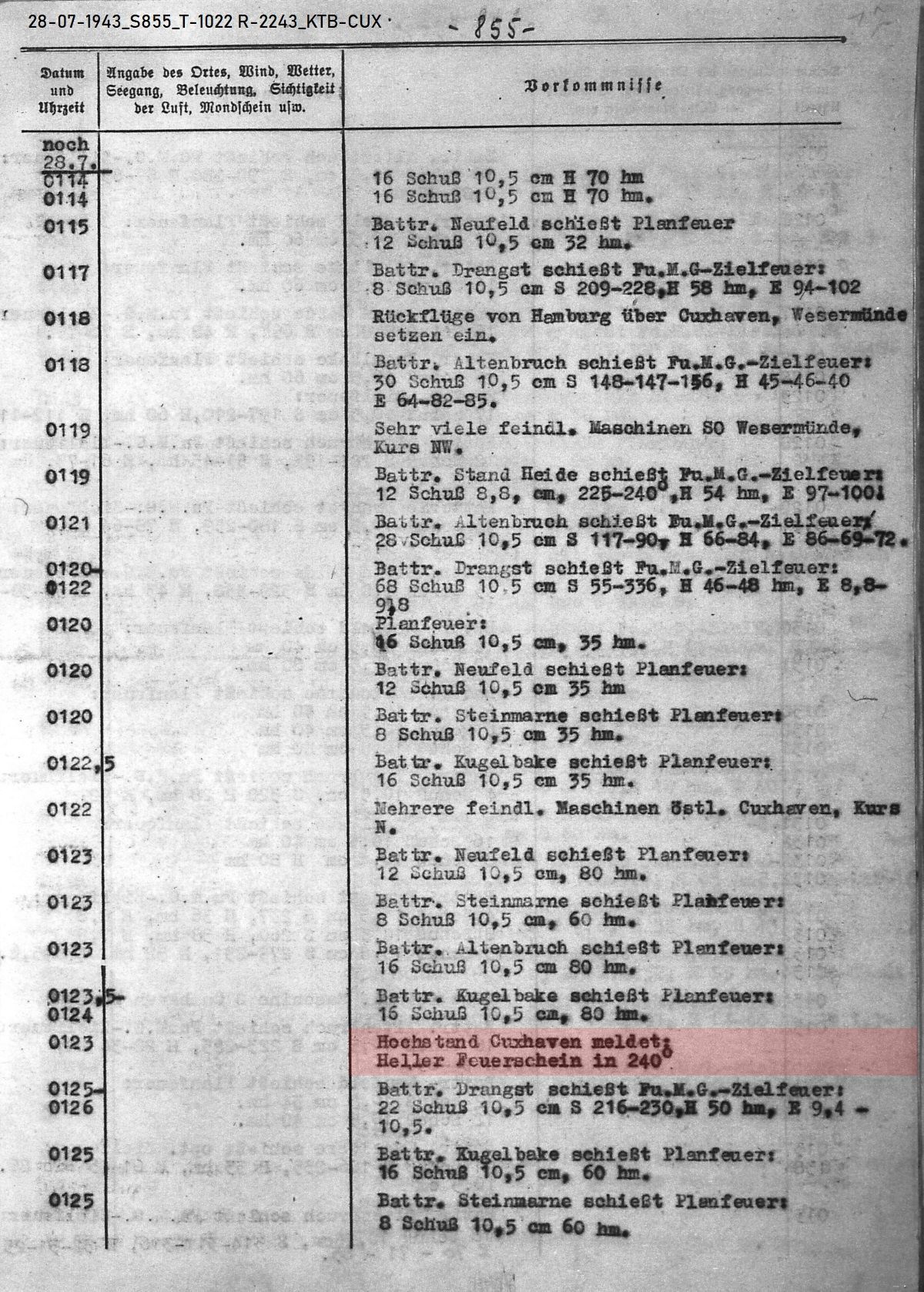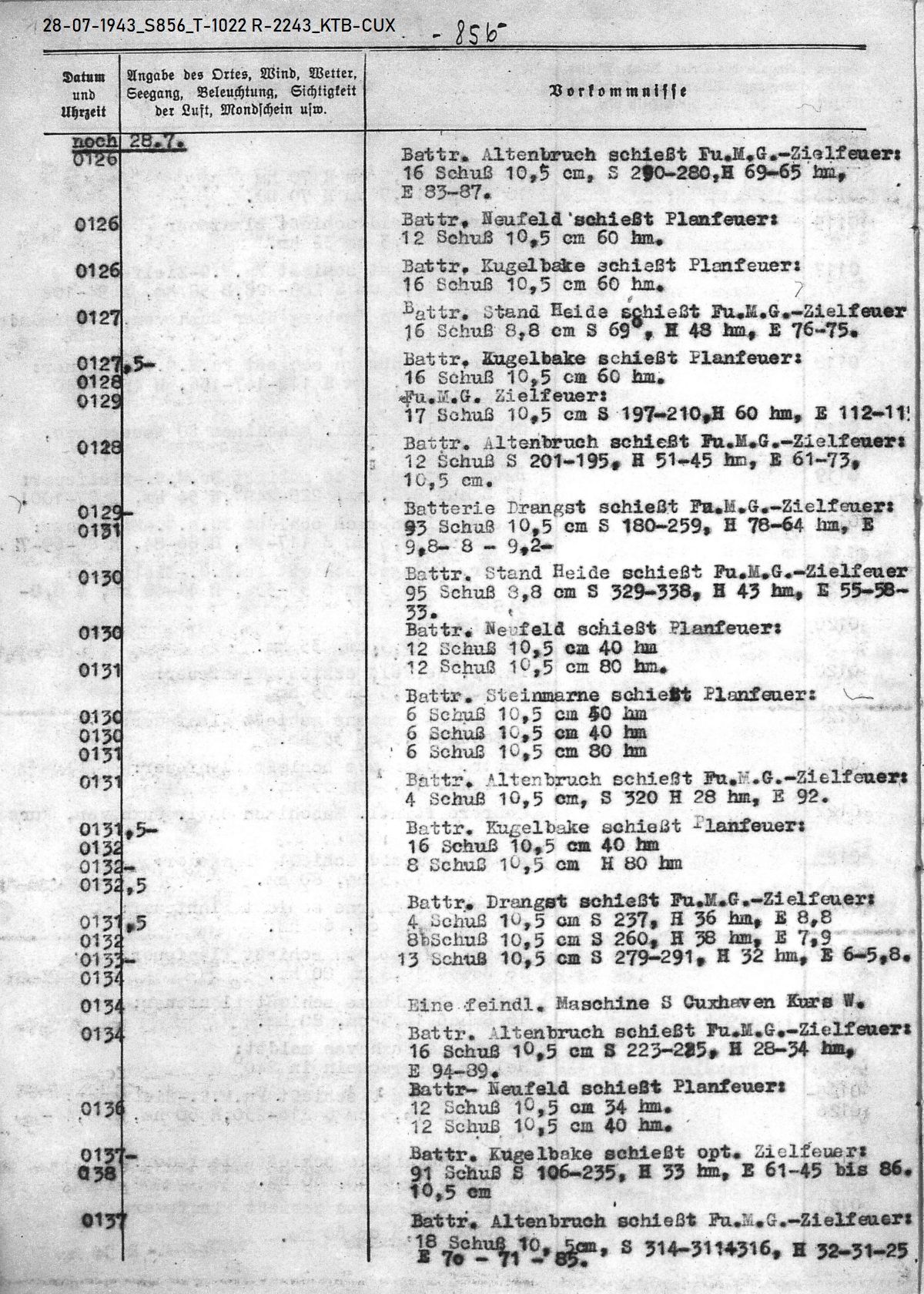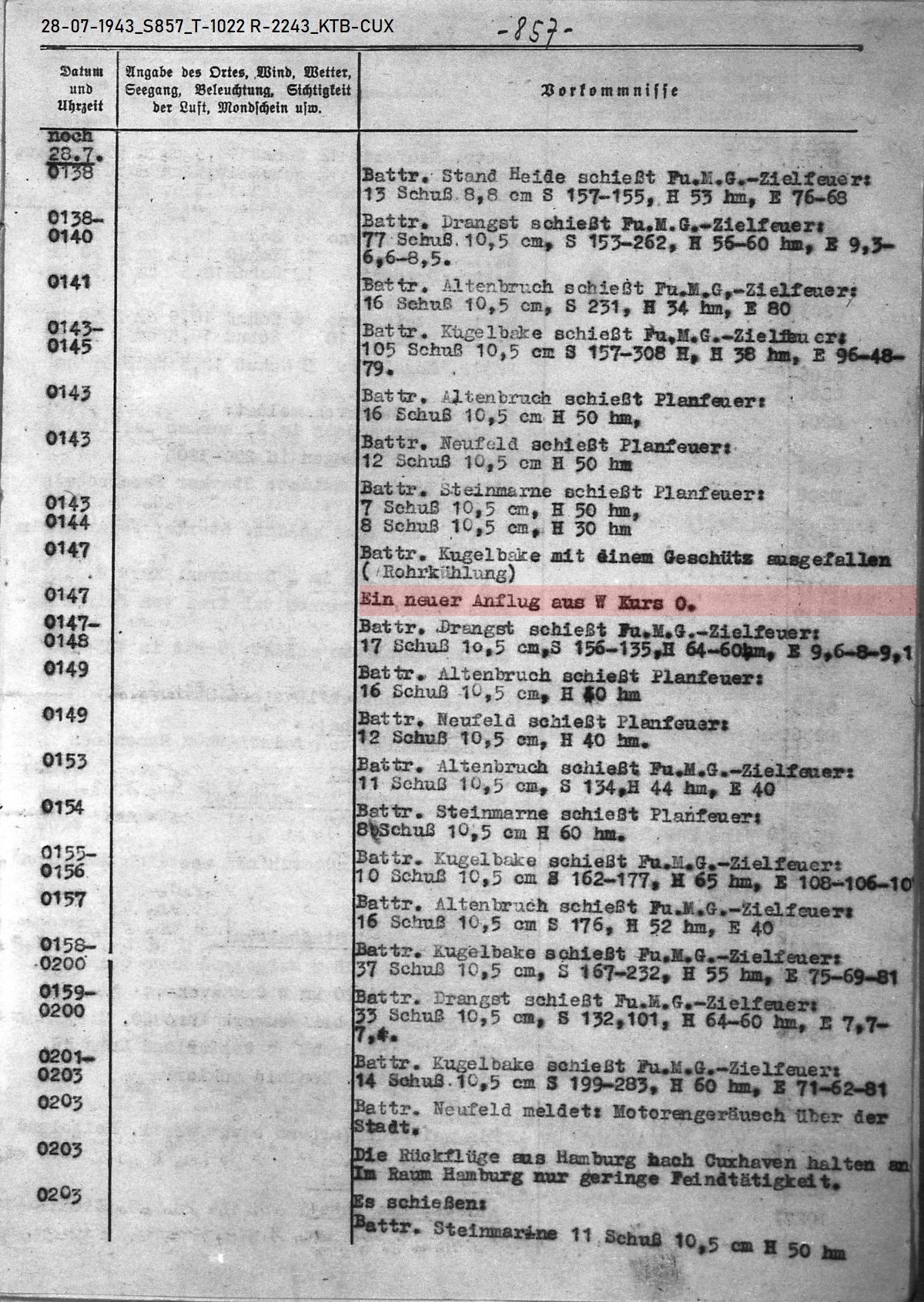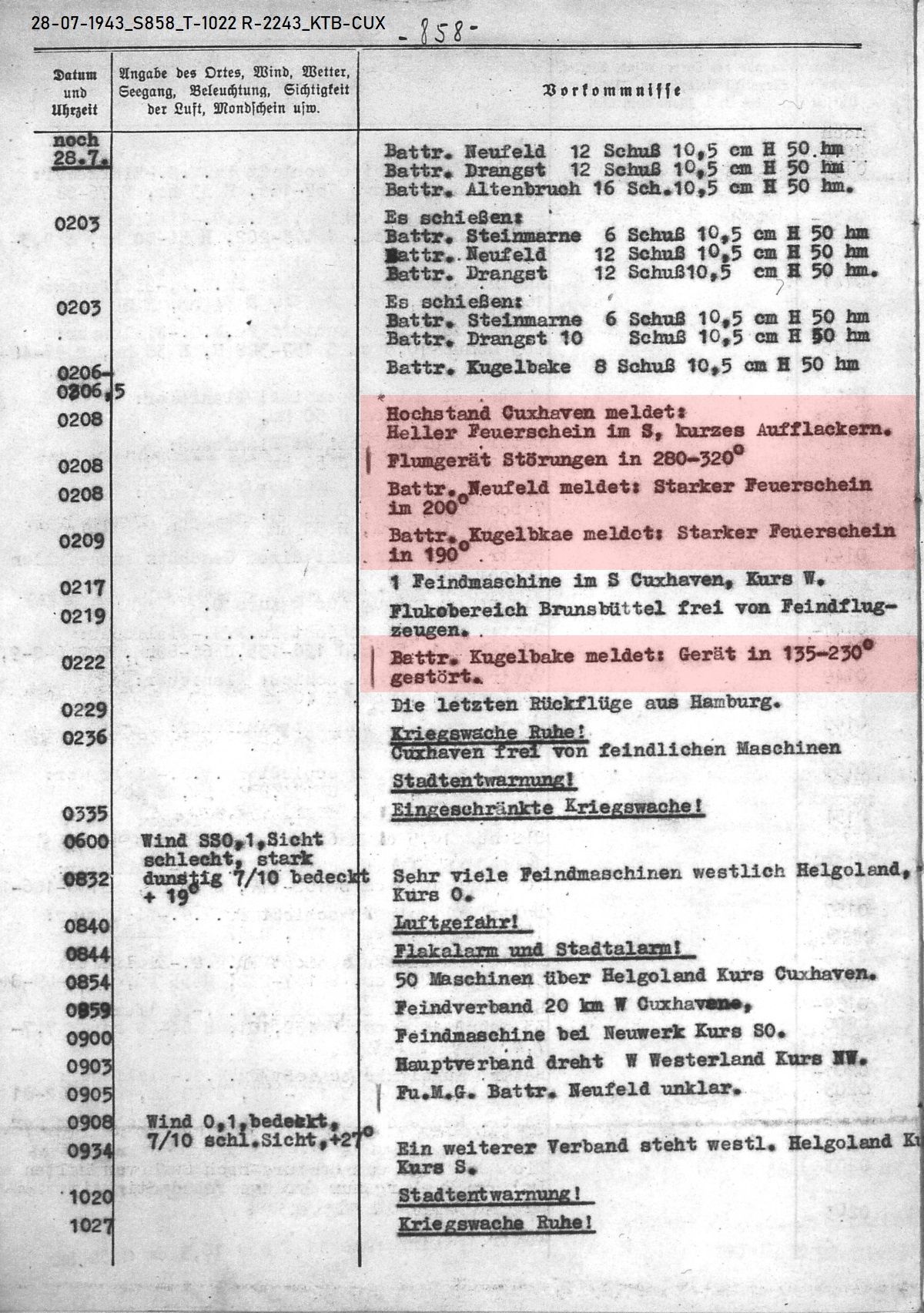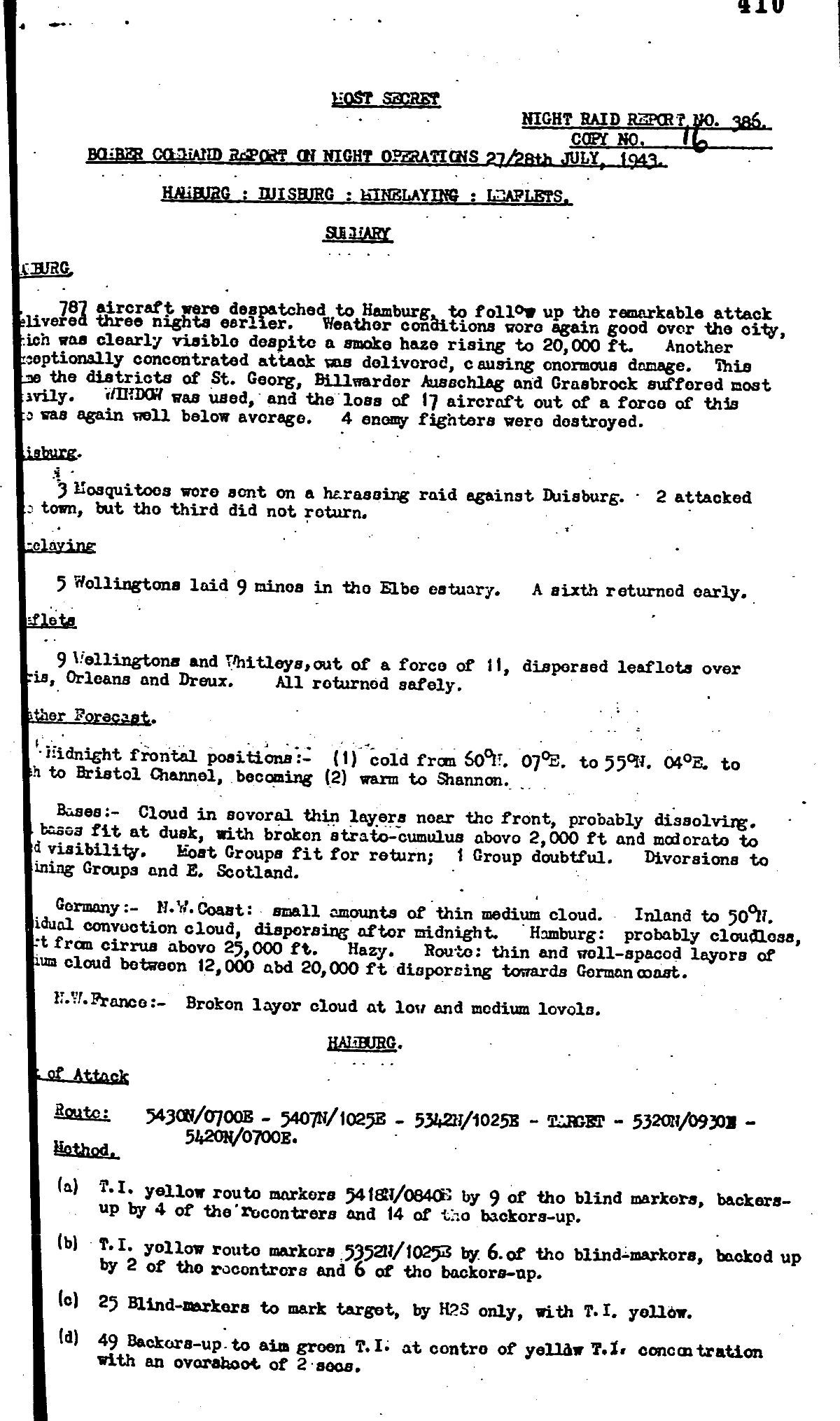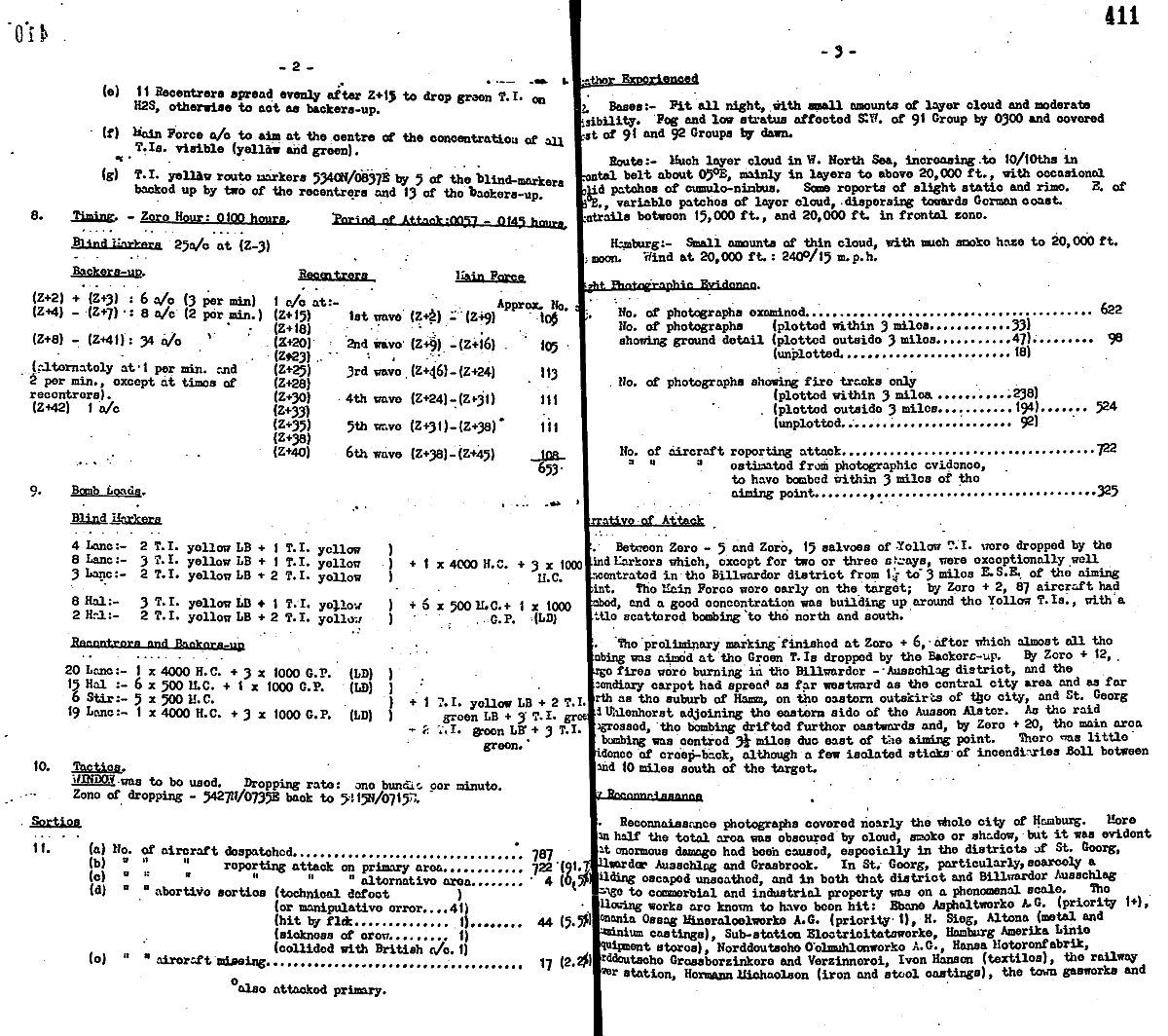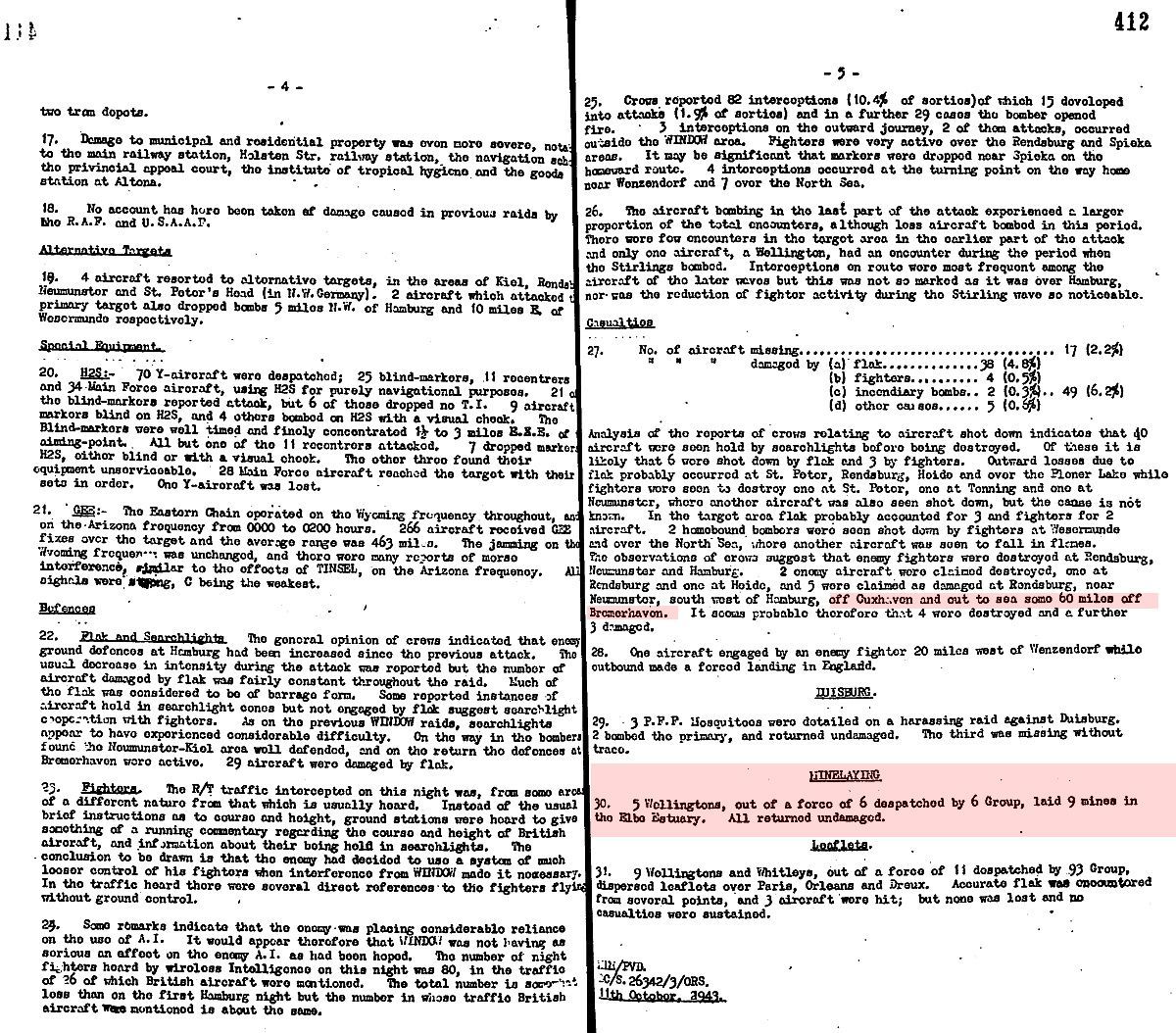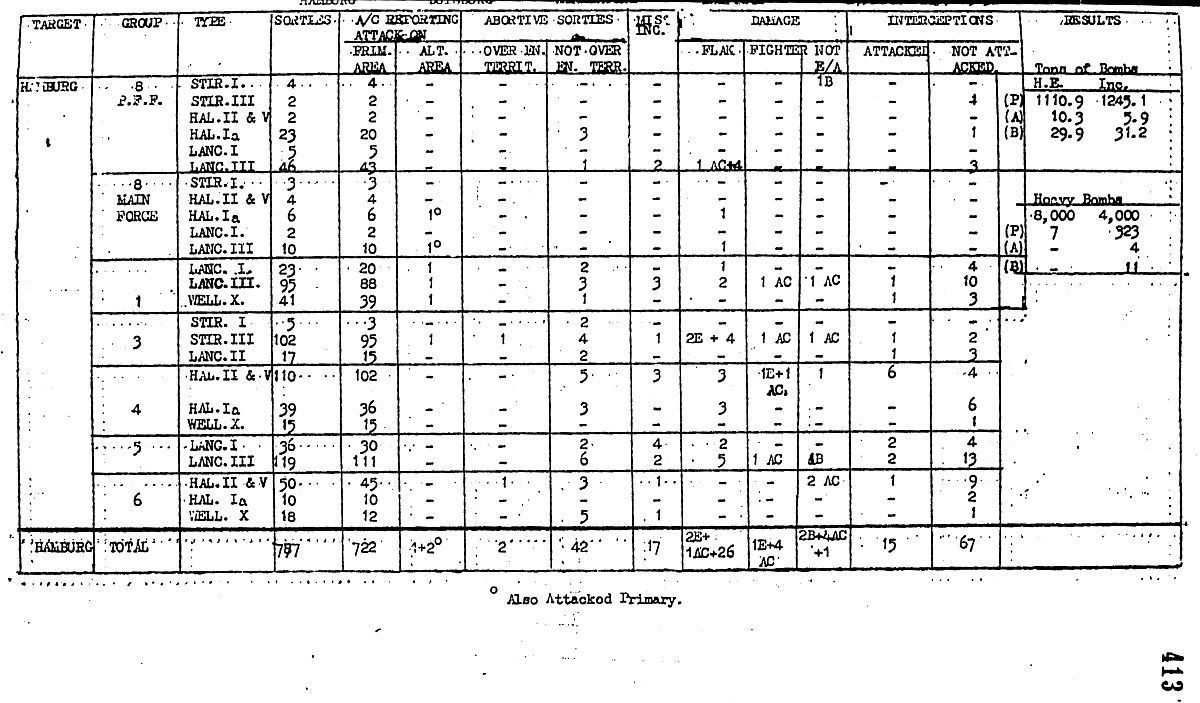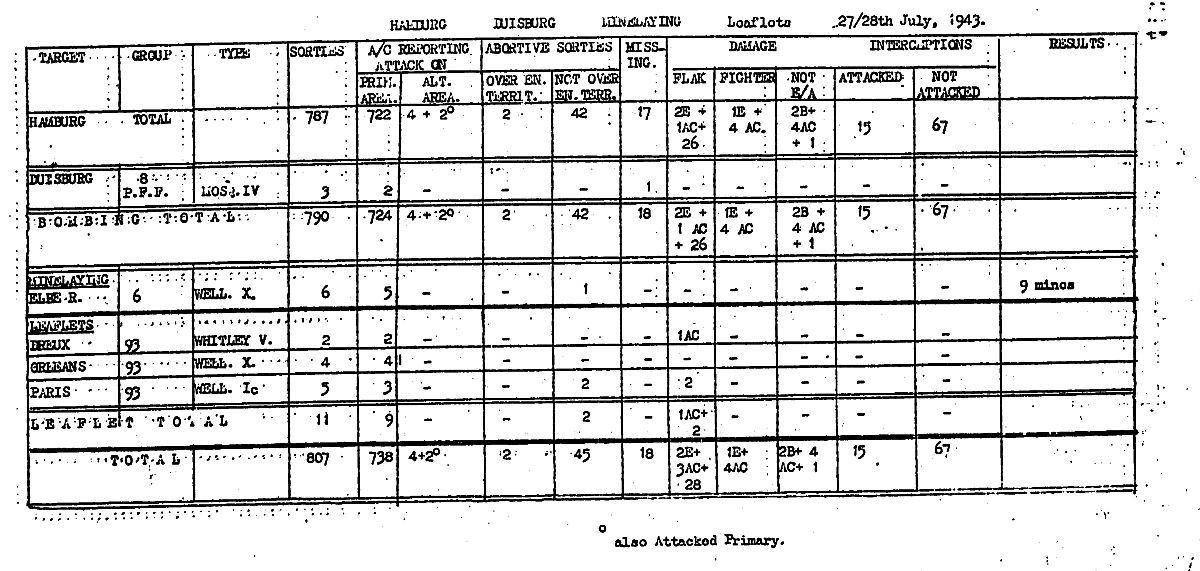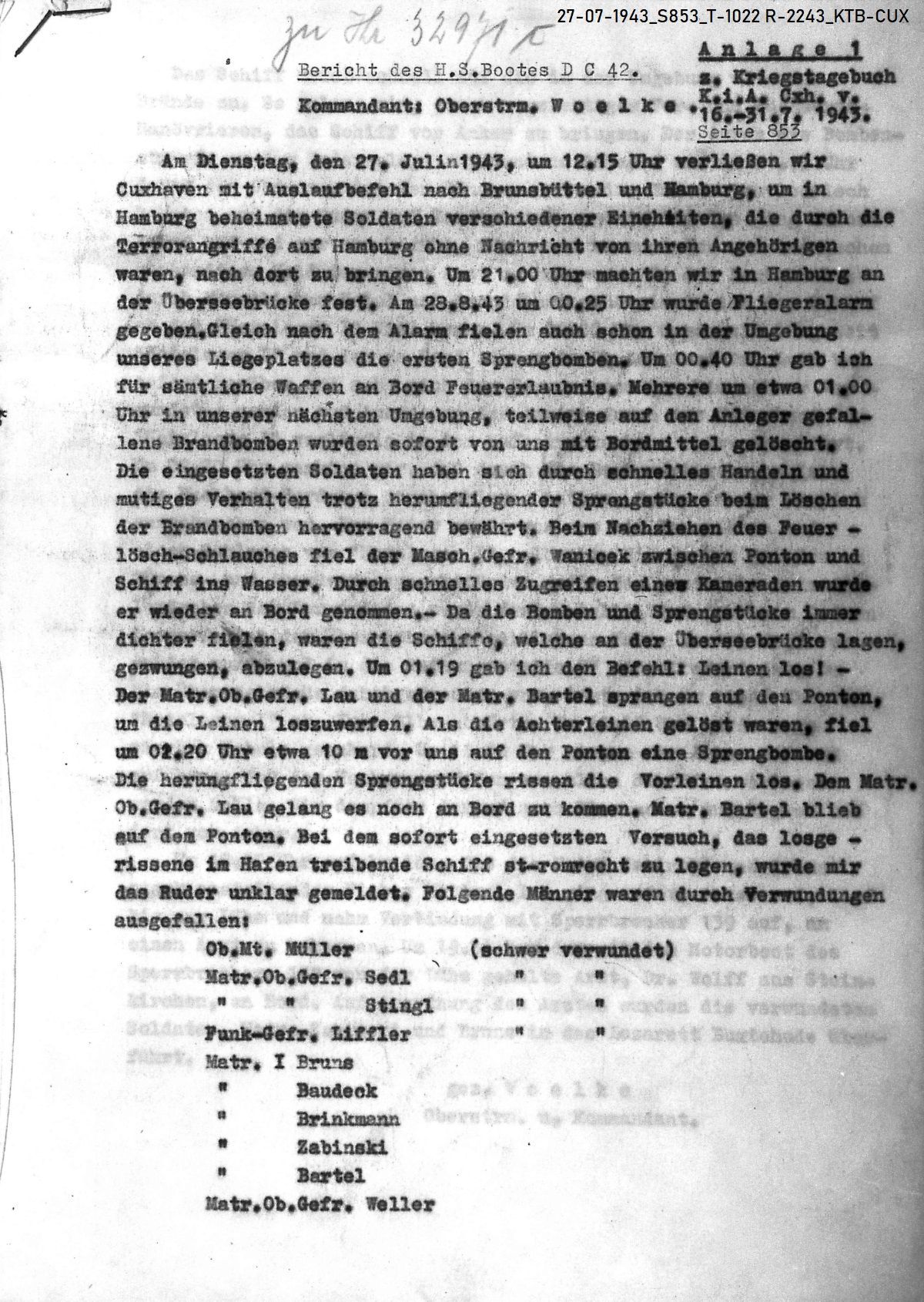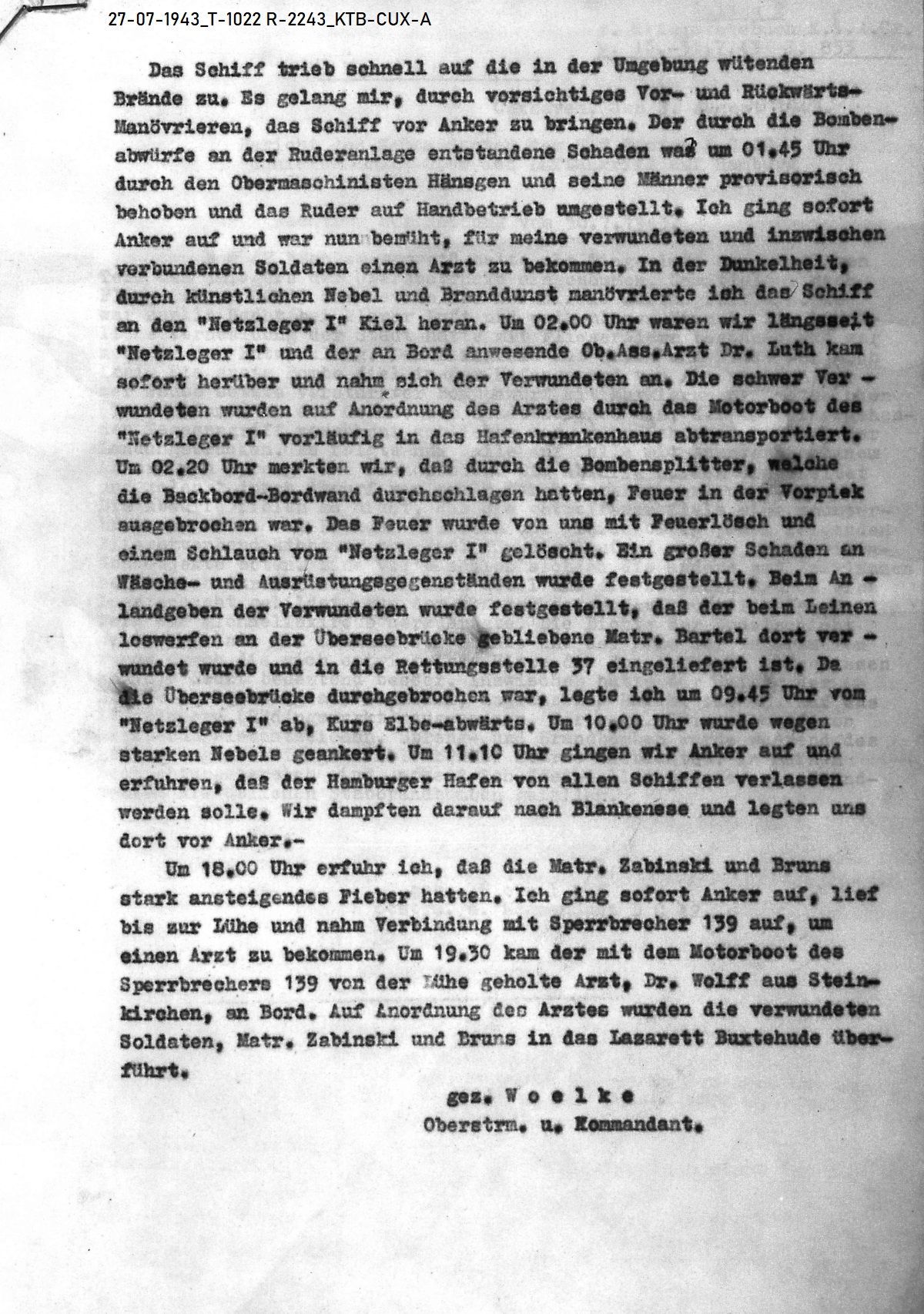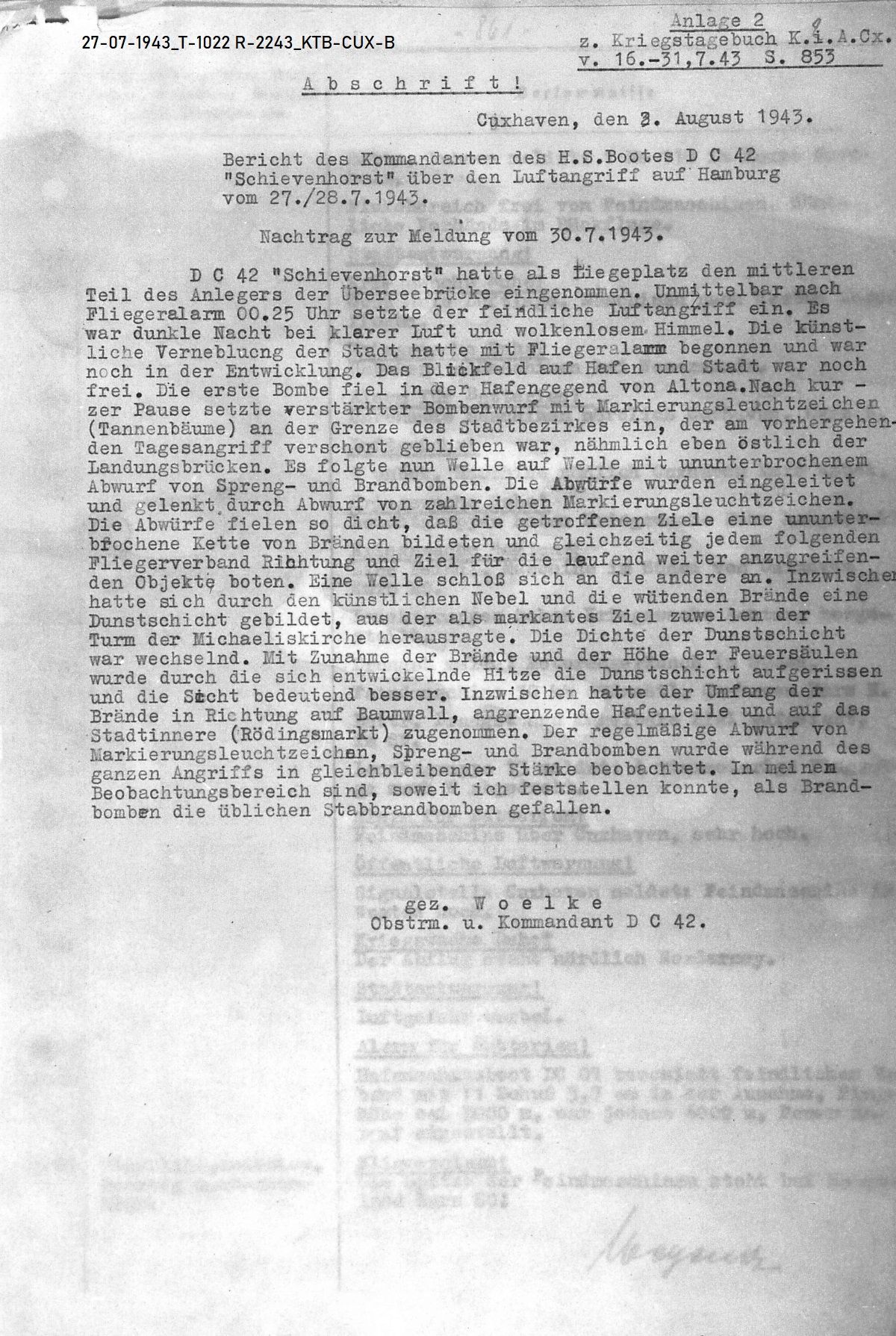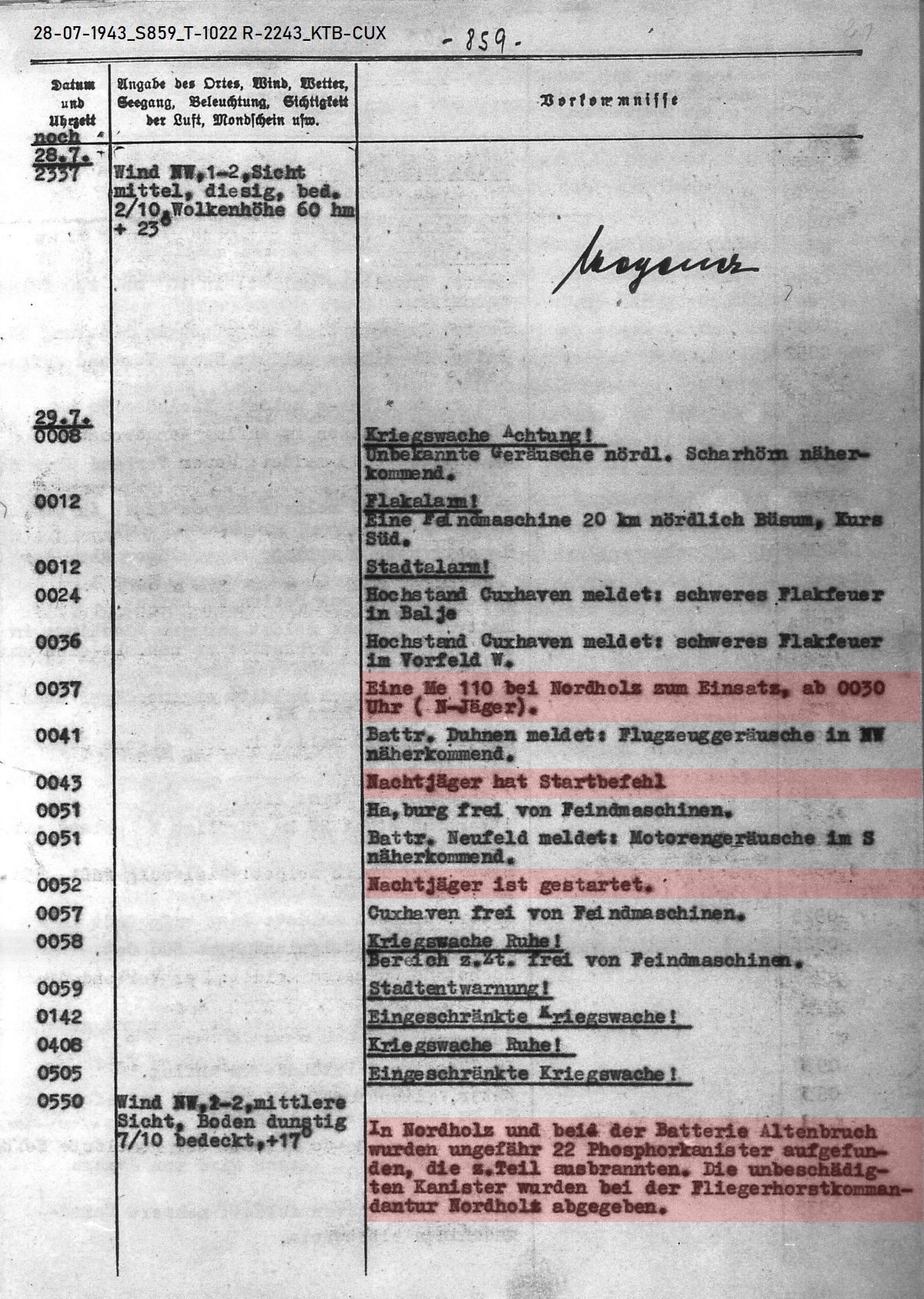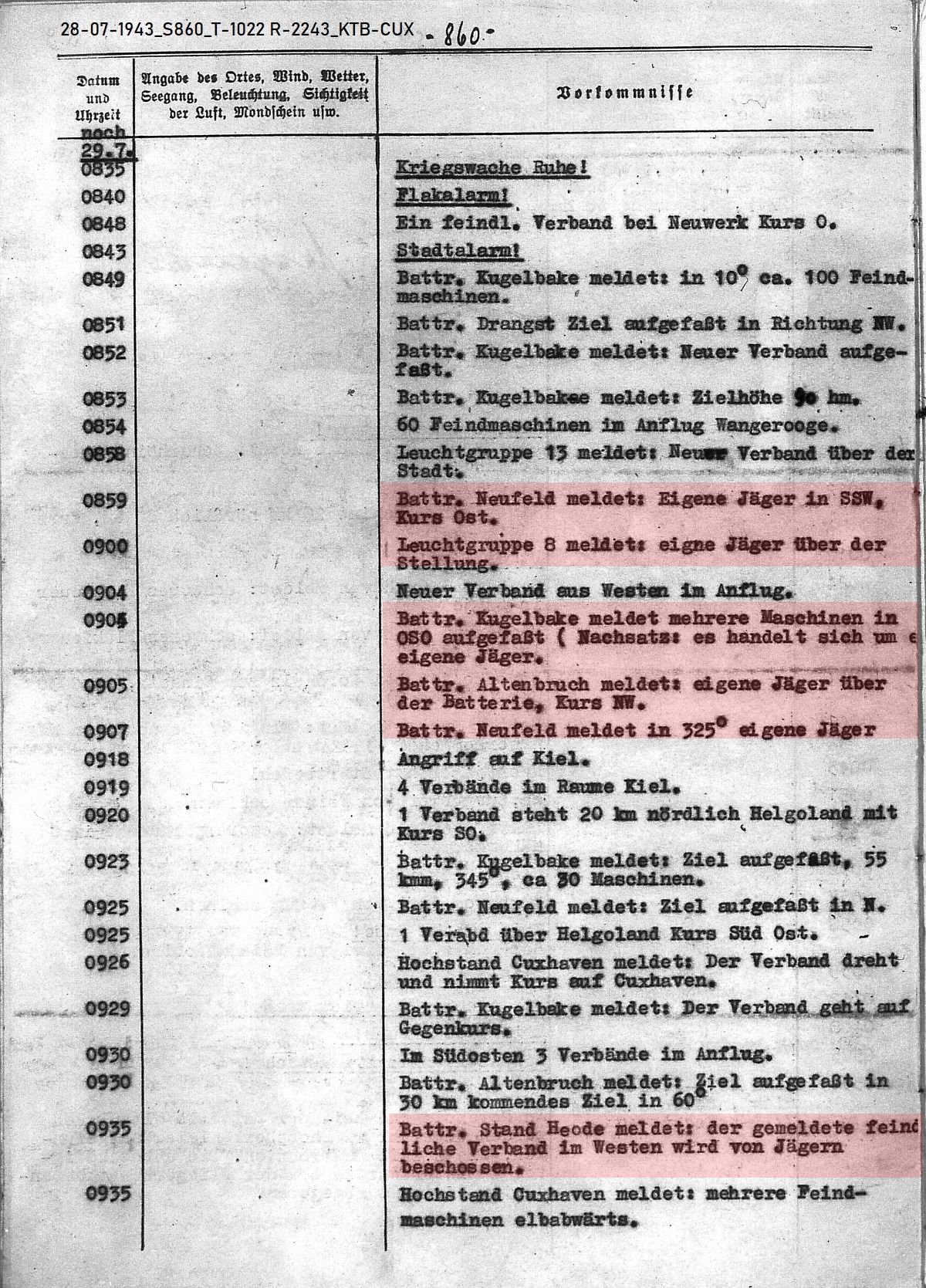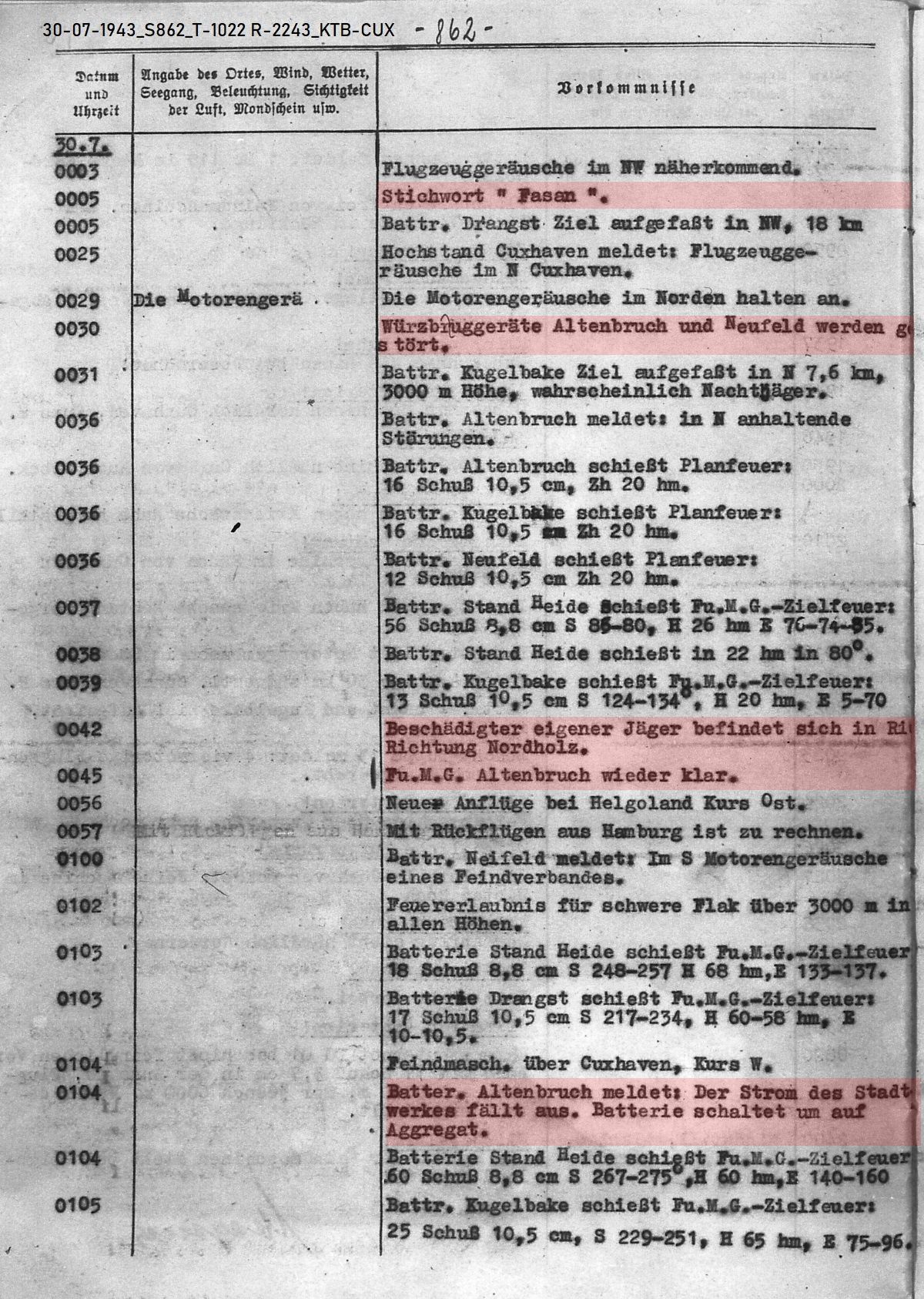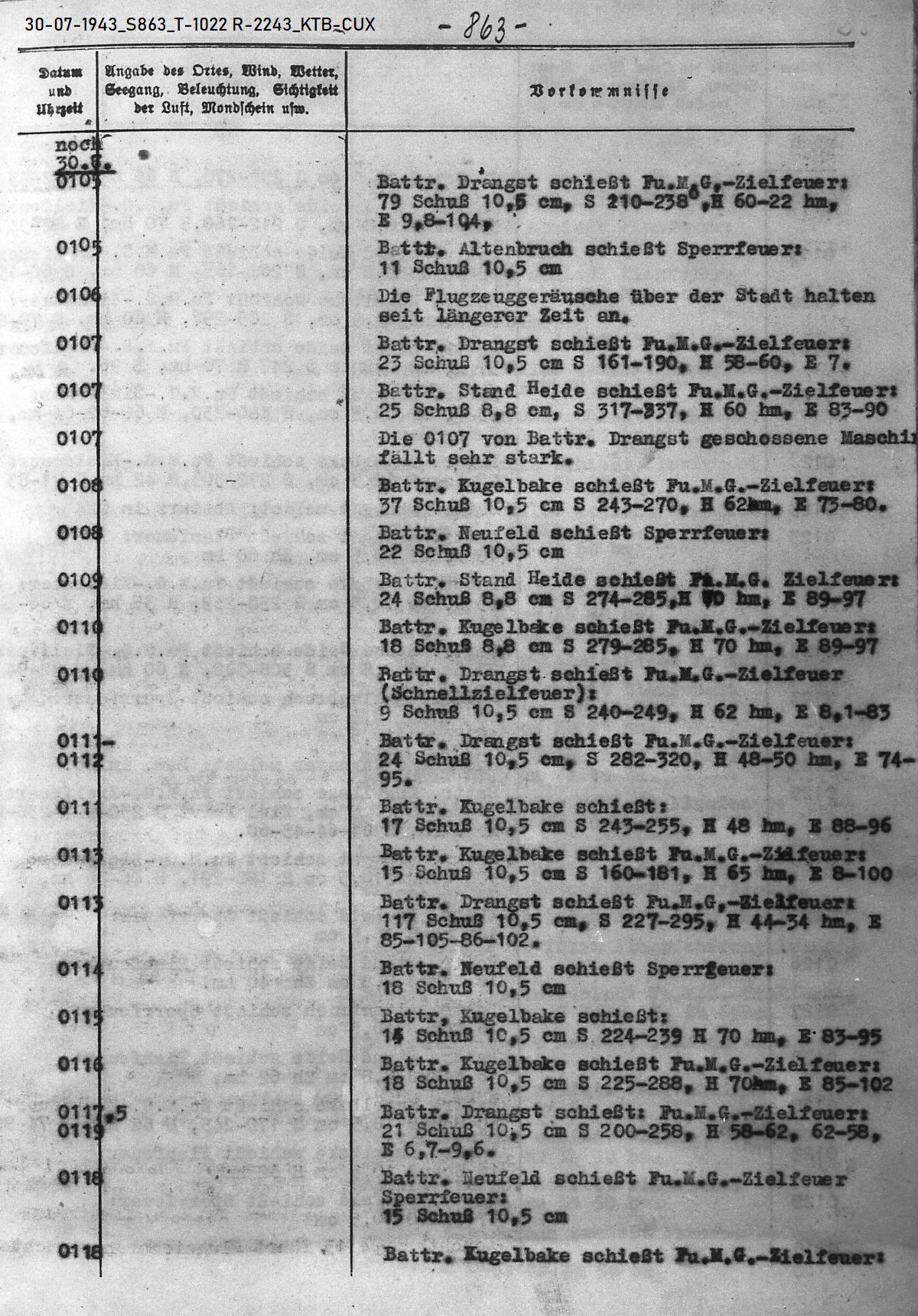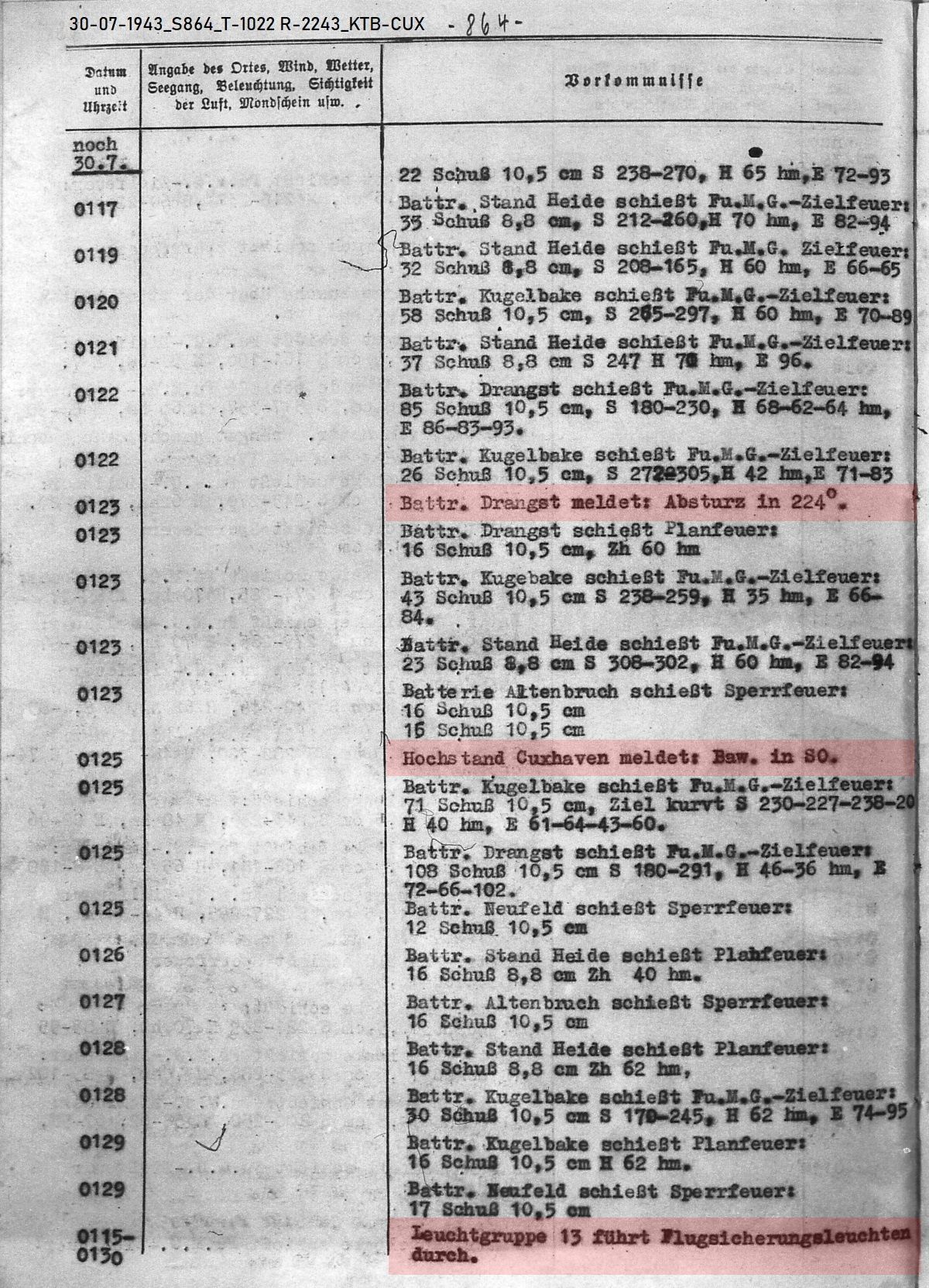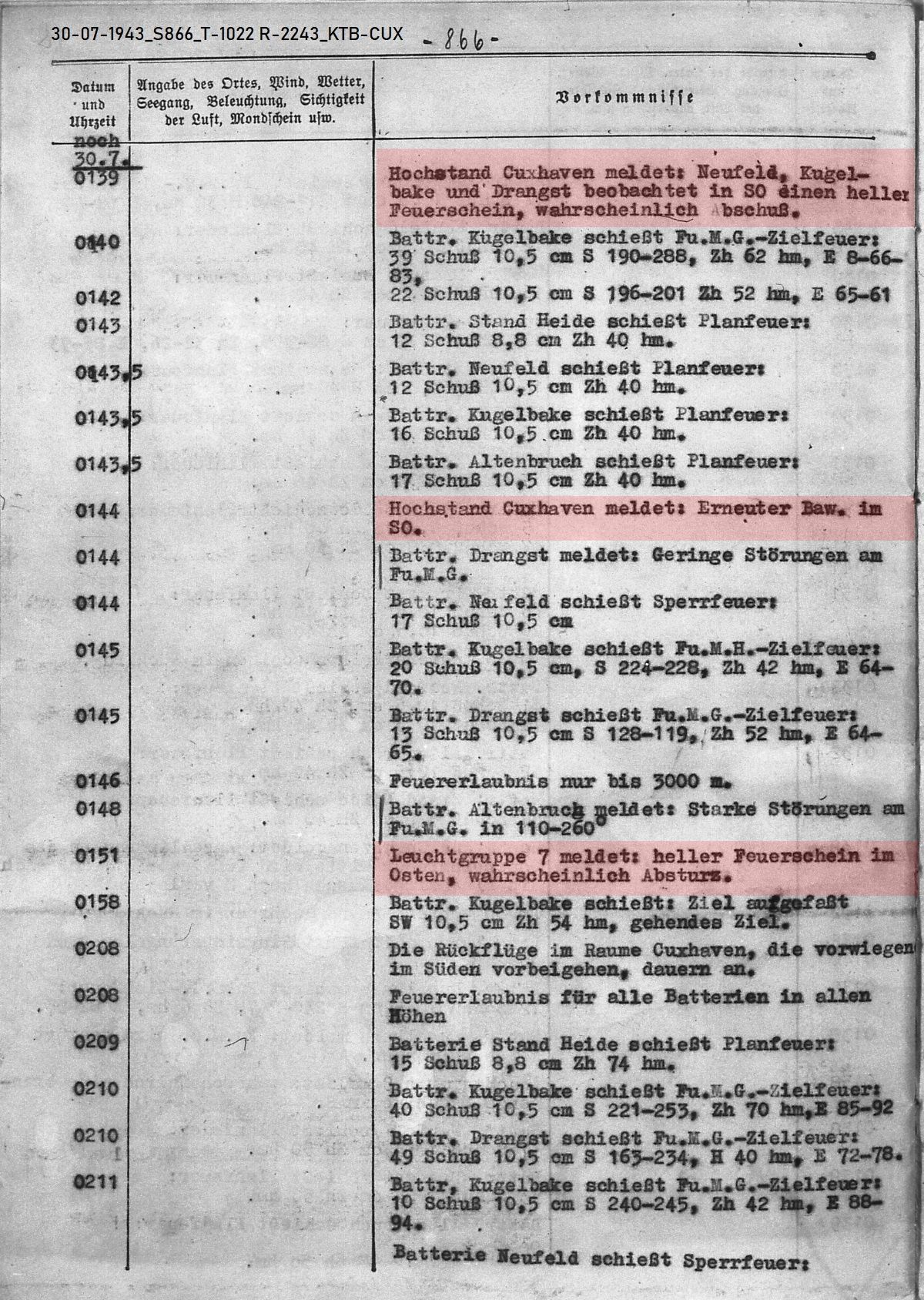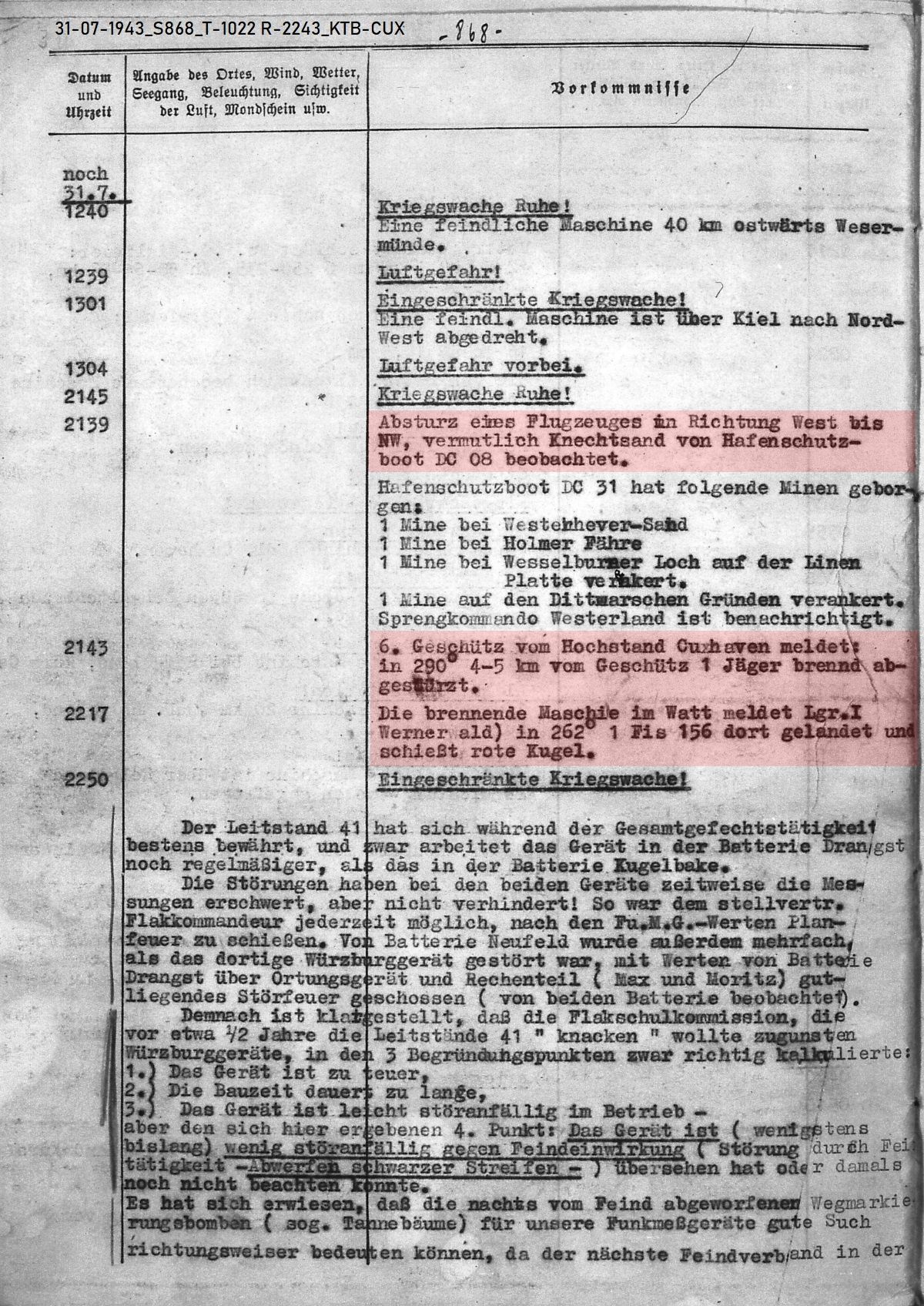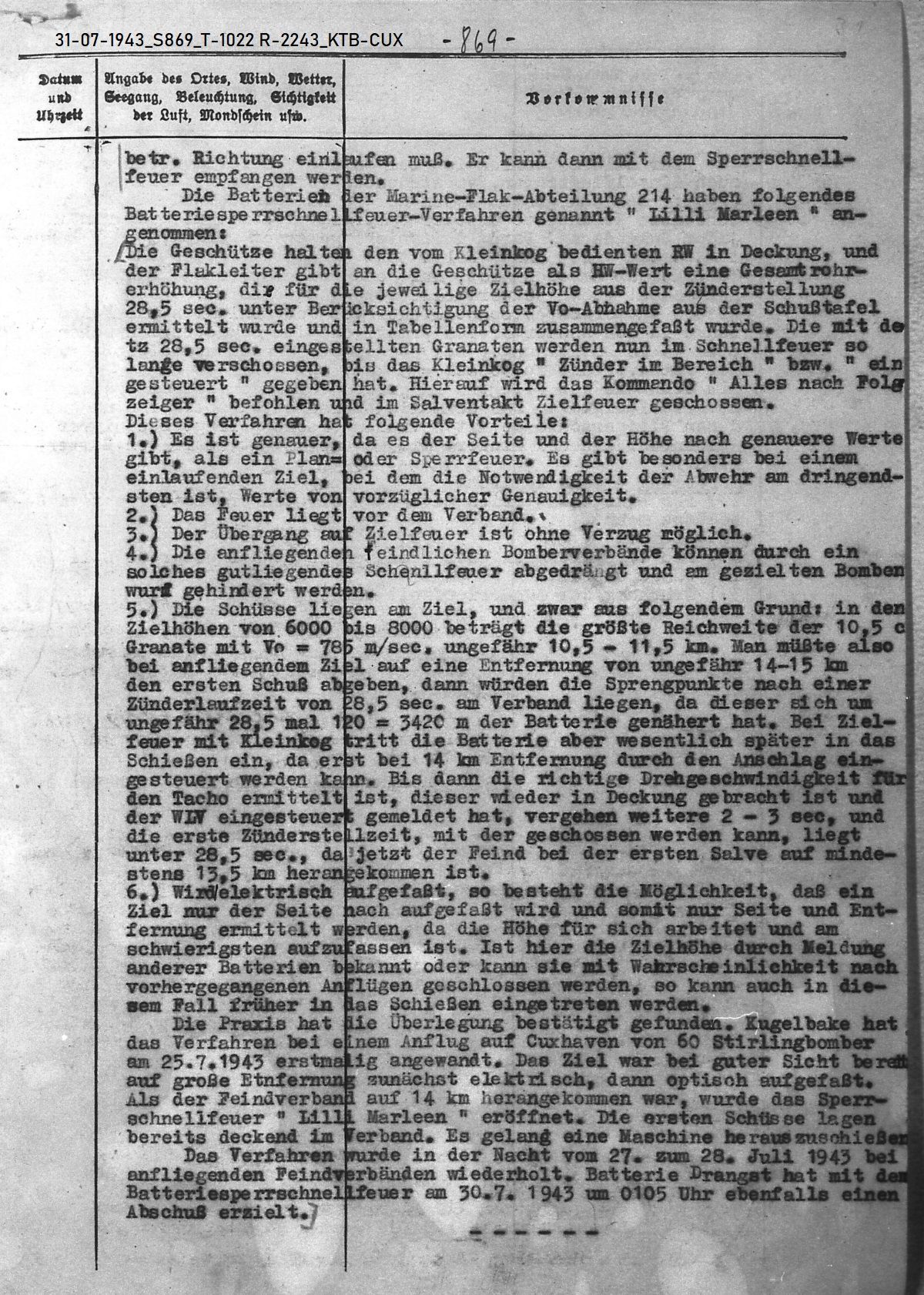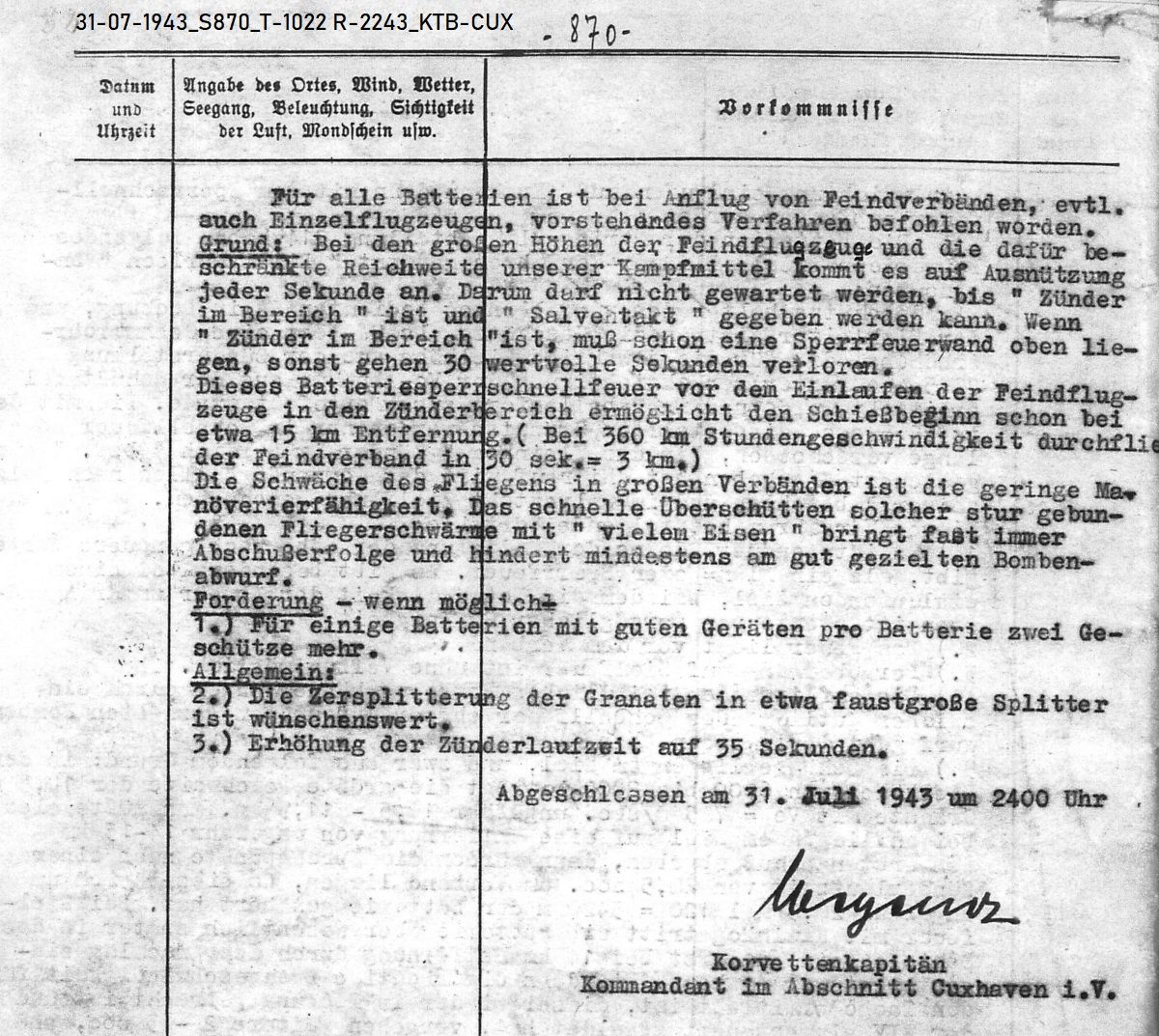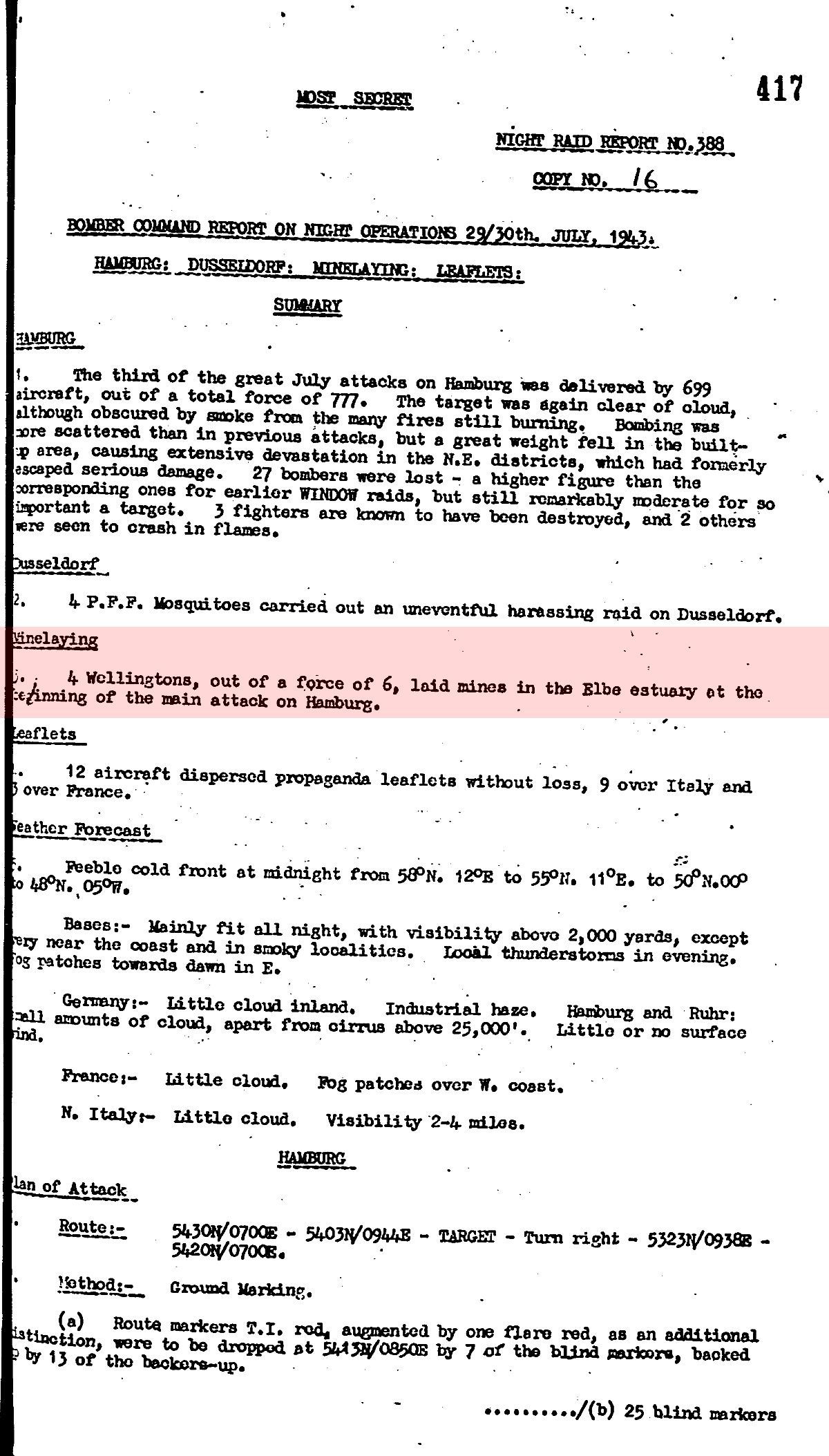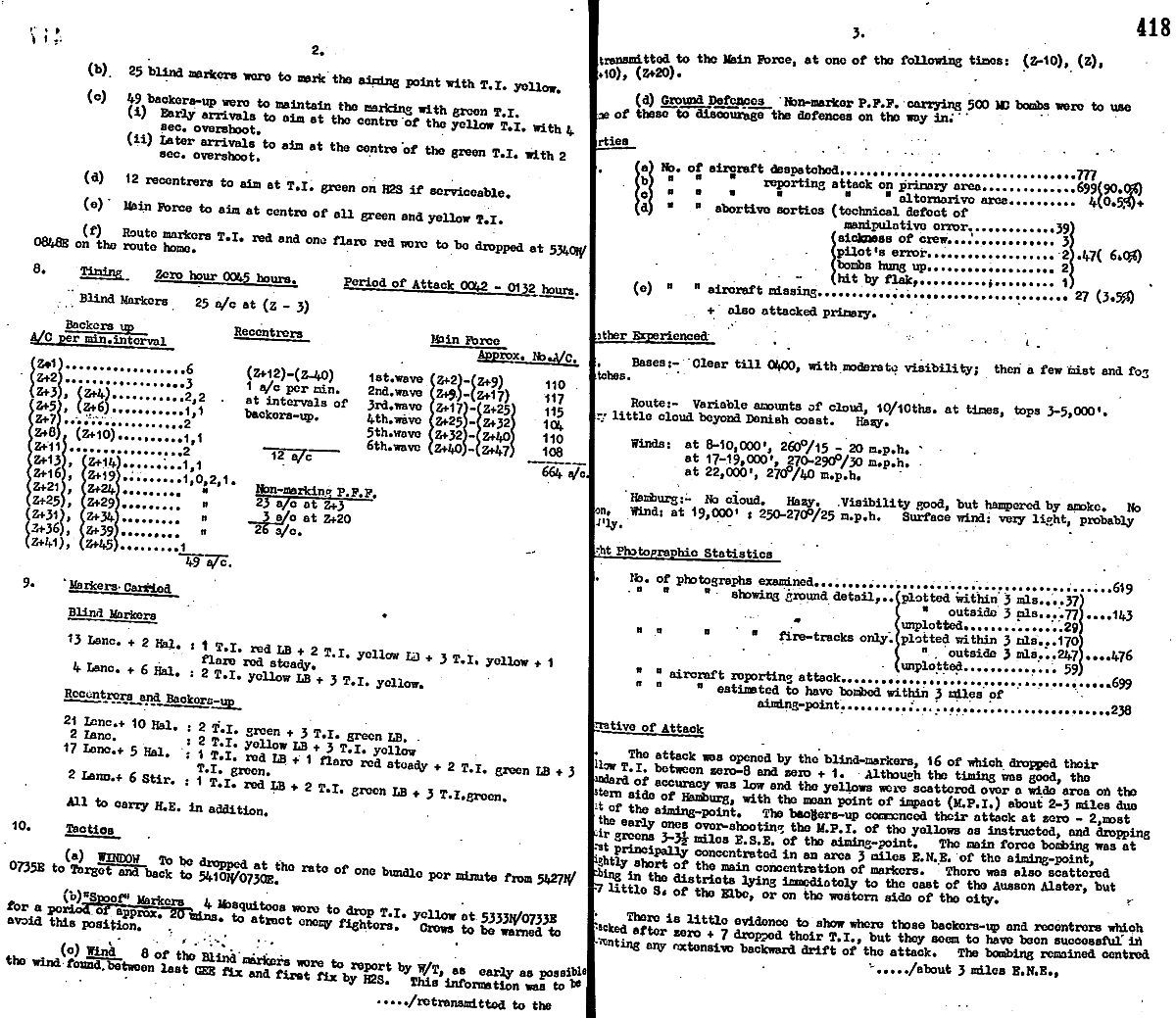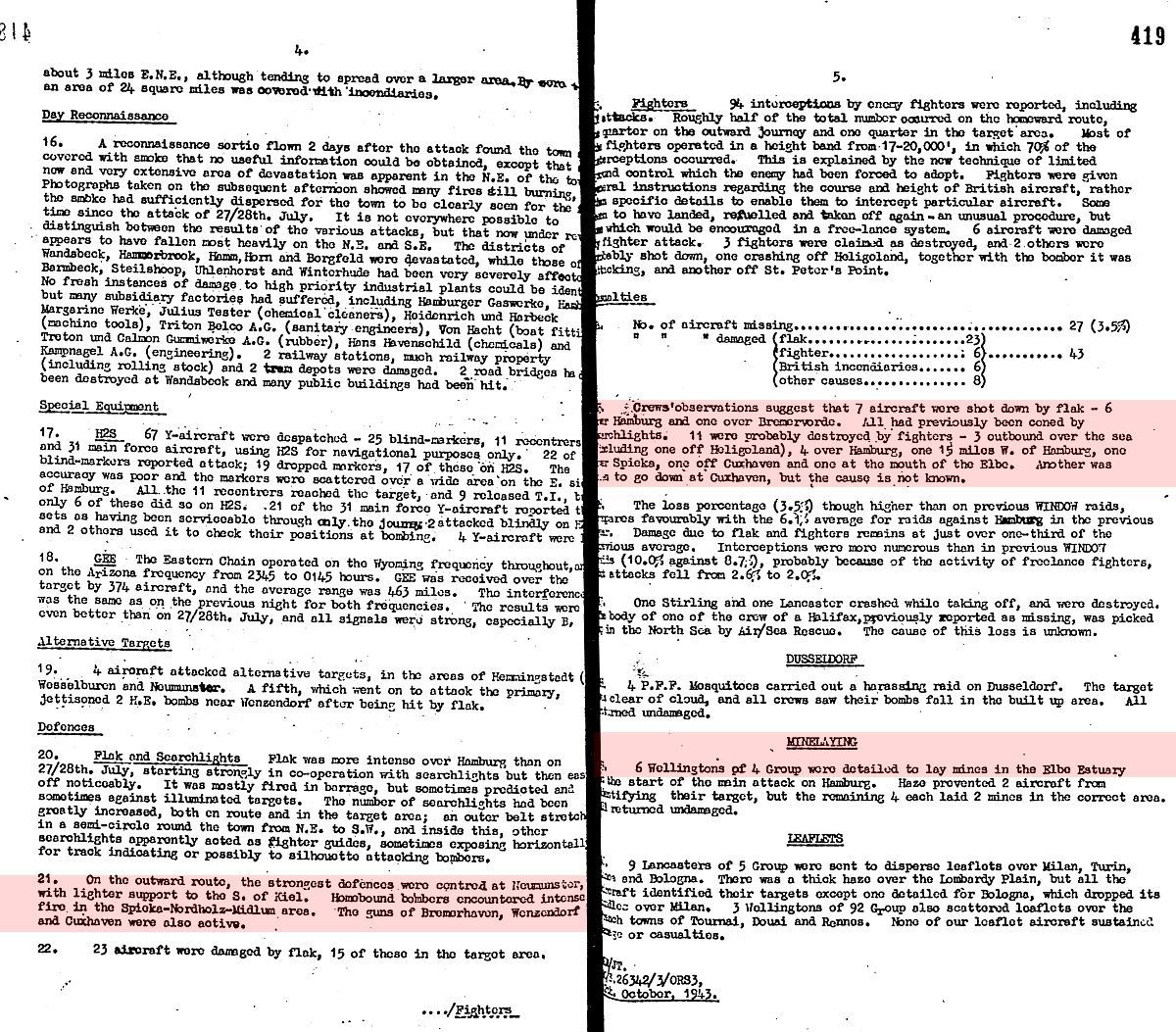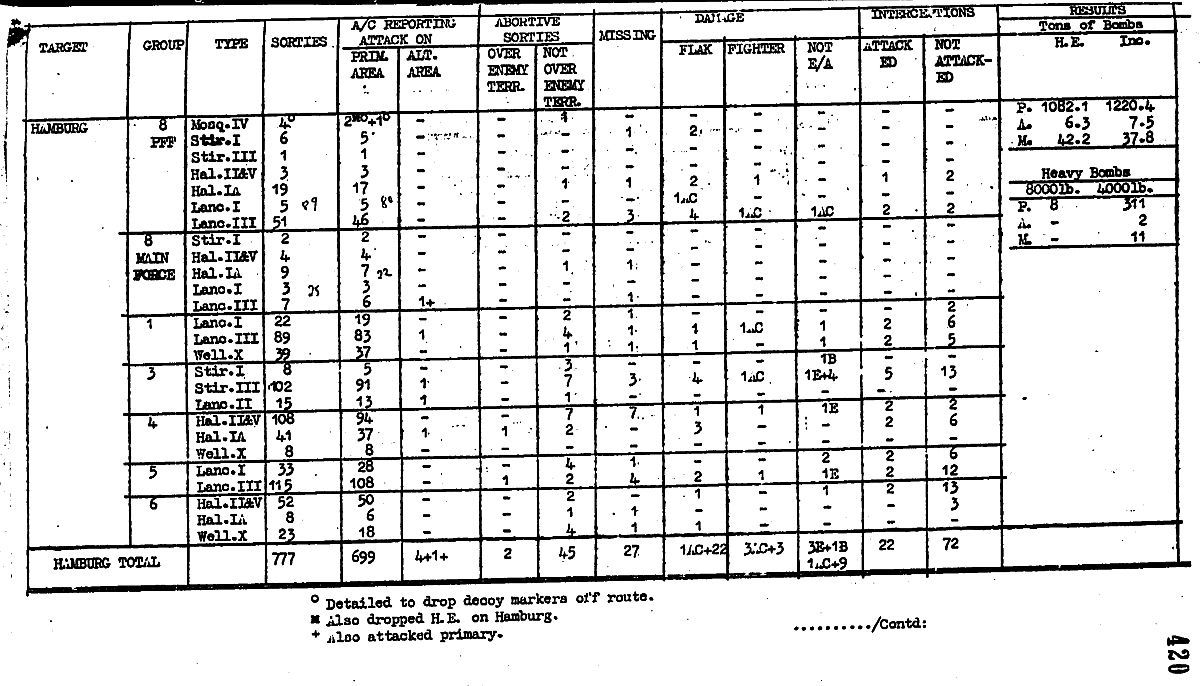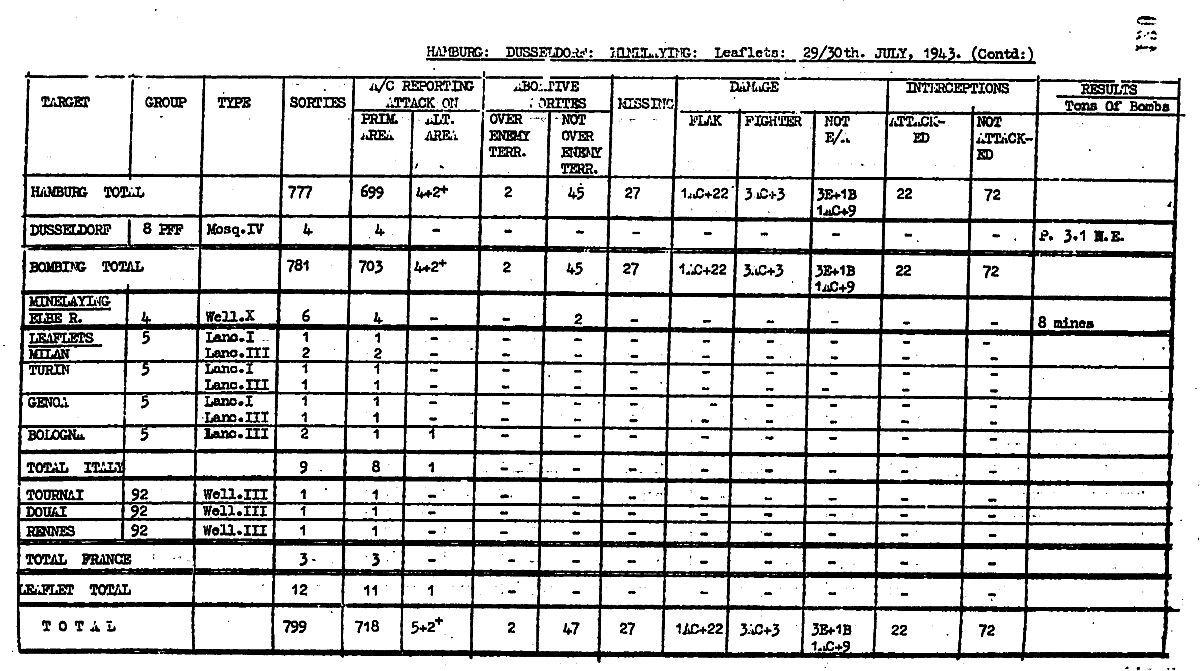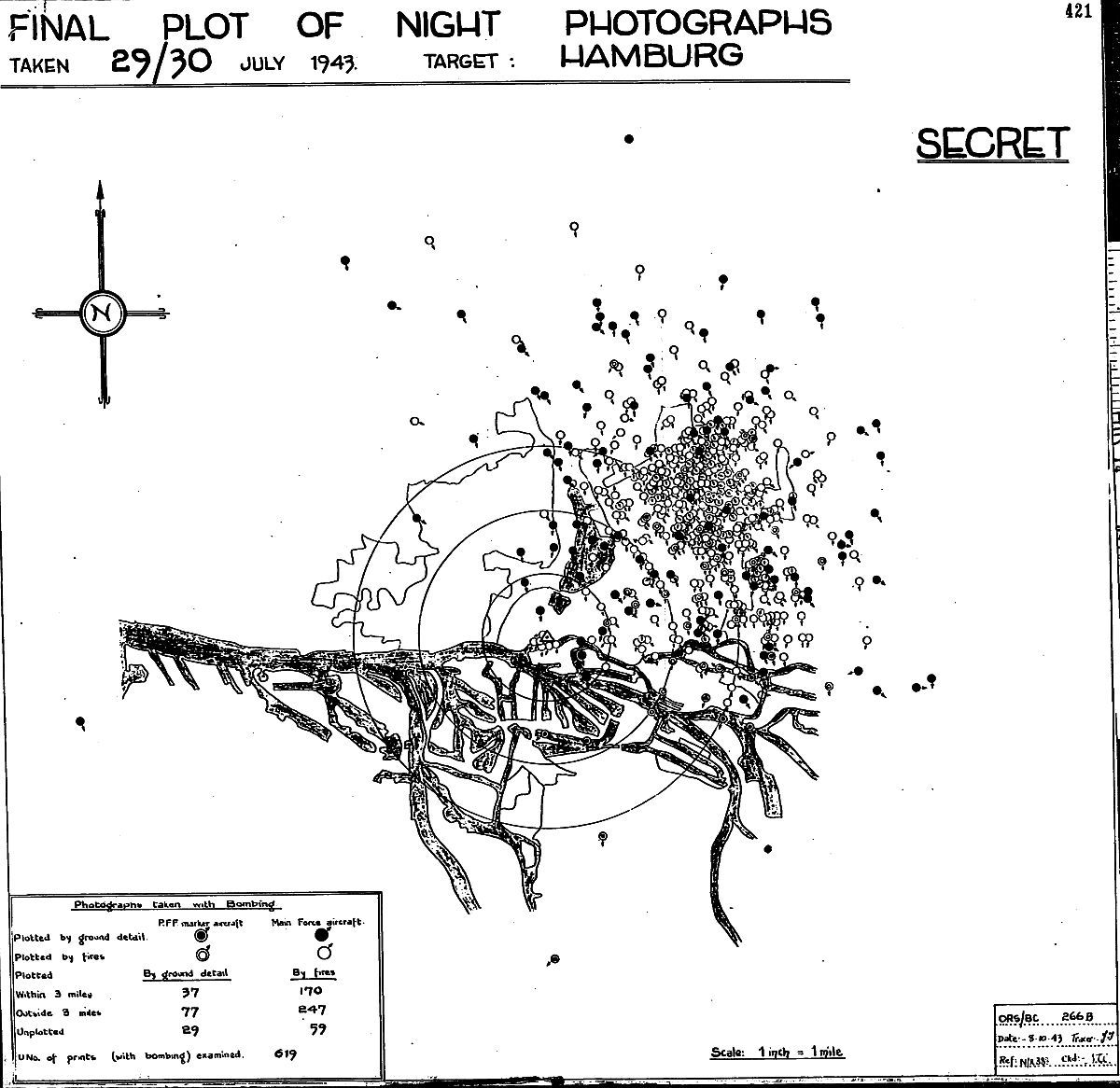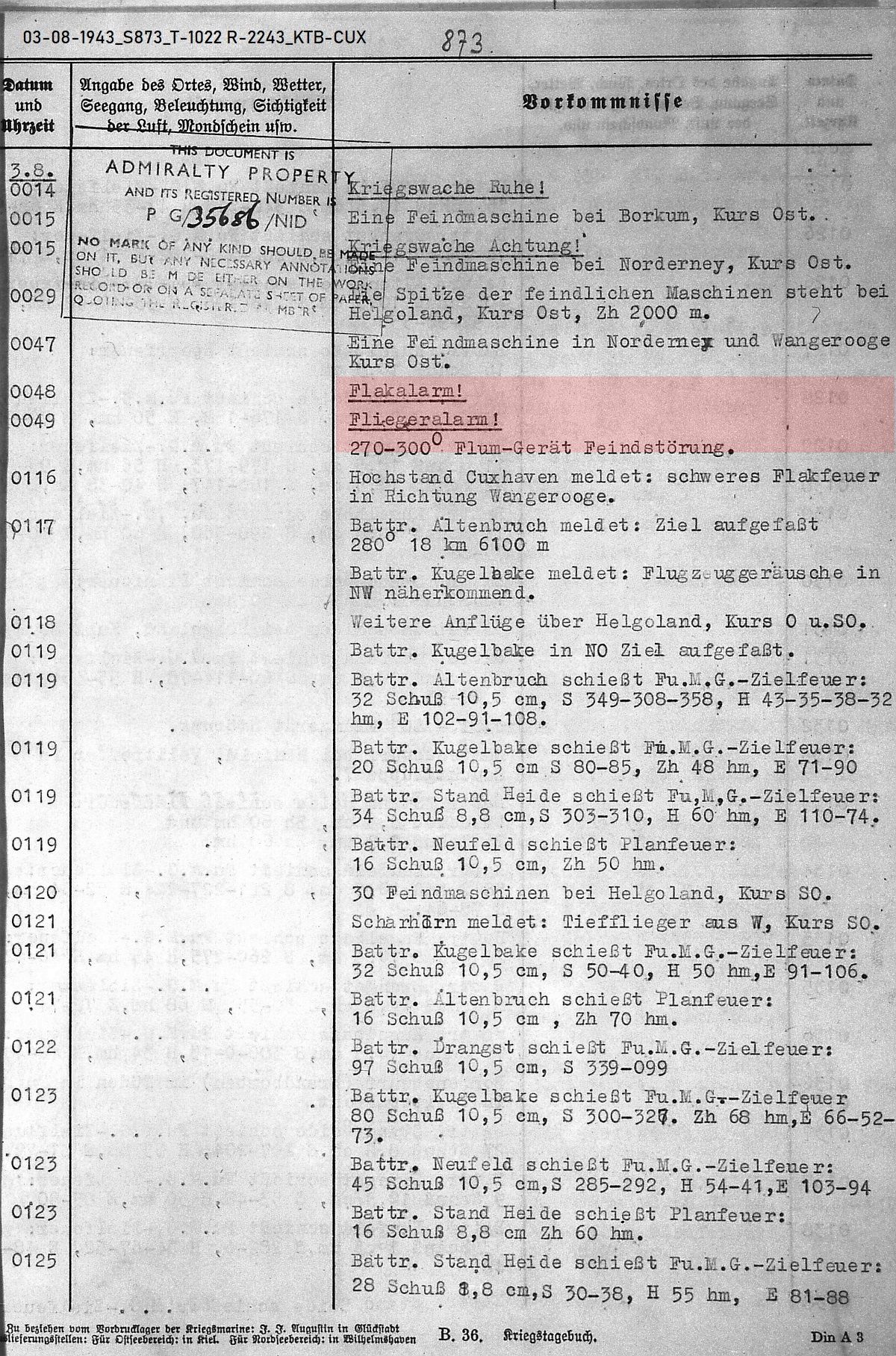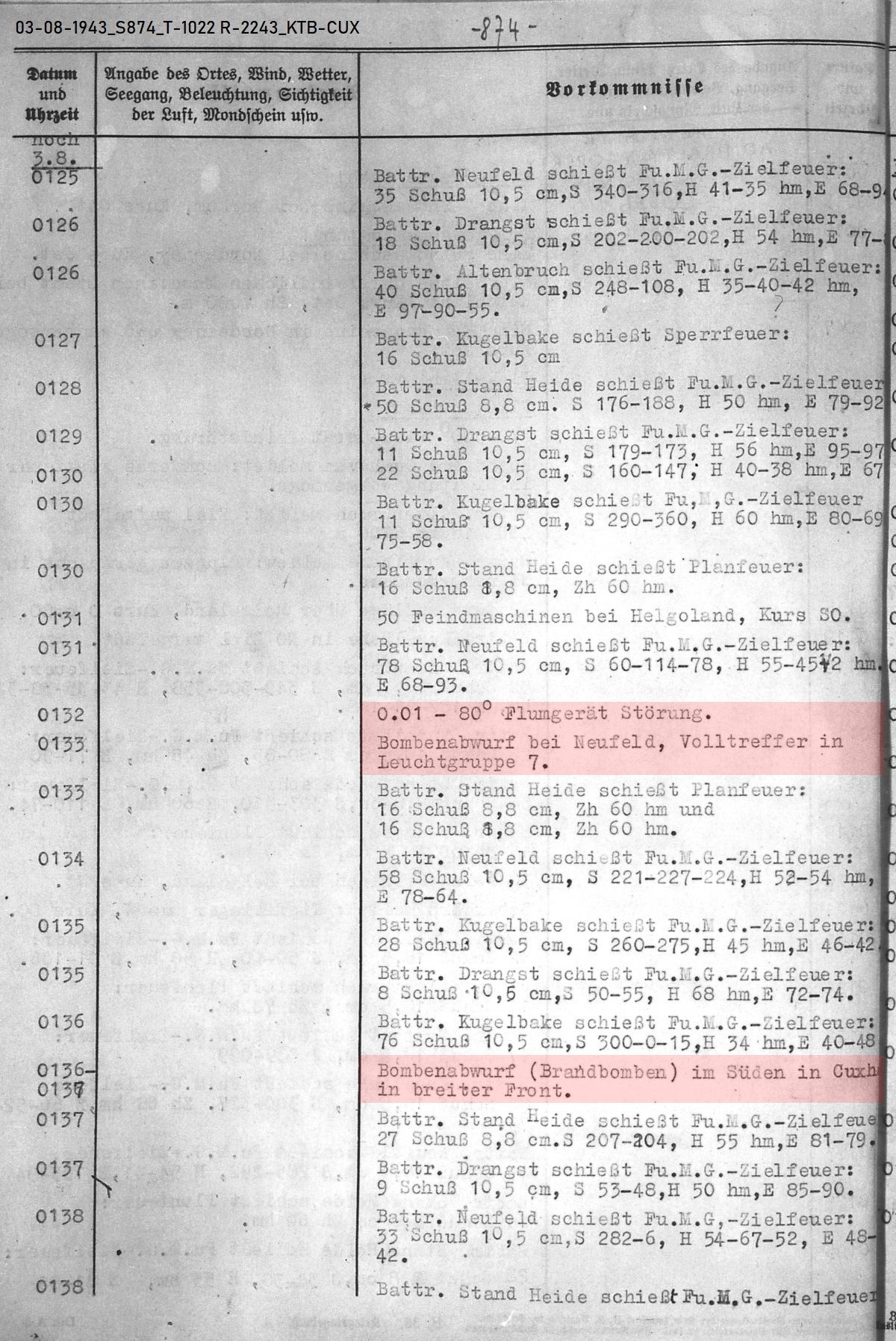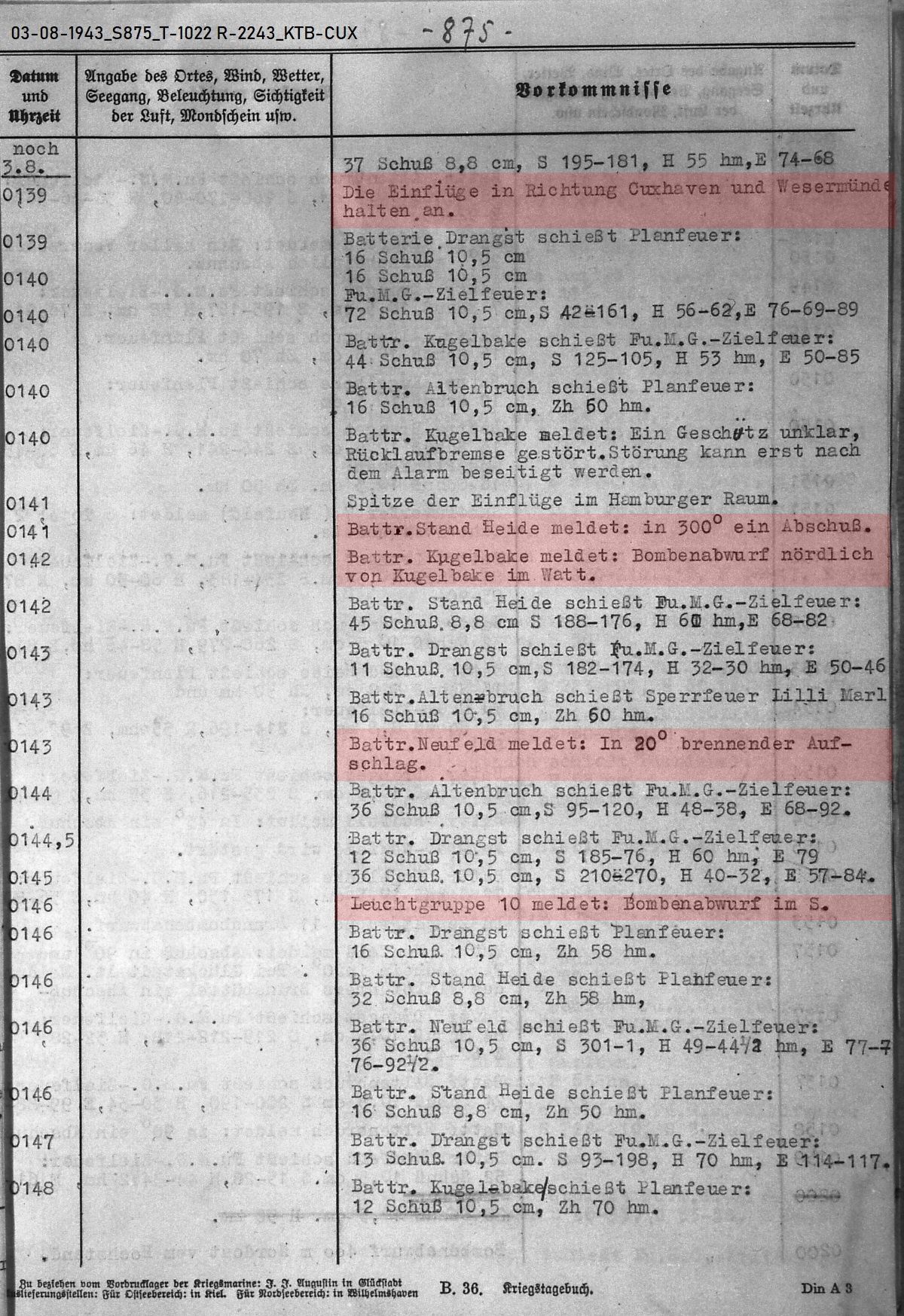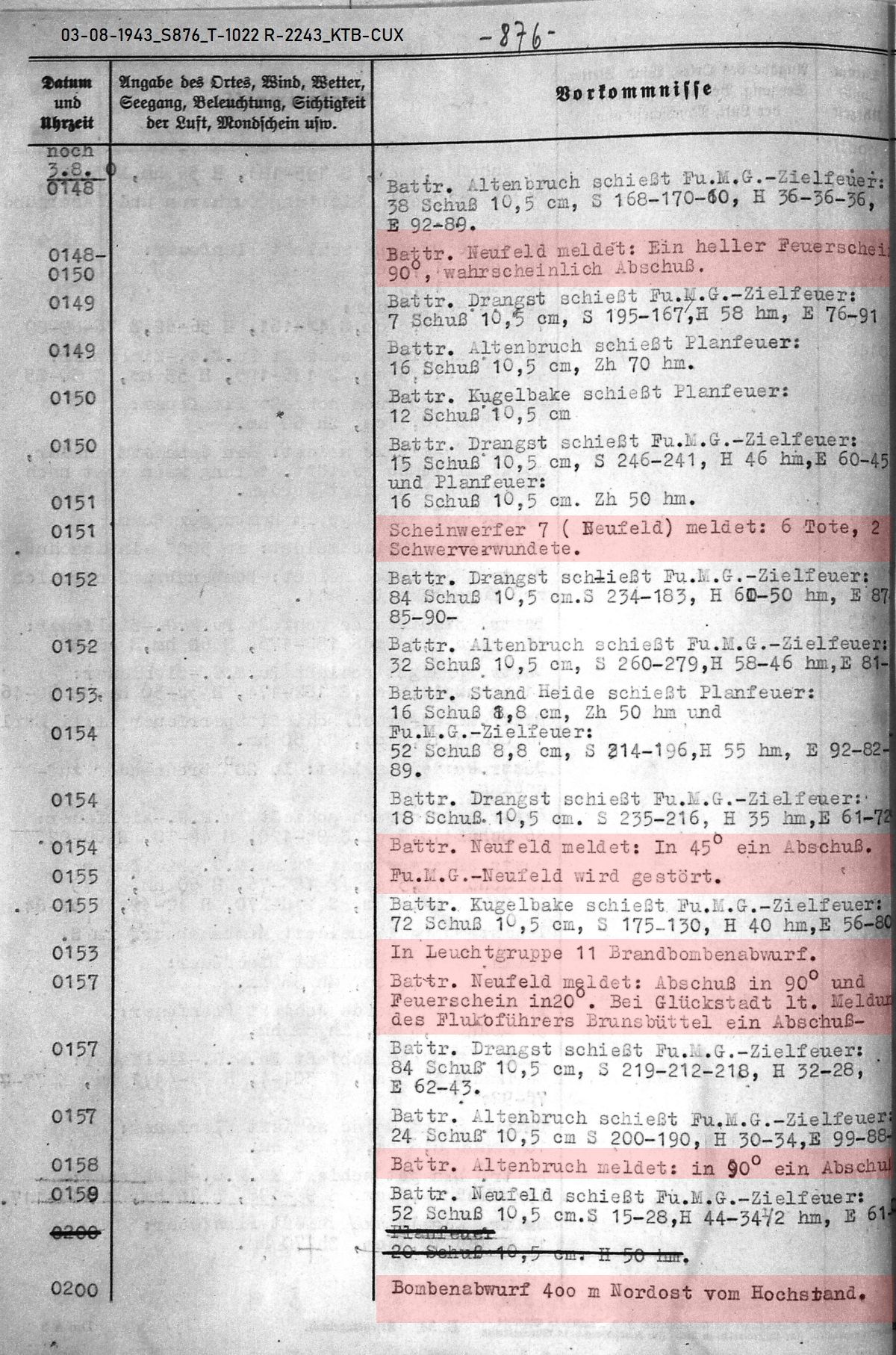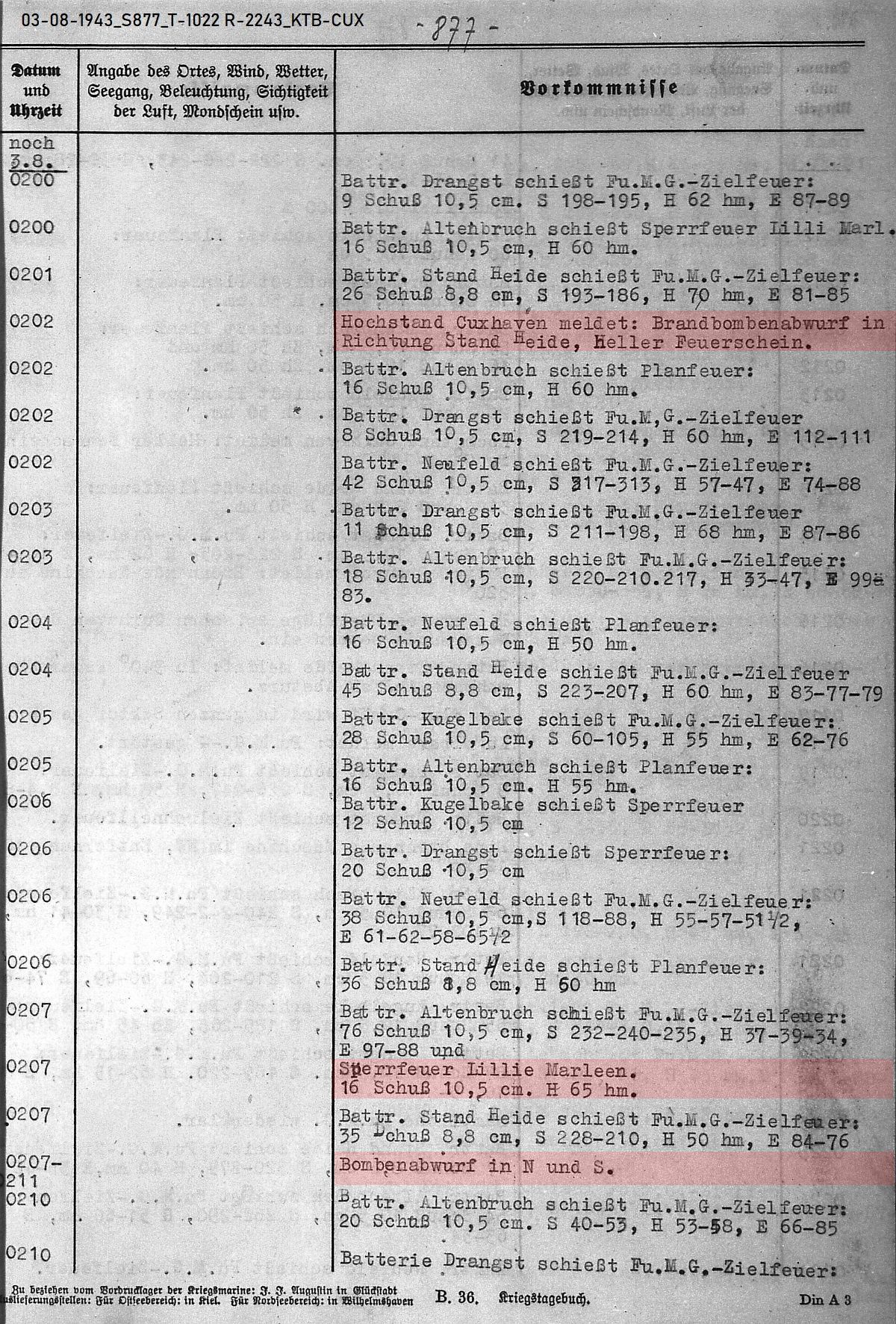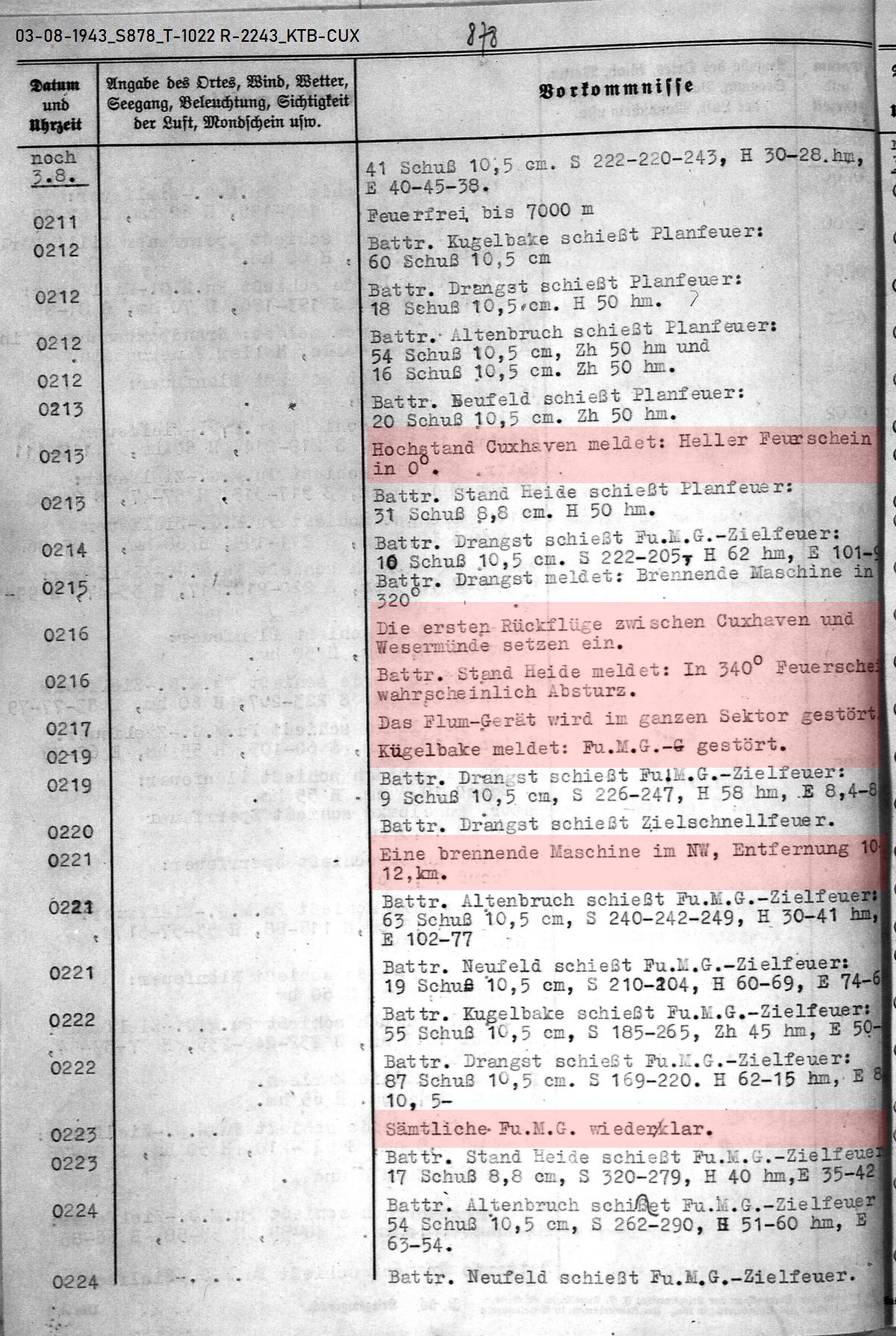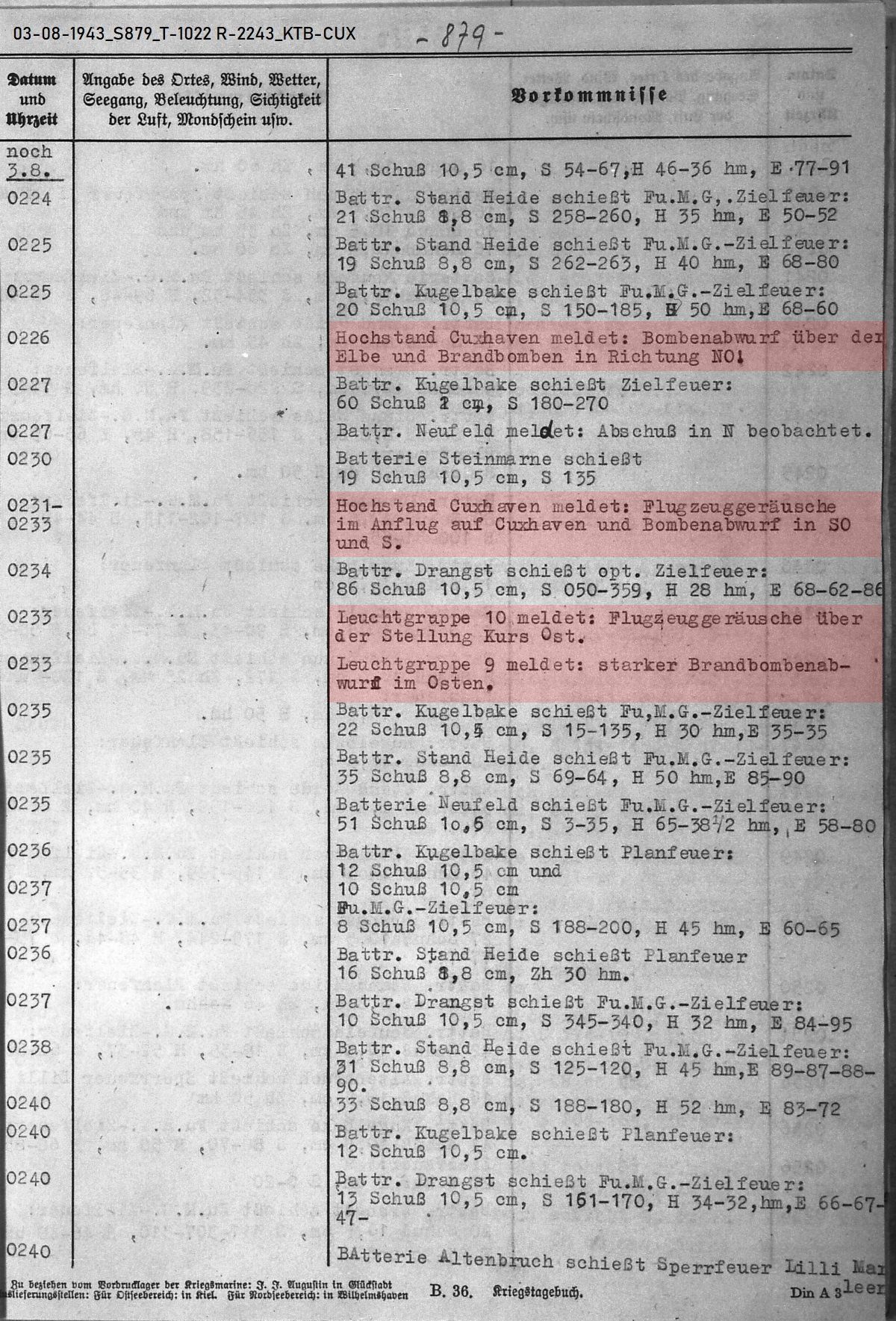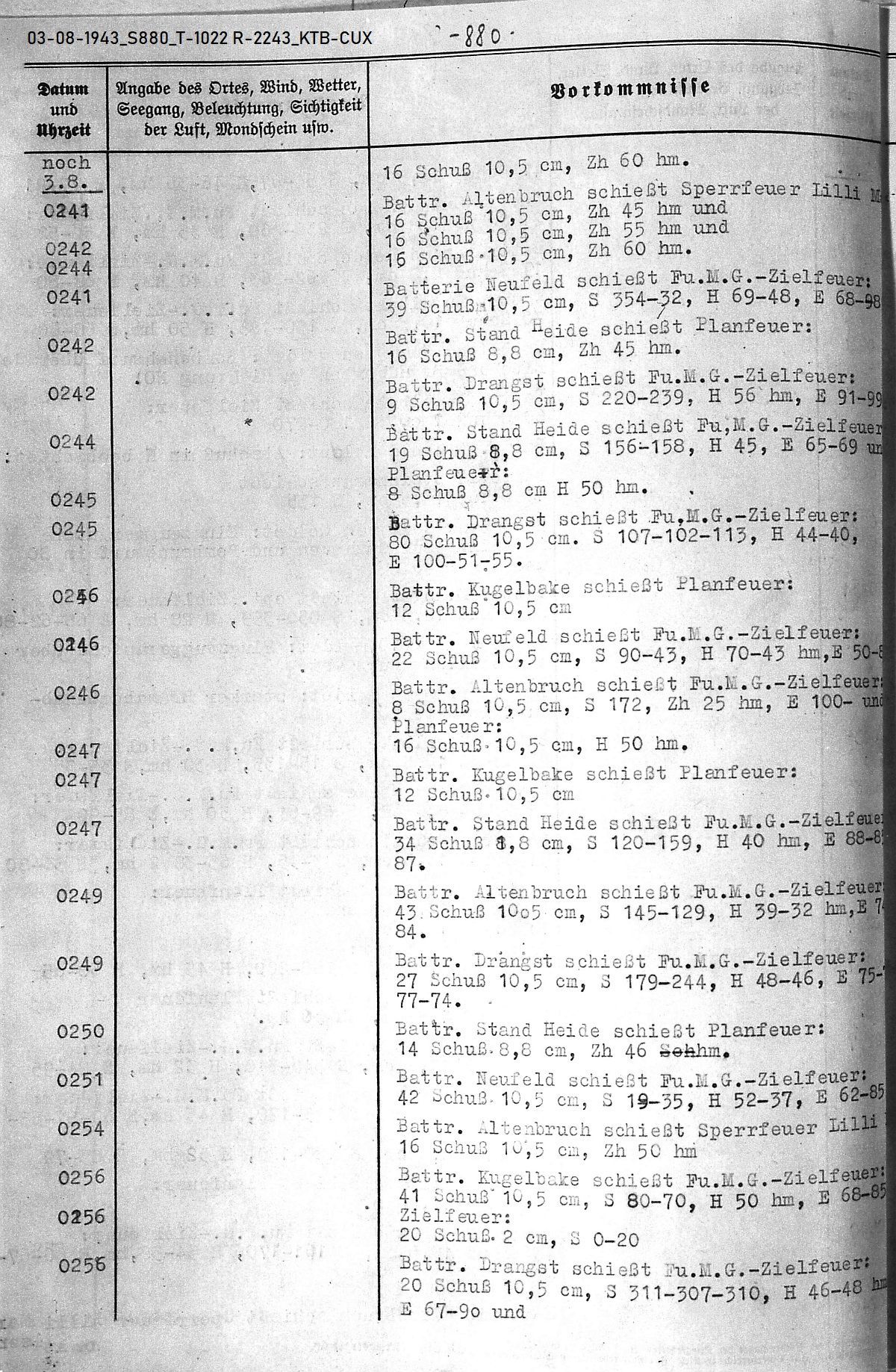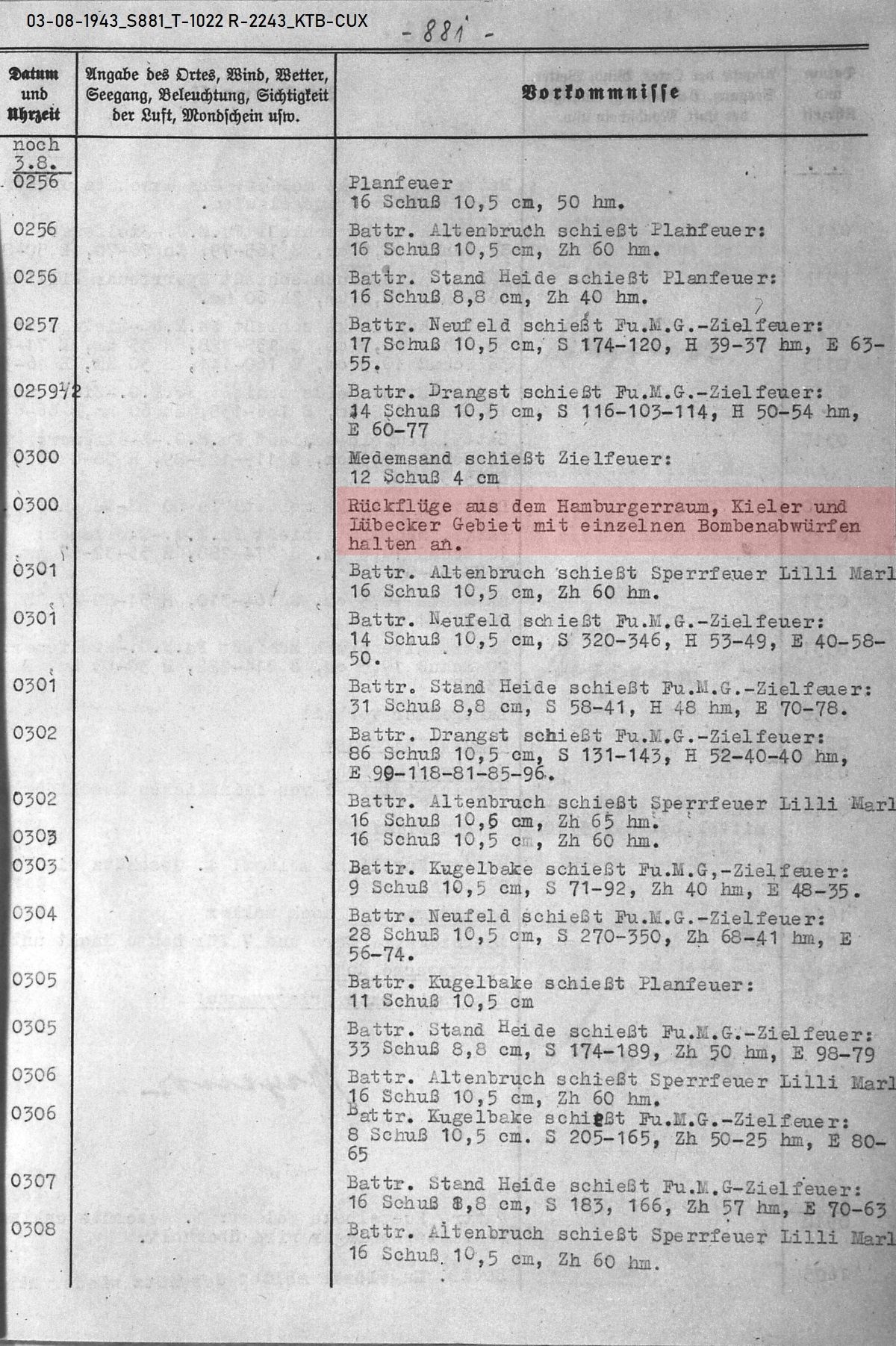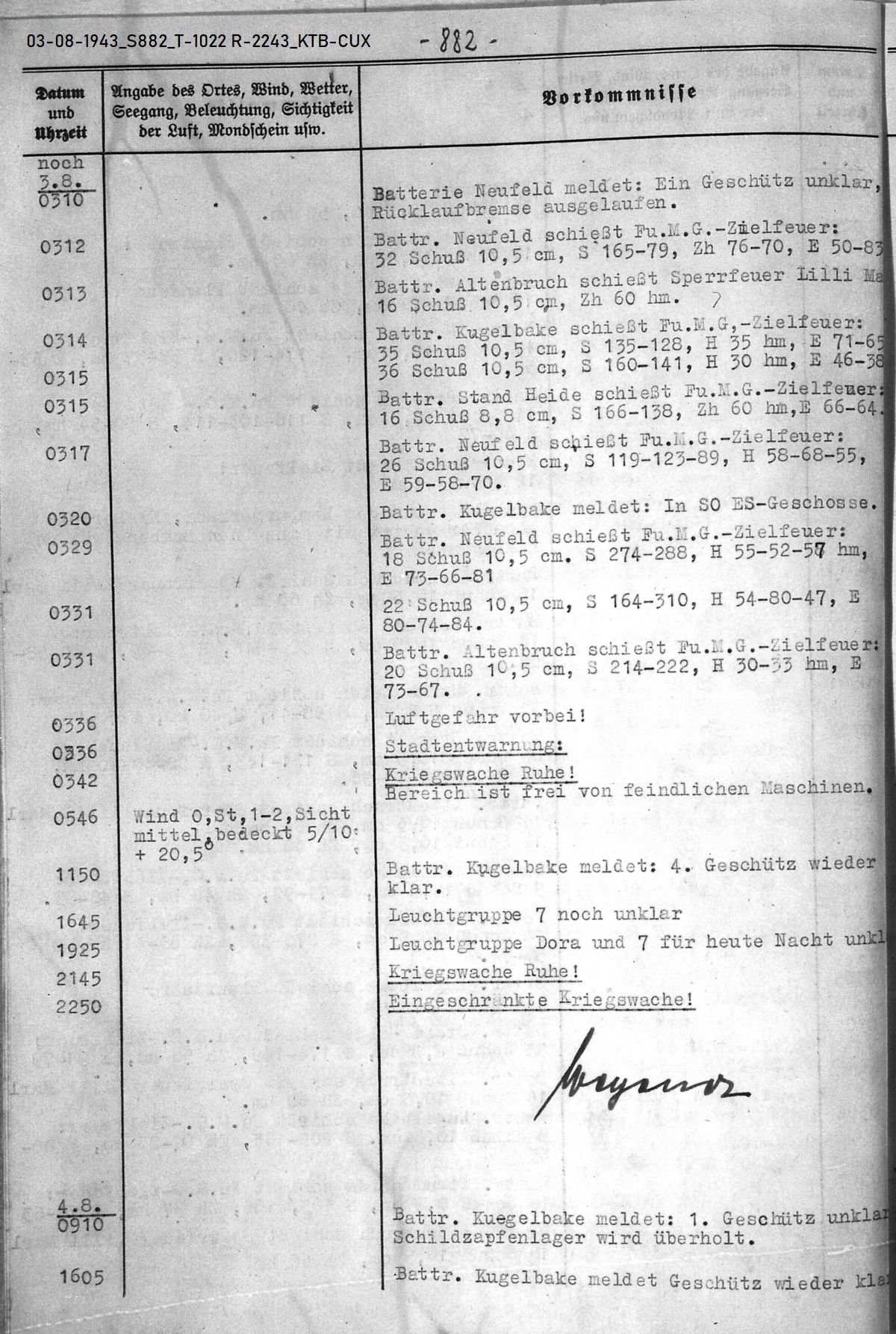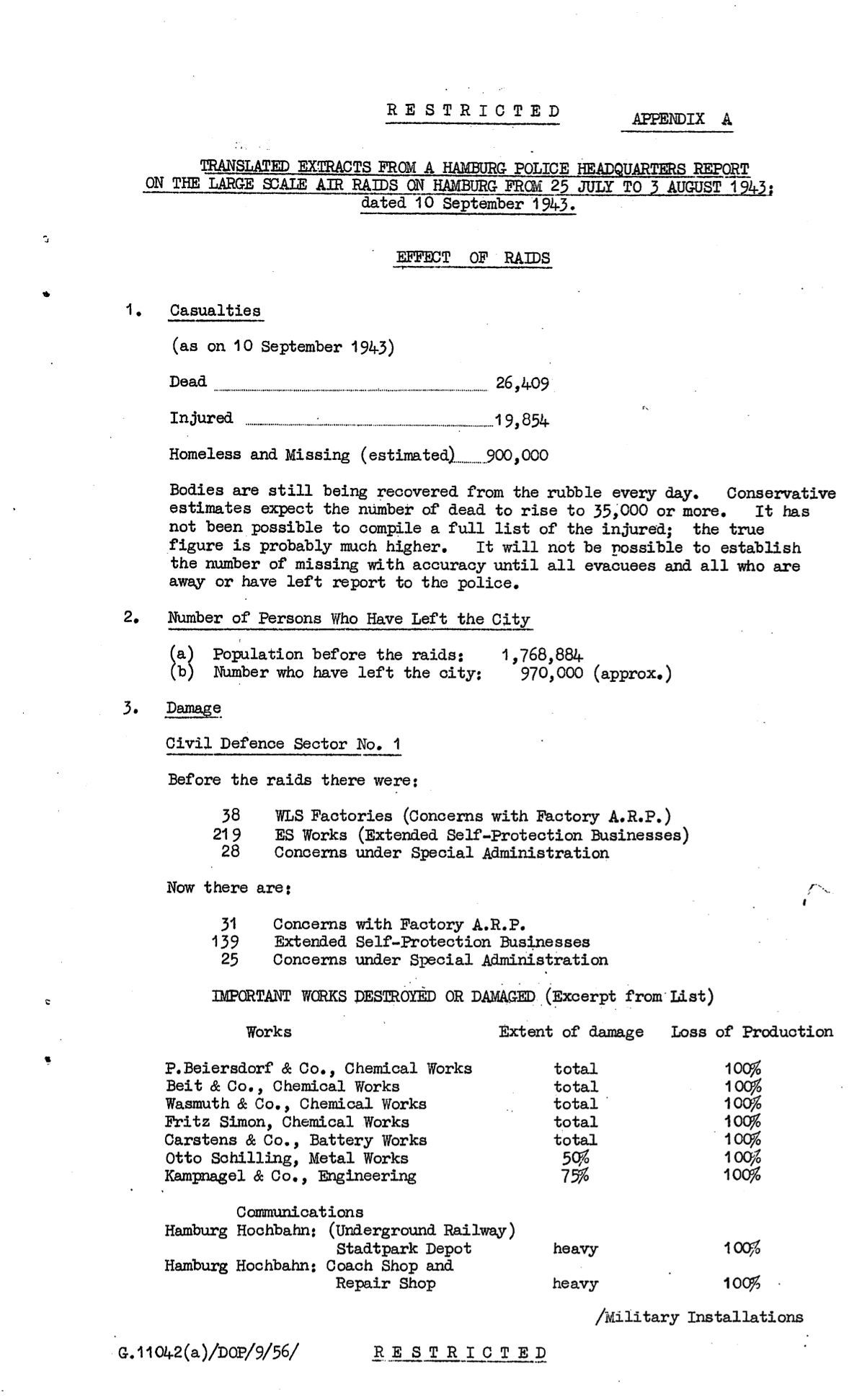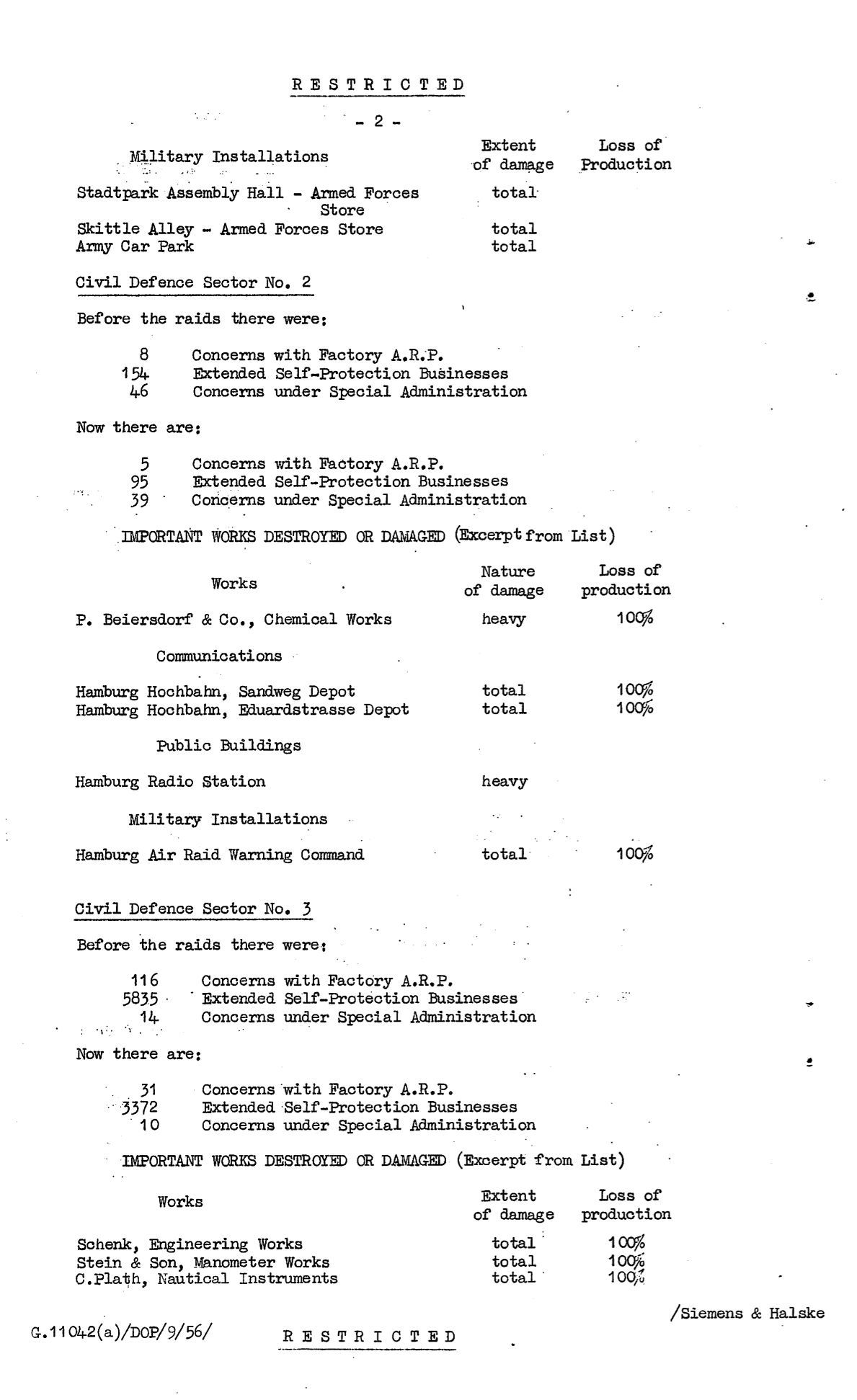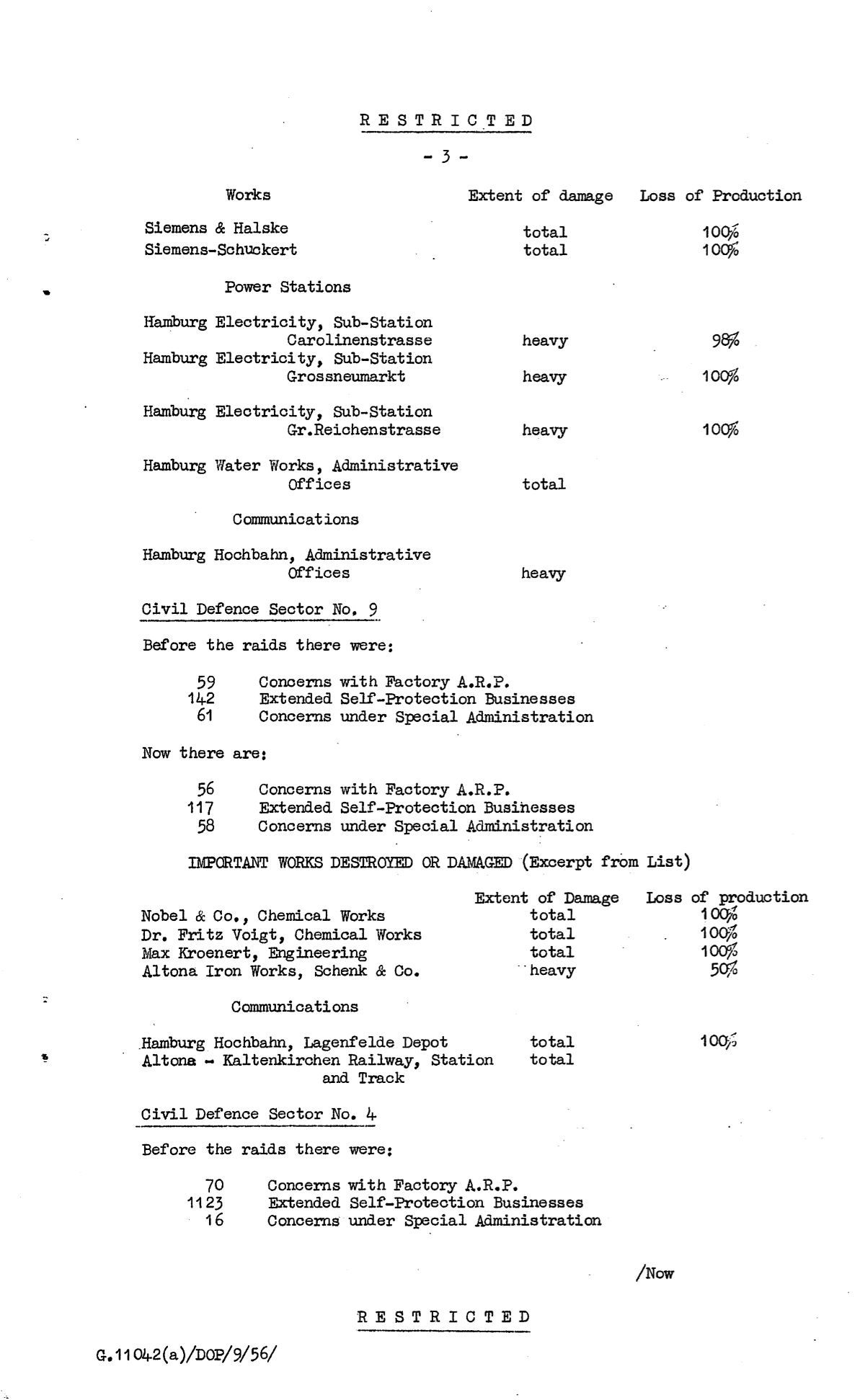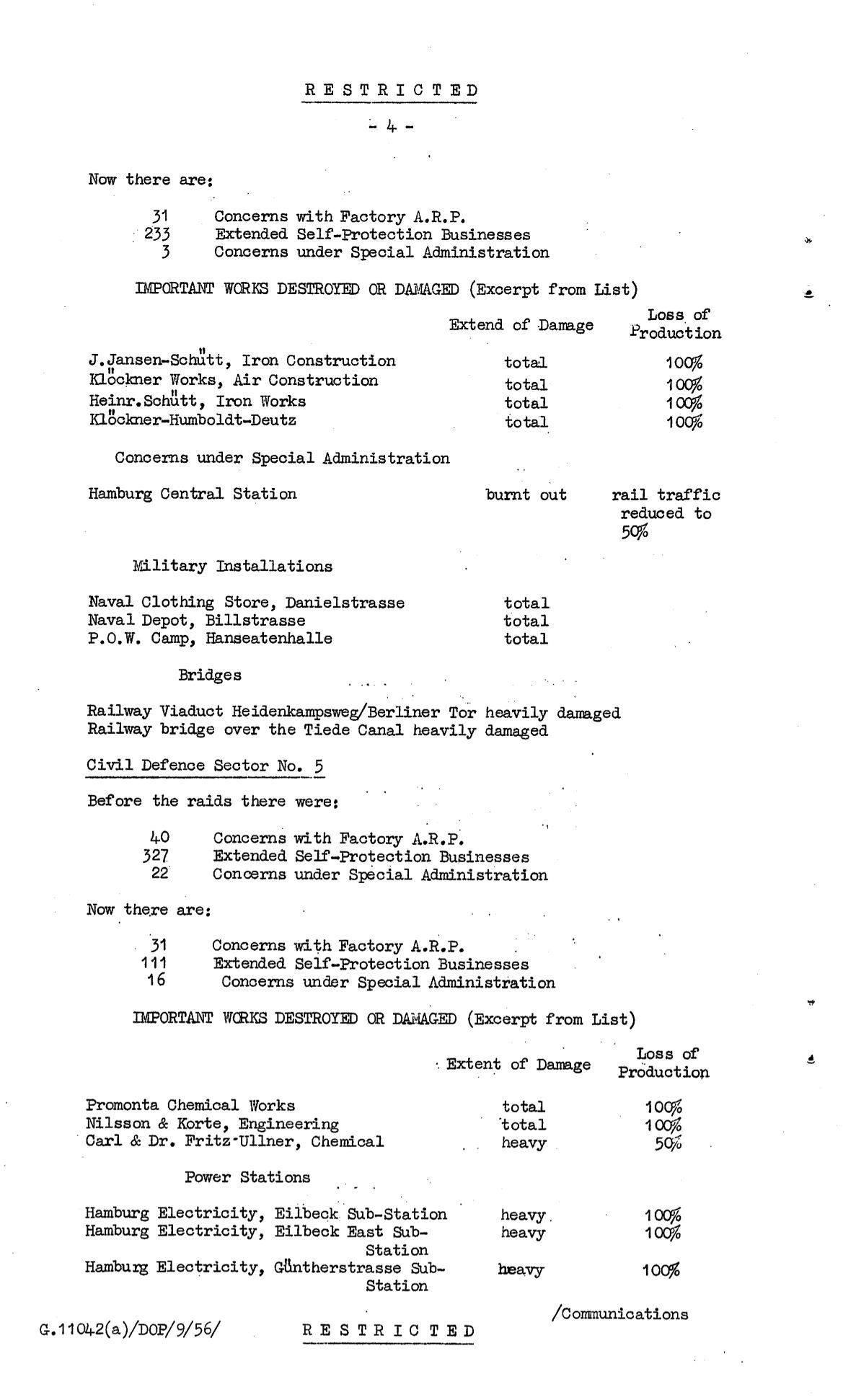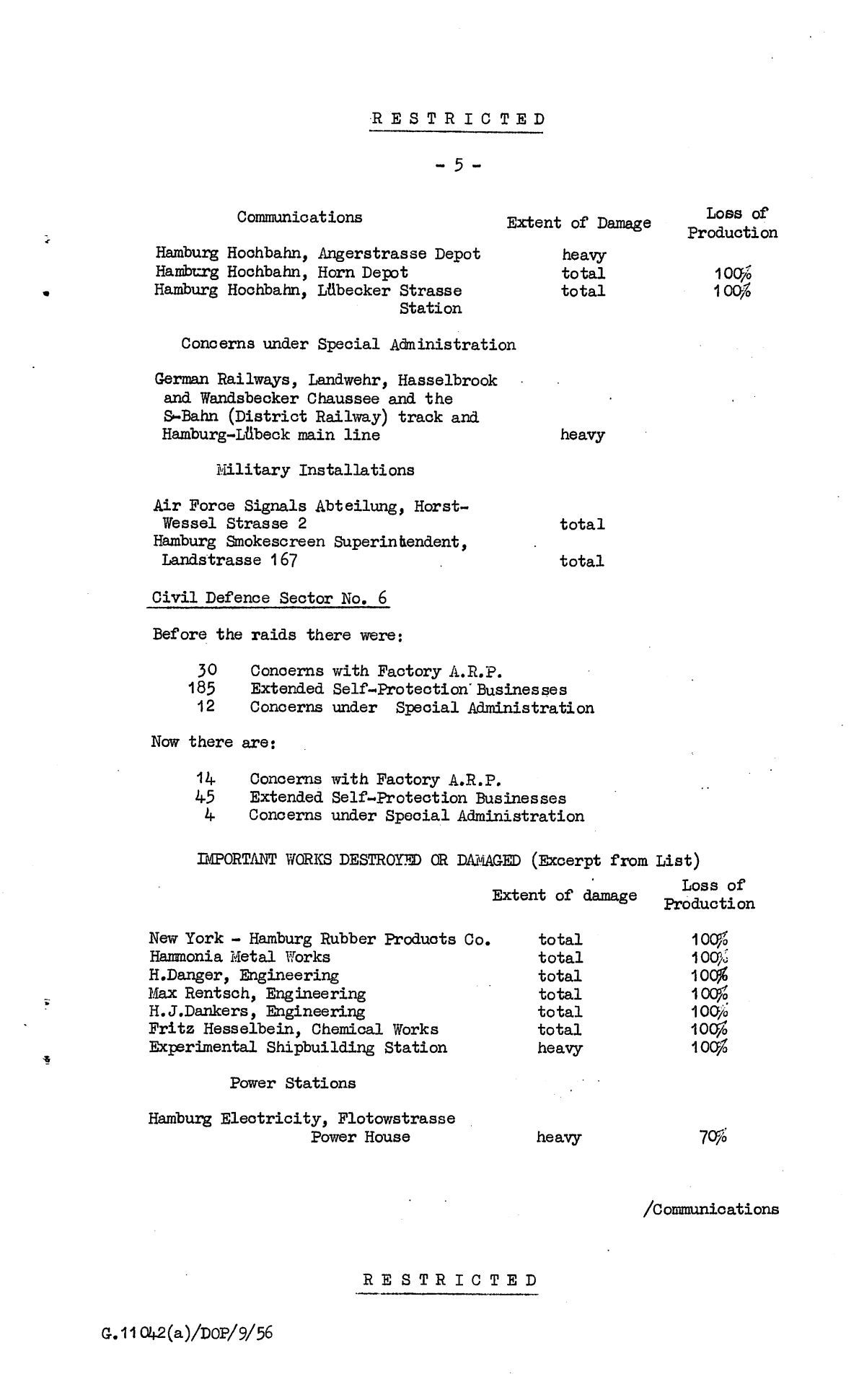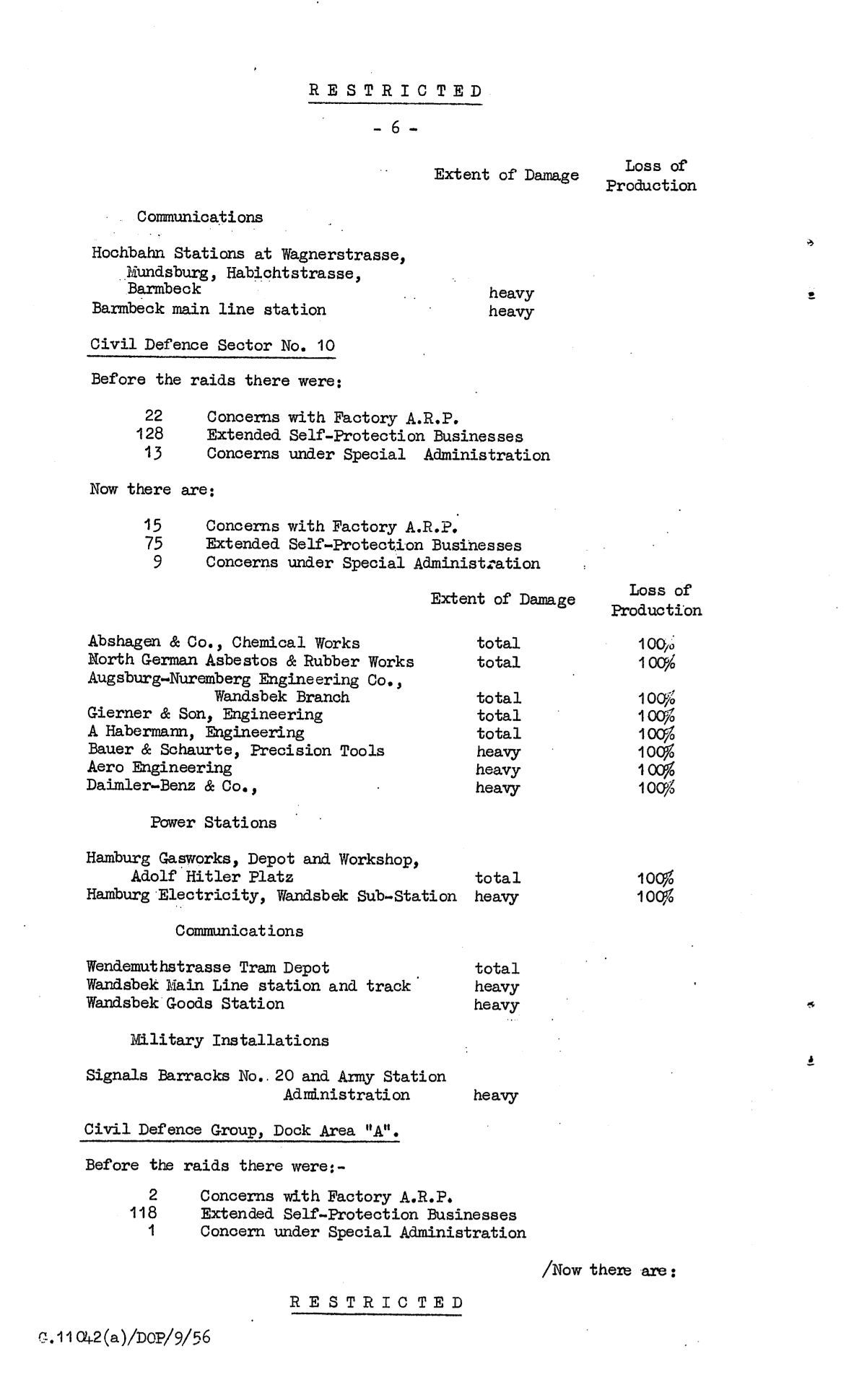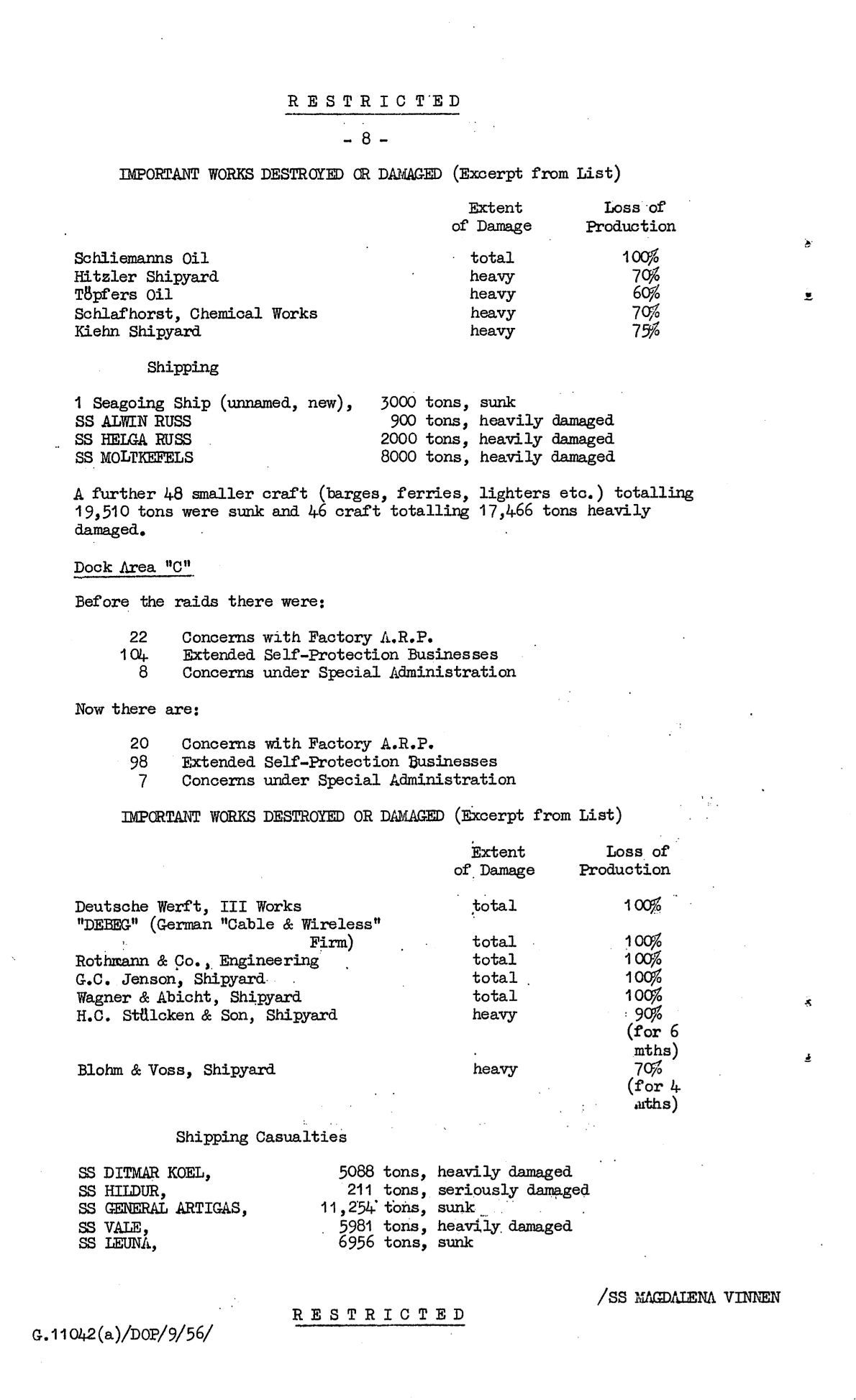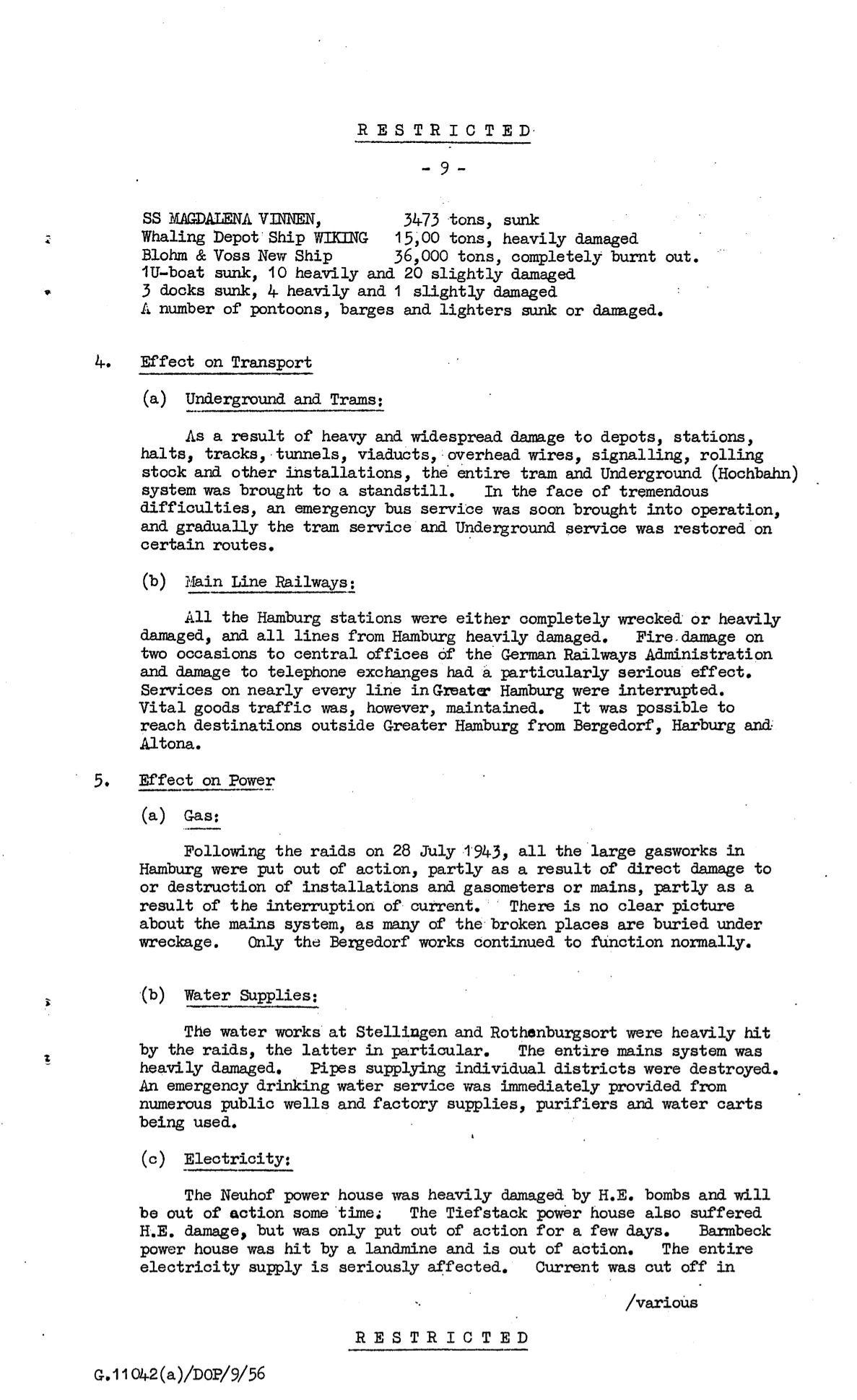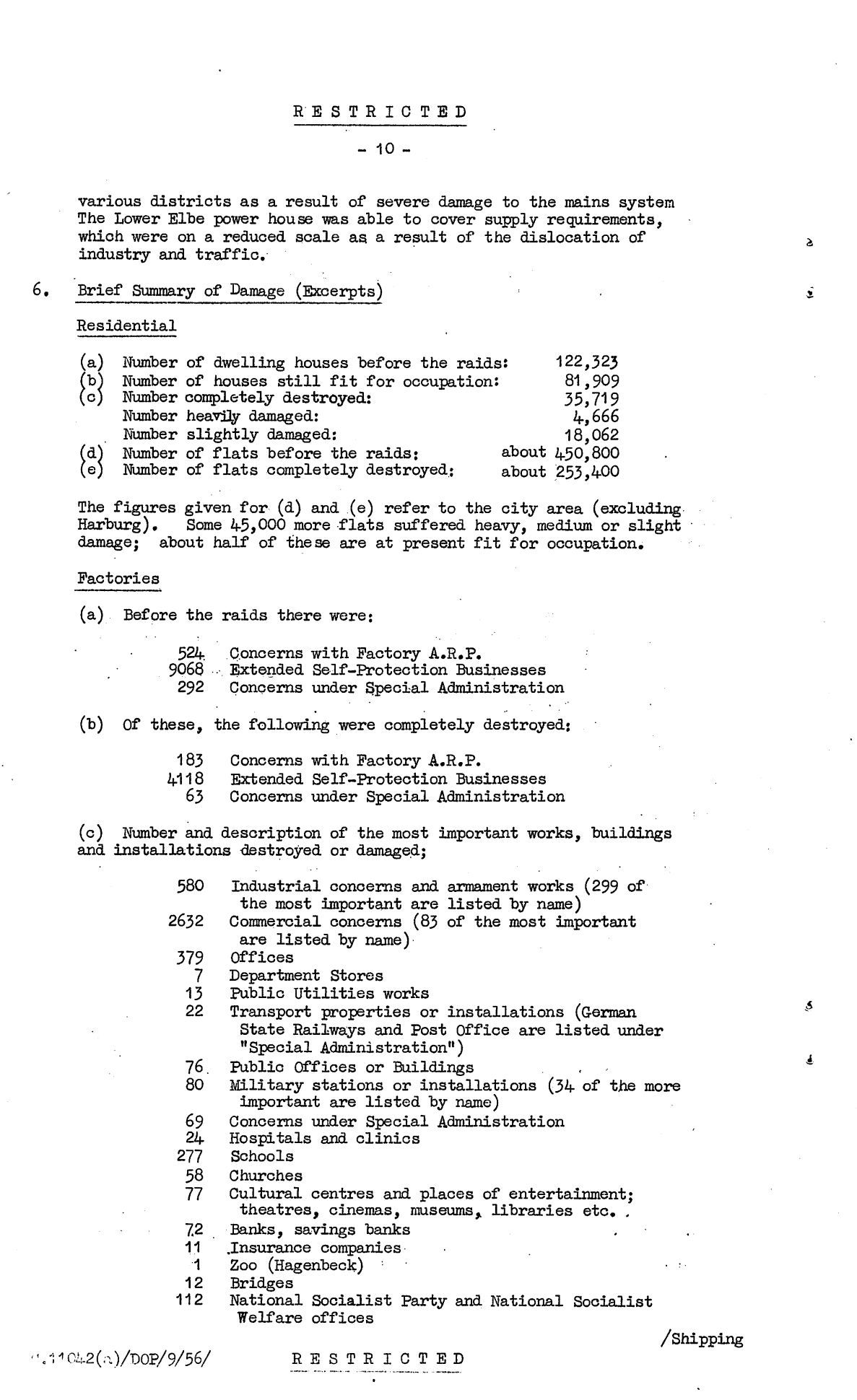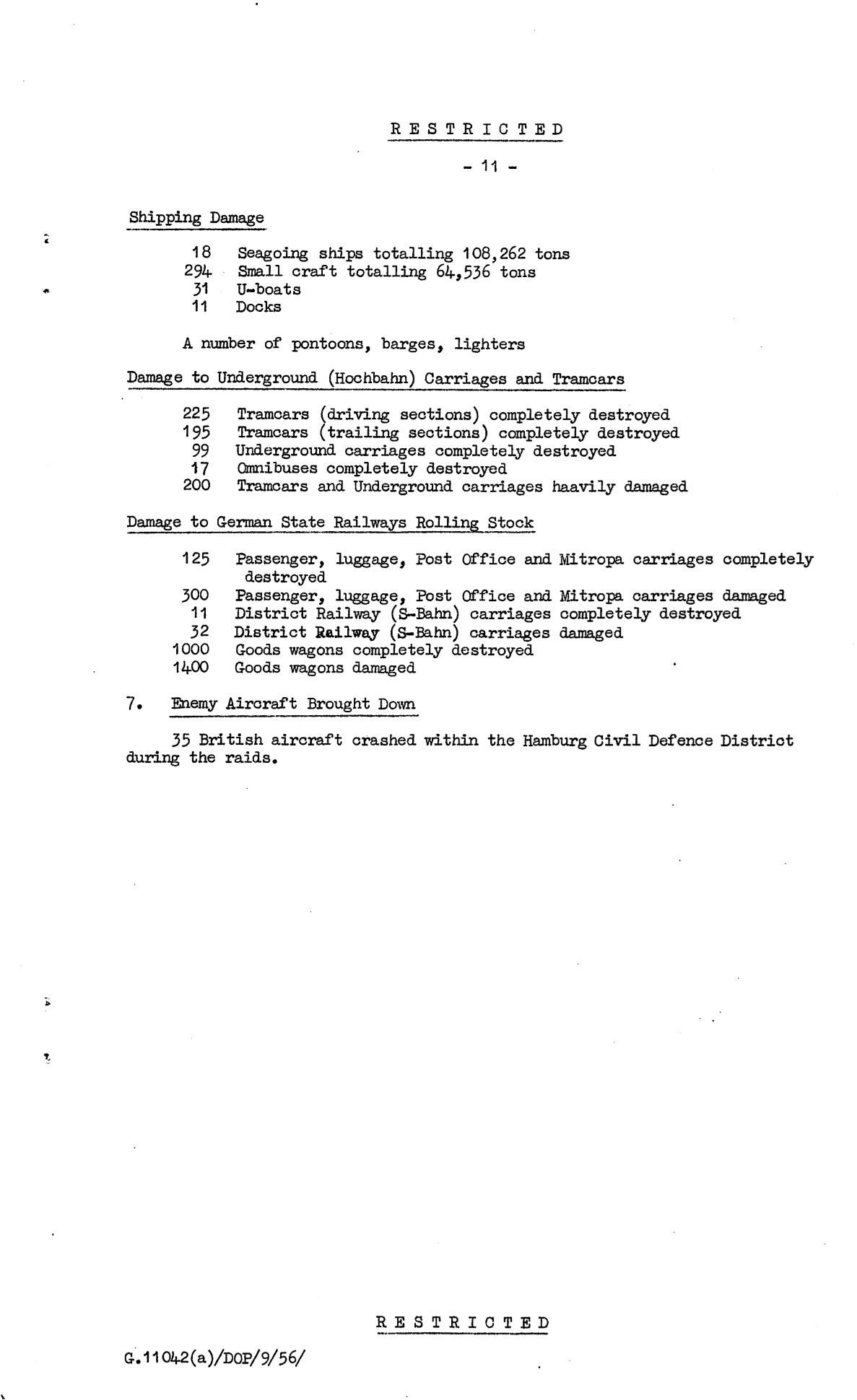
On the night of July 24th to 25th, 1943, the British Bomber Command, under the command of Air Marshal Arthur Harris, began the code-named "Operation Gomorrah". In a series of heavy air raids, Allied bomber formations dropped hundreds of thousands of incendiary and explosive bombs on the city of Hamburg over a period of ten days. The Americans flew during the day, and the British fighter squadrons flew hundreds of aircraft at night. Both nations followed different doctrines. The British command placed importance on area bombing under cover of night. For reasons of morale, the Americans carried out tactical target bombing during the day in order to keep civilian casualties as low as possible. Right at the start of the operation, the western districts of Altona, Eimsbüttel and Hoheluft were hit and devastated by wildfires. On July 27th, 1943, at 11:40 p.m., the air raid warning sounded again. The inhabitants of the city of 1.5 million reacted immediately and sought out the supposedly protective cellars and bunkers. But what the people experienced on the night of July 28th exceeded anything previously imaginable. The ensuing inferno destroyed large parts of the east of the Elbe metropolis. A heat wave and drought that had previously lasted for weeks also contributed to the phosphorus incendiary bombs causing veritable firestorms.

Dropping window tinfoil strips to disrupt German radio tracking by an Avro Lancaster.
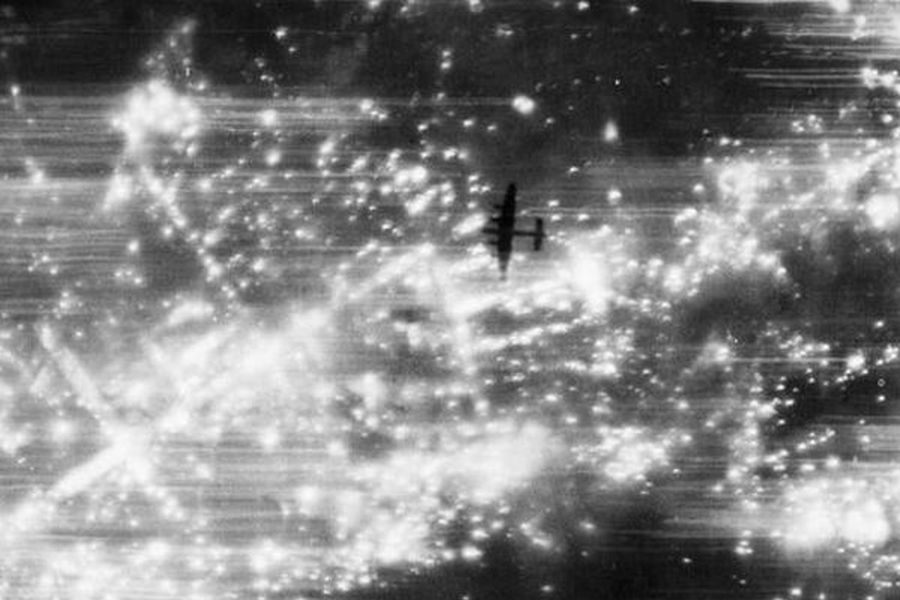
A Lancaster above the firestorm on the ground.

Beam of the anti-aircraft searchlights.
The decisive factor for the success of Operation Gomorrah was the elimination of German long-range aerial reconnaissance, control of the night fighters and fire control of the air defence. Based on the knowledge gained from the technology of the Würzburg equipment, the Allies were able to take effective jamming measures for the first time. British aircraft flying ahead and the leading aircraft of the bomber stream dropped "window" strips of tin foil with a length of 26.8 cm (= half the wavelength of the Würzburg and the larger Würzburg Riese radars 53.6 cm) to disrupt the German radars. The devices used to guide the night fighters and the "Würzburg" for fire control of the heavy anti-aircraft guns were largely completely out of action as a result. During night missions, another unit of bombers was also located just ahead of the main bomber stream. This small troop was called Pathfinder and marked the flight corridors in the air on the way to the target, especially the points of course changes. Colored "sky markers" (waypoint markers) were then dropped along the flight paths at coordinates determined by the British radio navigation system "Oboe" and the Pathfinder on-board navigation radar "H2S". These were either corresponding flare bombs that fell to the ground hanging on parachutes, or corresponding models that marked the waypoint while burning on the ground. The target area itself was marked by the "Pathfinders" on the outer edges with corresponding "Flir bombs", which made the drop zone clear to the bombers at night. In German, they were called "Christmas trees" because of their shape in the sky. The first thing the Cuxhaven anti-aircraft batteries noticed shortly before the first bomber formations flew over was the massive interference in places with their modern radio measuring devices. This meant that it was sometimes no longer possible to work with the very precise "optical target fire" variant. In the meantime, it was necessary to switch back to conventional, less precise "planned fire" (using listening devices). During this phase of the air raids on Hamburg and the associated waves of hundreds of bombers, the air defense was constantly tied up in defensive battles. Between the main attacks, Allied reconnaissance aircraft and smaller bomber formations repeatedly flew over the Elbe-Weser area for diversionary missions. However, the units at Nordholz Air Base were also involved in aerial battles with the incoming bombers. At this time, parts of the 3rd/JG 26 "Schlageter" fighter squadron with their Messerschmitt BF 109 G, as well as the 7th Squadron of the 1st/NJG 3 with their Messeschmitt BF 100 G4 night fighters were stationed at the base.
24/25.07.1943 - Combat reports from the first overflight of Allied bomber formations during "Operation Gomorrah" in the Cuxhaven sector.
This was a major attack on the city of Hamburg with 728 heavy British bombers. The target was the industrial infrastructure in the north of the city and the entire central port area. It was the first of a total of four night missions during the entire operation. The well-known sights hit in the attack included the town hall, St. Nicholas Church, the main police station, the main telephone exchange and the Hagenbeck Zoo. Around 1,500 people were killed. 31 Allied aircraft were lost in this mission due to German anti-aircraft fire, night fighters or other influences, and 12 aircraft remained missing.
24/25.07.1943 - Abschließender Bericht des britischen Bomber Kommandos zum Luftangriff in dieser Nacht. RAF Night Report 383.
The majority of the British bomber force took part in the attack on Hamburg that day. There were also further diversionary measures in the form of smaller bombing missions and general sea mine laying by aircraft, this time in the mouth of the Elbe.
Quelle: https://www.lancasterbombers.net - Bomber Command History
25.07.1943 - Daytime attack by the 8th Air Force of the USAAF with 218 bombers on Hamburg and Kiel
Am Nachmittag des 25. Juli 1943 griffen etwa 90 bis 110 US-amerikanische Bomber (91st, 351st, 381st Bombardment Groups (BG) [= 1st Combat Bombardment Wing (Bomb Wing)], 303rd, 379th, 384th Bombardment Groups [= 41st Combat Bombardment Wing (Bomb Wing)]) Industrieanlagen und Ziele im Hamburger Hafen an. Sie versenkten mehrere Schiffe und trafen einige Mineralölbetriebe. Wegen der starken Rauchentwicklung durch den vorausgegangenen Nachtangriff der RAF konnten viele Ziele nicht gefunden werden. Bei diesem ersten Tagangriff warf die USAAF binnen zehn Minuten etwa 186 Tonnen Sprengbomben ab und verlor fünfzehn Bomber vom Typ B-17 infolge heftiger Abwehrmaßnahmen durch Flak und Jäger. Die 381st Bombardment Group (BG) konnte ihre Bomben erst während des Rückflugs zur Nordsee über Heide (Holstein) abwerfen.
Those: https://de.wikipedia.org/wiki/Operation_Gomorrha
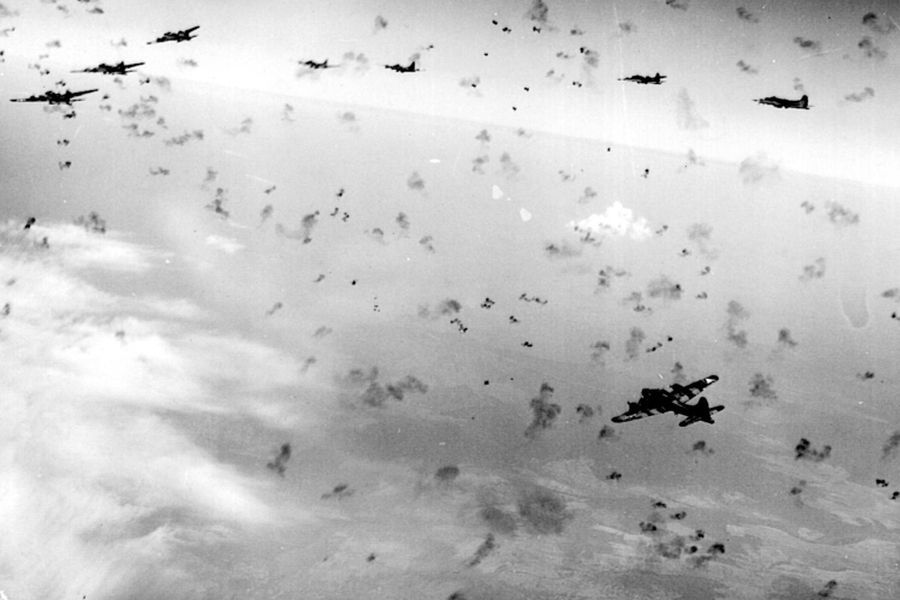
A B17 formation under heavy fire
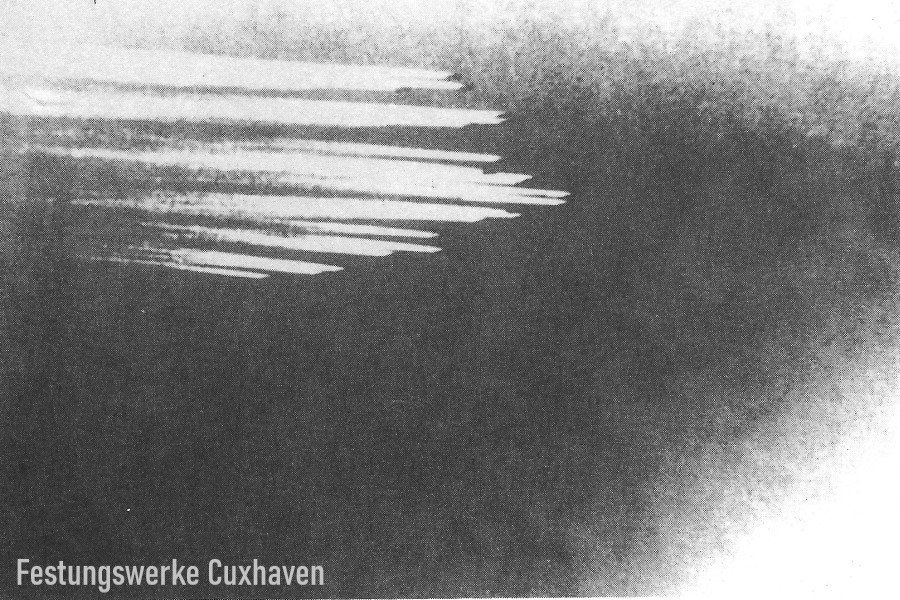
Flights over the Kugelbake battery
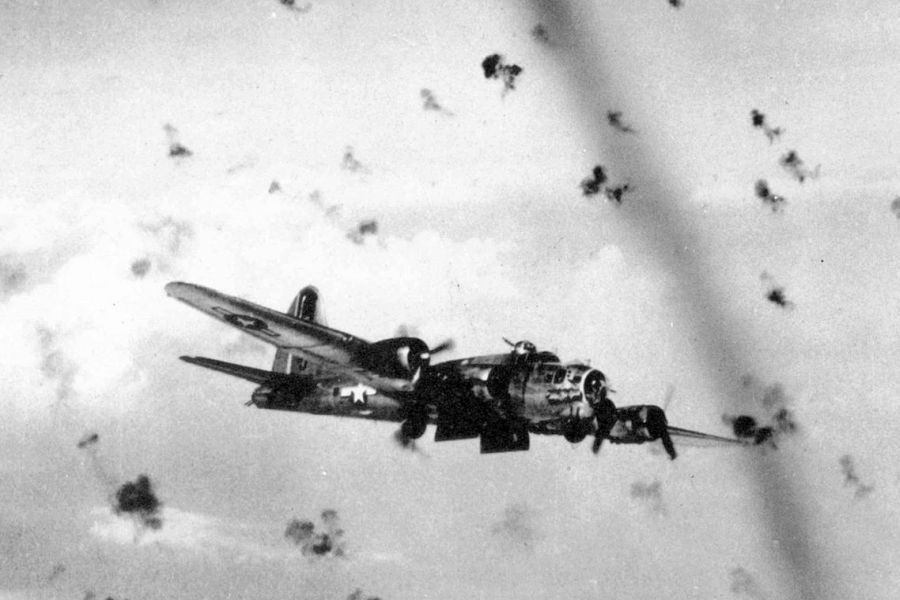
A Boeing B17 in the target area
26.07.1943 - Daytime raid by the 8th Air Force of the USAAF with 218 bombers on Hamburg
At midday on July 26, 71 US bombers attacked targets in the port of Hamburg. The Neuhof power plant was also hit. Around 150 people died in the two daytime attacks. No further background information is available.
27/28.07.1943 - Heavy air raid on the eastern districts of Hamburg, with Cuxhaven being overflown during the outbound and return flights.
787 aircraft, including 353 Lancasters, 244 Halifaxes, 116 Stirlings and 74 Wellingtons of the RAF, returned to Hamburg that night. This time it hit the districts of Grasbrok, Billwerder-Ausschlag and St. Georg. It was the night of the firestorm, which began with an unusual and unexpected chain of events. The temperature was particularly high (30 °C at 6 p.m.) and the humidity was only 30% that day. It had not rained for some time and everything was very dry. The concentrated bombing raids that night caused numerous fires in the densely built-up working-class districts of Hammerbrook, Hamm and Borgfeld. Most of Hamburg's fire engines were in the western parts of the city, putting out the fires still smoldering there from the previous air raids. In addition, only a few firefighting units were able to pass the streets, which were blocked by building debris. At the beginning of the attack, high explosive bombs and aerial mines were dropped to destroy the roofs of the buildings. Then, on the next approach, large quantities of phosphorus stick incendiary bombs fell from the sky, setting fire to the open roofs of the buildings. About halfway through the attack, the fires in Hammerbrook began to merge. The entire area turned into one large fire, with air being drawn into it with the force of a storm. This created a vortex with an updraft of superheated air that created a high fire tornado. The bombing continued for another 30 minutes, gradually expanding the firestorm area to the east. It is estimated that 550 - 600 bomb loads fell in an area of just 2 x 1 kilometers. The firestorm raged for about three hours and only subsided when all the combustible material had been consumed. The burned-out area consisted almost entirely of residential areas. About 16,000 multi-story apartment buildings were destroyed. There were only a few survivors from the firestorm area.Source: https://airgunnerbobgilldfm.wordpress.com/raf-graveley/hamburg-raids/Using the same navigation procedure and once again disrupting the German remote sensing, the large formations flew precisely into the area marked by the Pathfinder to drop their bomb load. 17 British bombers were missing after aerial combat, 49 were badly damaged by anti-aircraft guns and fighters. The Cuxhaven sector was completely overflown, which resulted in massive bombardment by the Navy's heavy and light anti-aircraft batteries.
29/30.07.1943 - Another night attack on Hamburg, Cuxhaven is flown over by larger bomber formations.
The third major air raid on Hamburg was carried out by 777 Royal Air Force bombers in six waves. These included 340 Lancasters, 244 Halifaxes, 119 Stirlings, 70 Wellingtons and 4 Mosquitos. This time the target was the built-up area in the north-east of the city. Despite the clear sky, the smoke clouds from the previous attacks blocked the precise view of the marked area. Despite their H2S ground radar, the Boy Scouts came about 1.5 kilometers too far east and marked an area south of the destroyed firestorm area. The bombing raids by the main forces fell back about 3 kilometers to the already destroyed area. However, there was also very heavy damage in the districts of Wandsbek and Barmbek, as well as parts of the districts of Uhlenhorst and Winterhude. These were all residential areas in which there was an extensive fire area. A total of 2,318 tons of bombs were dropped, but there was no firestorm, which the exhausted Hamburg fire departments were unable to counter. The Royal Air Force lost 27 aircraft in this operation, and 23 bombers were damaged by anti-aircraft guns and fighters.

The four guns of the Kugelbake battery in defensive fire against Allied bombers.

American Boeing B 17 approaching Hamburg still over the sea.
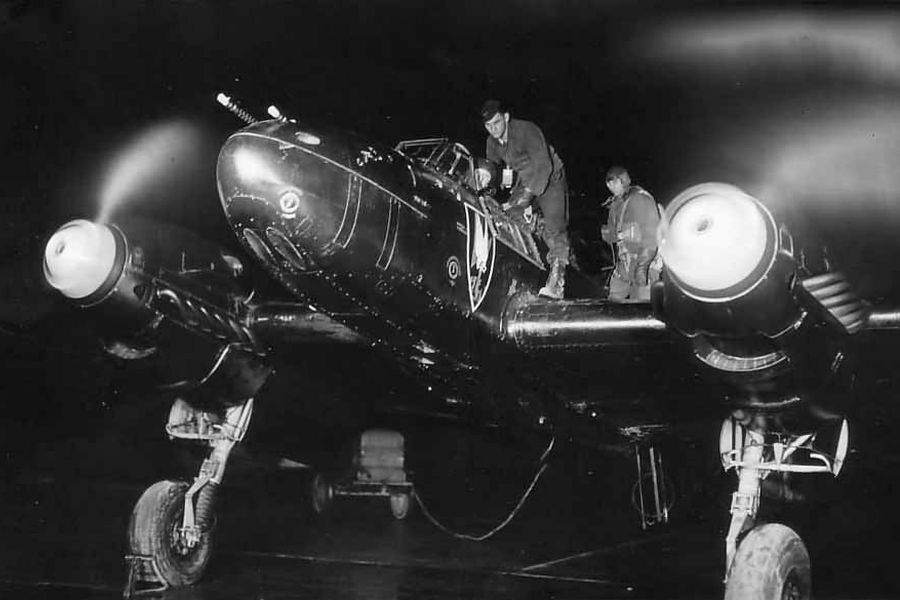
Ein deutscher Nachtjäger Messerschmitt BF 110 Zerstörer kurz vor dem Abflug zum Einsatz.
02/03.08.1943 - Fourth and last heavy air raid on the city of Hamburg as part of "Operation Gomorrah". The heavy overflights over the sector again challenged the Cuxhaven anti-aircraft units.
On the fourth night since July 24, 1943, a bomber force of 740 aircraft was sent to attack Hamburg. The force consisted of 329 Lancasters, 235 Halifaxes, 105 Stirlings, 66 Wellingtons and 5 Mosquitos. As the planes approached the mouth of the Elbe, large cloud formations with corresponding thunderstorm dynamics were already building up. During the final phase of the flight to the target area, however, the storms made the flight conditions so severe that the attack largely got out of hand and became a disaster. As a result, less than half of the bombers were even able to reach Hamburg. In the adverse weather conditions, many aircraft instead attacked anti-aircraft positions and targets of opportunity in the vicinity of Bremen, Wesermünde and Cuxhaven. However, no major damage was reported as a result of this. But the city of Hamburg was also hit hard in many places. The consequences were again high human losses and severe destruction. A good 30 English bombers were lost during the attack, partly due to German air defenses. However, it is assumed that most of the planes crashed as a result of collisions with one another in poor visibility, lightning strikes and other weather-related influences.
After a total of six heavy air raids by the Royal Air Force and the USAAF, two thirds of Germany's second largest city lay in ruins. A huge part of the industry, port infrastructure and residential buildings were destroyed. The exact number of victims of Operation Gomorrah cannot be determined. By November 30, 1943, 31,647 dead had been recovered, of which 15,802 could be identified. The total number of victims is estimated at 34,000 dead and 125,000 injured. A total of 277,330 homes, 580 industrial plants, 2,632 commercial establishments, 80 Wehrmacht facilities, 24 hospitals, 277 schools and 58 churches were destroyed in the attacks. In the port, commercial and port vessels with a total of 180,000 GRT were sunk. In the course of the air battle, 87 Allied bombers were shot down, 552 Allied airmen were killed, 65 of them captured and 7 interned in Sweden. On the German side, the Luftwaffe's losses along the flight routes of the Allied bombers were around 70-80 machines of various types. Although the Quartermaster General's documents are available, the precise number cannot be determined with 100% certainty due to the poor quality of the documents in some places. Source: https://de.wikipedia.org/wiki/Operation_Gomorrha, MB
Bericht über die physischen Schäden der Luftangriffe während der Operation Gomorrha in der Stadt Hamburg
The heavy raids on Hamburg in July/August are not covered in the main body of the document. They were covered in another report (CD.706a) under ARP/CD (Air Raid Precautions) aspects.Published by the British Air Ministry, AHB6., October 1956, G.11042/NIR/9/56/
The Cuxhaven naval anti-aircraft division was on permanent alert during the many overflights and was involved in several heavy anti-aircraft battles. During the attack on August 3, 1943, it suffered losses when a bomb hit the "Light Group 7" in Groden, killing 7 soldiers. Although the attacks by the Allied aircraft were still being flown without their own fighter protection at this time, the bomber units were very defensive. A double-digit number of German fighter aircraft were sent to the ground by on-board weapons fire during the defensive battle in the flight corridors and in the target area. Source: MB
Special thanks go to Dom Howard, administrator of the Bomber Command History website, for providing scans of the RAF Night Raid Reports. I would also like to thank Professor Heather Hughes of IBCC University in Lincoln/UK for permission to publish the mission report of the Squadron Leader of 103 Squadron/RAF.




